
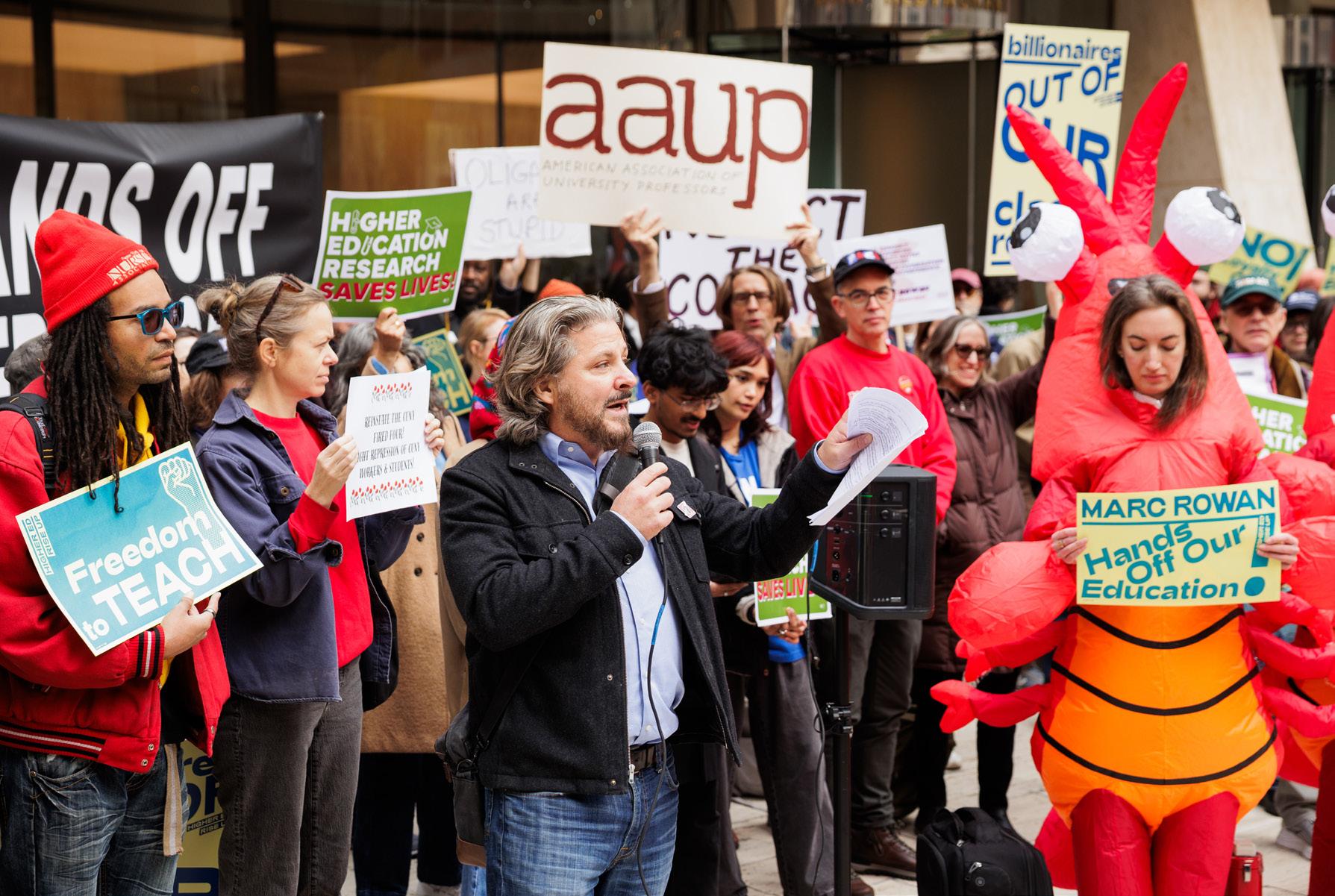



By SIENNA REINDERS NEWS EDITOR
Fordham University faculty and students attended a protest against Marc Rowan and the Trump administration’s “Compact for Excellence in Higher Education” on Nov. 7. The demonstration was organized by the American Federation of Teachers, American Association of University Professors (AAUP),
National Education Association and Sunrise Movement. It was one of over 100 held around the country that day as part of a nationwide “Higher Education Day of Action” to push back against government intervention in higher education.
“Higher education is a public good. It’s good for democracy, it’s good for the economy. And so it’s worse for all of us if it gets controlled one
By JORDAN DONEGAN STAFF WRITER
Producers of the new graphic novel adaptation of Sister Helen Prejean’s 1993 best-selling memoir “Dead Man Walking” participated in a panel discussion hosted by Fordham’s Center on Religion and Culture (CRC) at St. Paul the Apostle Church on Nov. 6. In the memoir, Prejean, who also participated in the panel, describes her experience accompanying an inmate on death row for the murder of two teenagers during his final moments. She received an honorary doctorate of Humane Letters from Fordham University in 2024 for her tireless work against capital punishment. Regarding the release of the graphic novel, Prejean
described it as the “final wave” towards permanently abolishing the use of capital punishment in the United States.
Among the panelists were Rose Vines, the author of the graphic novel, and Catherine Anyango Grünewald, the illustrator. At the event, they were joined by CRC Director David Gibson, who facilitated the conversation.
During the panel, Prejean described the death penalty as a “secret ritual” that is hidden from the public. This, she says, coupled with her experience witnessing multiple executions carried out by the U.S. government, is what has sparked her instrumental activism towards abolishing capital punishment.
“I wrote about a man on death row, and then I went
SEE BOOK, PAGE 6
way or the other from the outside,” said Tom Beaudoin, a professor of religion at Fordham and president of Fordham’s chapter of AAUP.
“When higher education suffers from unjust incursions, the country suffers.”
The “Compact for Excellence in Higher Education” is a document that was sent to nine universities by the Trump
SEE PROTEST, PAGE 4
By JACK MCDONALD ADVERTISING DIRECTOR
Fordham University’s department of Arts & Sciences recognized five faculty members at the James C. McGroddy Award Ceremony for Innovation in Education on Nov. 4. The event featured a panel discussion with award winners, moderated by Judith Jones, associate professor of philosophy. Panelists reflected on teaching, interdisciplinary collaboration and celebrated how Fordham’s faculty shapes the academic and personal growth of students. The ceremony is named for James. C. McGroddy, Ph.D., a distinguished Fordham donor in climate sciences.
This year’s winners were Carey Kasten, Ph.D., and Leo Guardado, Ph.D., who won for their work on Fordham’s Initiative on Migrants, Migration and Human Dignity.
Kasten is a professor of Spanish whose work features a partnership with several organizations, including the Little
By JORDAN DONEGAN STAFF WRITER
Isabel Vincent, Fordham University adjunct journalism professor and senior reporter at the New York Post, recently released her new book “Gold Bar Bob: The Downfall of the Most Corrupt U.S. Senator,” alongside co-author Thomas Jason Anderson. The book compiles 15 years’ worth of investigative reporting on the now disgraced New Jersey Senator Bob Menendez. The book chronicles how Menendez constructed his nearly 50-year-long political career and how foreign influence, corruption and federal charges ultimately led him to an 11year sentence in federal prison. Vincent recounted that while the book was largely centered around Menendez’s individual corruption, her ultimate goal was to highlight the other forces that defined his corruption, such as Cold War era Cuban exile groups, political figures from his home town Union, New Jersey
By ANDREW MASSIE & ALEXANDRA PFAU
Fordham University celebrated the recipients of the 25th Ann M. Sperber Book Prize on Nov. 11. The prize was awarded to journalists Connie Chung and Ali Velshi. Chung was honored for her book, “Connie: A Memoir,” and Velshi for his, “Small Acts of Courage: A Legacy of Endurance and the Fight for Democracy.”
The Sperber Book Prize is awarded to authors of outstanding biographies relating to media and journalism. Amy Aronson, Ph.D., director of the Sperber Prize and a professor of journalism and media studies at Fordham University, said that this year, Fordham presented a Special Career Achievement Award as a way to recognize the prize’s larger story of
journalism in the world.
“We wanted to honor the prize’s history while expanding its reach,” Aronson said. “That rigorous, truth-telling journalism is essential to a healthy democracy — and that the ideals embodied by the Sperber Prize
are worth championing.”
Velshi’s book told the story of his family’s journey through numerous countries, eventually ending in Canada and the United States. He wrote about the ways that migration shaped
SEE SPERBER PAGE 4
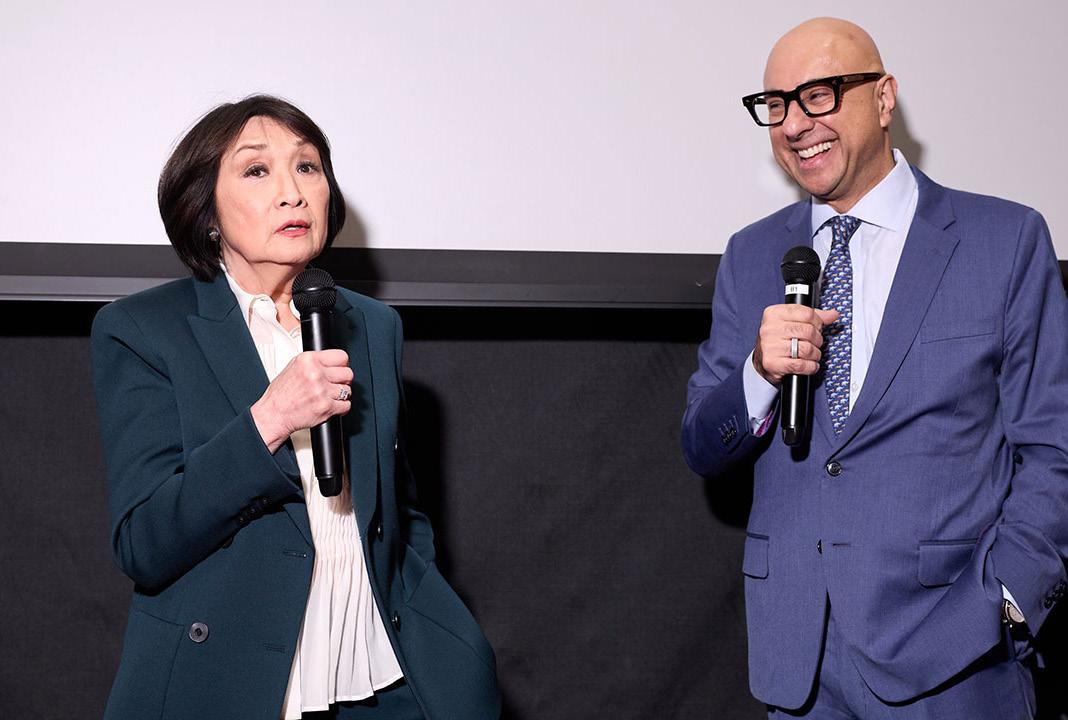
Fire Alarm Nov. 17
8:47 a.m.
On Monday, there was a fire alarm in O’Hare Hall. The supervisor responded. The investigation revealed that contractors working in the basement triggered the alarm. The supervisor ventilated the area and reset the alarm panel.
Robbery and Assault Nov. 15
3:05 a.m.
On Saturday, two students reported that while standing on the corner of Arthur Avenue and 189 Street, 10 males attacked one of them for no reason. The offenders punched the students in their face, head, and body. One student recorded the incident on their cell phone. One of the offenders snatched the phone from the student’s hand. The offenders fled in a late-model Mercedes-Benz. The supervisor contacted the NYPD to respond and prepare a report.
On Sunday, Nov. 16, 2025, at 10:30 a.m., a student was present at the Health Center and reported that they were also assaulted by the males and suffered a broken nose. The supervisor responded and transported the student to Montefiore Hospital.
Fraud Nov. 13
12 p.m.
On Thursday, a student reported receiving an email with the subject “A Thoughtful Donation Opportunity for Students and Staff.” The investigation revealed that the email was fraudulent. Fordham Information Technology blocked the sender from sending any additional emails. The reporter did not suffer a financial loss and declined the NYPD.
Fire Alarm Nov. 11
11:23 p.m.
On Tuesday, there was a fire alarm in Thebaud Hall. The supervisor and FDNY responded. The investigation revealed that an employee cooking food triggered the alarm. The supervisor ventilated the area and reset the alarm panel.
Wednesday Nov. 19
MOSAIC Fall Mixer
Angel of Harlem
6:30 p.m.
Join the MOSAIC alumni chapter for a special fall mixer! Enjoy an evening of drinks and networking at Angel of Harlem. Registration is $15 and includes appetizers and your first drink.
By JACK MCDONALD ADVERTISING DIRECTOR
Jamie Serruto, FCRH ’23, recently won his candidacy for the Township Committee in Millburn-Short Hills, New Jersey.
Serruto ran alongside Kris Heinrichs on the Republican ticket and the two defeated Democrats Annette Romano and Michael Cohen.
Serruto most recently served as President of the MillburnShort Hills Fourth of July Committee. He graduated from Fordham University in 2023 with a Bachelor of Arts in political science and a minor in urban studies.
His campaign was run on six strategic issues: providing security at all costs, promoting safety above all else, opposing reckless overdevelopment, safeguarding the best schools, resisting outside influence and respecting residents’ input.
Serruto described himself as a proud Fordham alumnus. He said the race was a significant challenge for him, as he was the only Republican to flip the seat in the New Jersey race.
“I’m a man of faith, and I thank God for all the opportunities provided to me,”
Serruto said.
Serruto was class president in high school and the youngest elected official in New Jersey history when elected to the Board of Education in Millburn-Short Hills in November 2019 — he served three years on the board. Now Serruto is the youngest elected
councilman in Millburn-Short Hills history.
At Fordham, Serruto was involved in the United Student Government (USG), where he served as a senator and, as a senior, vice president of Facilities and Dining. Serruto was also involved in Campus Ministry, particularly in the University Church, where he served as a lector and eucharistic minister. He was involved in Praise & Worship Adoration and Java with the Jesuits, two popular Campus Ministry programs.
“I feel a sense of duty to God and to [the] country,” Serruto said when reflecting on the strong ethics and morals that Fordham instilled in him. “I think, obviously, we talk about cura personalis and care for the whole person … That’s leadership I try to bring.”
Serruto said that he strives for the magis — a Jesuit philosophy of striving to do and be more — when running for office.
“I’m responsible for overseeing a community of 20,000 people, and that’s from [an angle of] financial, infrastructure and long-term planning,” he said.
Serruto said he looks forward to creating vibrancy, community and connections in his new role. He also reflected on the impact the Jesuits in Spellman and Cizsek Halls had on him.
“I think the Jesuit community at Fordham — those in formation and those ordained — did have a strong impact on
me because you’re learning from different perspectives, you’re learning from different age groups and you’re learning from a process,” Serruto said.
Serruto feels he continues to strive to learn while serving in office, and described himself as forever a learner.
“You’re putting somebody in office to respond to whatever comes on their desk,” Serruto said. “That could be a crisis, that could be celebration, that could be a new challenge, you just never know.”
Serruto said that Fordham and his Catholic upbringing prepared him for this career and gave him the ability to respond to challenges. He also said he feels excited to be the only Republican to flip the seat, largely due to his focus on issues that mattered.
“I was able to get Democrats and Independents to believe that I was the right person, I was able to be the genuine person that I was, bringing my skills and talents to the table,” Serruto said.
Serruto said he transcended party labels in a year marked by significant criticism of the White House and the last presidential election. He knocked on 5,000 doors and called many members of the community.
“When I [heard] this news, I [felt] incredibly energized because I built a connection with most of my community,” he said.
A significant part of his campaign was an attempt to change the community’s
mindset by prioritizing residents over outside influences or developers.
“I ran on the principle that we have to protect our smalltown feel with development that works for our community,” Serruto said. “We can’t overwhelm, because it’s a domino effect, you overdevelop and it affects schools, crime, first responder response times, utilities.”
Serruto explained that areas of the town were heavily affected by pedestrian safety hazards.
“We need proper oversight and long-term planning,” Serruto said. “There are too many band-aid project solutions, not enough actual work.”
Serruto ran on the promise to oppose overdevelopment in Millburn-Short Hills.
“My opponents are responsible for the overdevelopment of our community, and also not standing up to the state and county leadership, many of whom are of the same political party,” Serruto said.
He explained what he believes the town does need.
“We need more grass, less concrete, more fields, less parking garages,” Serruto said.
More generally, Serruto feels that being a councilman is a calling.
“How blessed I am to have this opportunity, and there’s nobody more to thank than God,” he said. Serruto thanked people for seeing the light in him: “The election was an intense time, and you build a lot of trust.”
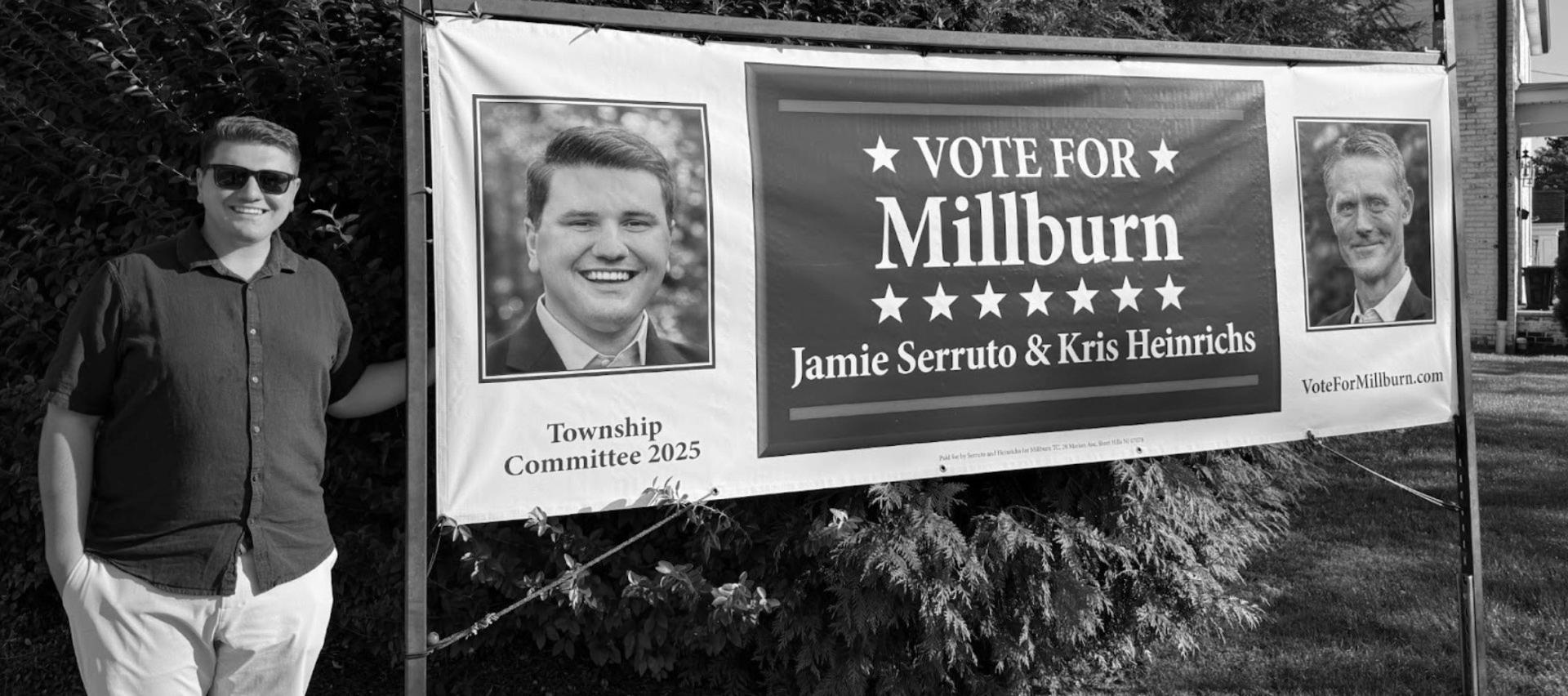
OF
Thursday Nov. 20
CSA
Thanks-Give-Away
McShane Ballroom 5:30 p.m.
Fordham’s Commuting Students Association presents its 2025 Thanks-Give-Away with this years theme “Catch The CS-wAve.” Donations will go to Concourse House, a Bronx nonprofit.
Thursday Nov. 20
“The Tempest”
Pope Auditorium 8 p.m.
Join Fordham’s Theater Program at Lincoln Center as they continue their presentination of “The Tempest” by William Shakespeare. Do not miss the thrilling and memorable story directed by Ryan Quinn.
Saturday Nov. 22
The Nutcracker Ballet
Collins Auditorium 5 p.m.
Join The Fordham Jetés, the university’s ballet club, on opening night as they presents the holiday classic, “The Nutcracker.” Tickets can be purchased in the Instagram bio of @fordhamjetes
Saturday Nov. 22
Water Polo Championship
Messmore Aquatic Center 2:30 p.m.
The Fordham Ram’s Water Polo Team will host the Mid-Atlantic Water Polo Championship. The Rams will play against conference rivals such as Bucknell Unviersity and U.S. Naval Academy.
By ANDREW MASSIE & ANNA GAYTON
At the midpoint of their first term as Fordham University’s Rose Hill United Student Government (USG), Executive President Lucas Hjertberg, FCRH ’26, and Executive Vice President Andrew McDonald, FCRH ’26, point to new internal deadlines, a sweeping bylaws overhaul and an upcoming day of service as proof that they are turning their campaign promises into policy.
In a wide ranging interview with The Fordham Ram and in coverage of every USG and Student Life Council (SLC) meeting so far this semester, they described a student government that is more active as well as organized internally in long term advocacy, while conceding that visible changes on registration, health care transparency and web communications remain largely out of their hands, or are in early stages.
KPIs and Proposals: USG’s new teams are largely on track.
One of the ticket’s central campaign goals was to replace ad hoc proposal work with clear key performance indicators (KPIs) and deadlines attached to their collaborative “proposal teams.”
In their first meeting of the semester on Sept. 4, Hjertberg announced that instead of senators drafting proposals individually, he would create teams of senators with the goal of “five fully planned proposals to enact by the end of the semester,” each required to give weekly progress reports.
USG has split senators into four proposal-writing teams, each with a firm expectation that its proposal be “created by and voted on by the end of the semester.” These teams are the Governing Documents Commission, Proposal to Create a Senior Survey, Proposal to Improve Registration Website, Proposal to Improve Summer Living Conditions and Proposal to Offer Lower Level Meal Plans.
Each weekly USG article records proposal team updates and new initiatives, suggesting that, at least procedurally, the internal KPI framework the ticket promised is in place and operating as described.
Bylaw Revisions: A longdelayed overhaul to start making moves.
Also at the Sept. 4 meeting, Hjertberg also described USG’s constitution and bylaws as “archaic” and “unrevised for years” and announced a new commission to review them.
In the interview, he said the commission is ahead of schedule on the bylaws document and framed the project as the first comprehensive rewrite of the constitution since a past
administration’s impeachment reform.
By late October, the Fordham USG Governing Documents Commission reported that it had “finished reorganizing the Senate portion of the USG bylaws,” removed a section on voting delegates and was adding a new section that would allow senators to serve as delegates to organizations where they are already involved.
USG has not yet voted on the full package of changes, but the executive ticket’s timeline and the meeting record align: a commission that did not exist in September is now bringing revised bylaws to the Senate.
Health Center Transparency: No proposal moves have been made so far this year.
When they were candidates, Hjertberg as well as McDonald had pledged “health center transparency,” tying that phrase to concerns about pricing and walk-in wait times.
Hjertberg pointed backward rather than to new legislation. A “Health Center Transparency” proposal was passed at the end of the previous semester, under a separate administration. USG this year has not published any new health center transparency proposals.
Hjertberg says he is working on a “harm reduction vending machine” project that would expand access to supplies. This is the first time this idea has been mentioned to student media.
He described the vending machines as “longer term” and acknowledged that the larger issue of health center communication is “tricky” and depends on administrators.
The Ram reached out to Vice President of Health and Security Aidan Costella, FCRH ’27 but did not receive a response.
The executive ticket’s role this semester has been limited to following through on last year’s Health Center proposal and is in the early stages of work on harm reduction infrastructure.
Registration Fixes: Proposals have passed, but progress is now out of USG’s hands.
Fixing the class registration system and pre-professional information website is another marquee promise. On Oct. 2, USG designated new proposal committees, which includes one tasked with improving the registration website.
At the Oct. 30 meeting, USG senators working on the registration proposal presented specific changes such as limiting search results to classes actually offered that term, aligning the search function with students’ plan-ahead schedules along with course attributes, adding syllabi and travel time indicators and addressing classes reserved for professional and also the
continuing studies students.
In the same USG meeting, the senators noted that the university's Information Technology (IT) is piloting a separate registration aid website, first tested with Fordham College at Rose Hill (FCRH) and now with Gabelli School of Business (GSB) students, with a target of making it available to all students in the spring of 2026.
When asked in the interview when students should expect to see registration changes, Hjertberg was blunt. “If only we knew,” he said, adding that “the ball’s in IT’s court” and that the executive board does not want to give “false hopes with a timeline that we can’t stick to.”
The pattern is similar as the one on the Experiential Learning platform and preprofessional website. On Oct. 2, Hjertberg told the Senate he had contacted the Career Center about listing research opportunities that are on Handshake and RamConnect and was told that the Career Center’s own IT office was working on updating the pre-professional site.
A week later, the Career Center briefed USG on two of the possible platforms and confirmed that while they could add an Experiential Learning module as well to RamConnect, they also could not give a firm timeline for the migrating of the preprofessional site.
When taken together, the proposal team has looked into most of what it can procedurally on registration and experiential learning, but the underlying systems are controlled by university IT and Career Center offices that operate on multi year timelines.
The executive ticket has backed a more selective approach to approving new clubs, arguing that capacity, money and space are finite.
On Oct. 2, Vice President of Operations Tina Pathak, FCRH ’28, told the Senate that her committee is “being a bit more selective with approving new clubs.”
When asked what metrics would be used to judge that policy, Hjertberg said in the interview that the decision belongs to Pathak as operations chair and that he and McDonald support her judgment. He noted that USG already recognizes about 170 clubs and that more than 30 new groups are headed towards approval, and would bring the total close to 200.
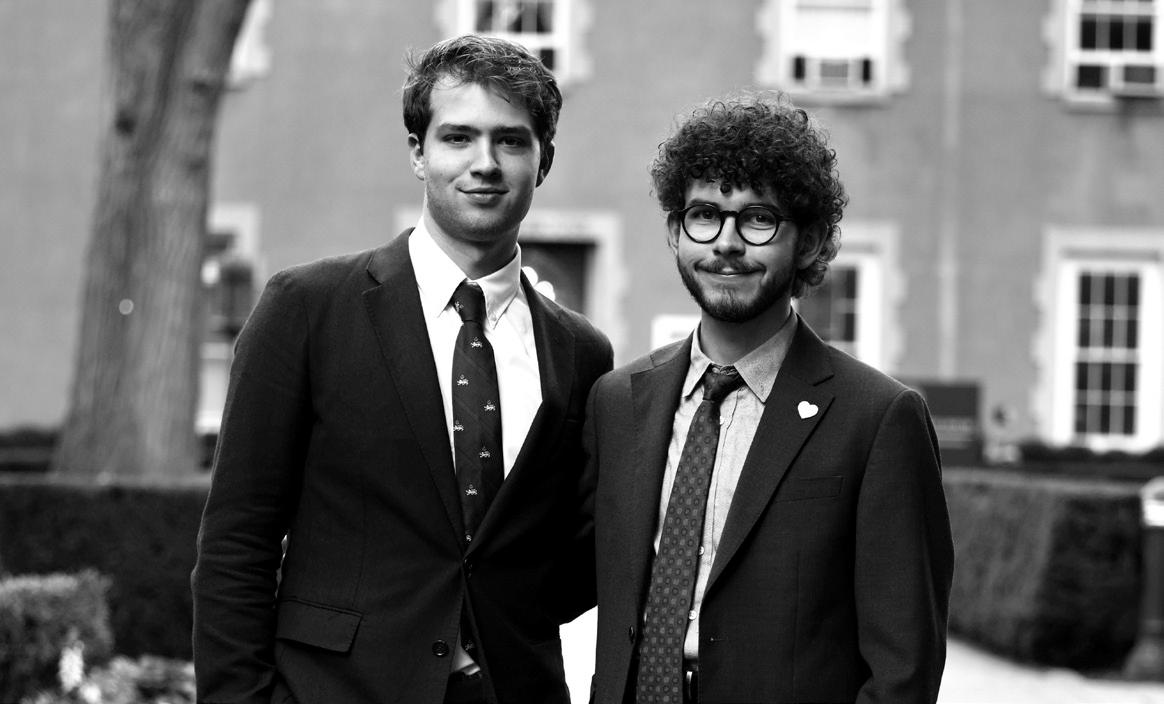
McDonald had added that some of the proposed clubs have “too much overlap with pre-existing clubs” or lack “real enthusiasm,” and pointed to constraints on funding, student time and physical rooms.
On spending, USG minutes show repeated approvals for prizes and food, from raffle items for Keating Steps to ice cream and cookie trays for events like “Packets and Pastries.”
In the interview, Hjertberg defended that pattern as “USG tradition,” arguing that without incentives, students often do not attend events.
“We will continue to spend the little amount of money that we do spend on that,” he said, while noting that USG also runs tablings that do not require funding.
McDonald also tied that strategy to the “block-funded” structure, meaning that if it does not use its full allocation, it risks receiving less funding the following year. McDonald described USG as “a bank for clubs” and said that any unused funds may “just go away.”
At the same time, the executive ticket has redirected discretionary money toward off-campus needs. On Oct. 30, USG voted to use extra discretionary funds for a day of service to support local food security.
In the interview, Hjertberg linked that decision to federal cuts to Supplemental Nutrition Assistance Program benefits for New York City, saying “there is an intentionality on the food that we’ll be boxing up.”
USG’s day of service supplied about $2,000 worth of food to the Bronx nonprofit Part of the Solution.
Communication: Instagram is prioritized while the USG website remains outdated.
The ticket also campaigned on improved transparency and communication.
USG’s website is currently outdated in several areas.
Hjertberg did also attribute delays to the turnover in the communications seat and the logistical challenge of collecting headshots and biographical details from more than 30 USG members, especially
after first-year elections. He said the representatives page “usually doesn’t get updated till November” and predicted it would be fully updated within “the next week or week and a half,” including a list of all committees and their members.
He defended the site as “still a great place to go” for information on starting clubs and viewing the semesterly budget spreadsheet.
On the long-promised midyear report, his assessment was less optimistic. Hjertberg called it “something that has always plagued USG,” as he described the duty of compiling every committee’s outreach as “a tall task, especially for a new comms person.”
In practice, the executive ticket directs students to social media. “The way to get the most up-to-date information would be our Instagram,” Hjertberg said, calling it “more accessible” and emphasizing that it is where USG posts meeting details, Senators of the Month, Clubs of the Month and special election notices.
A Mixed Record, With Clear Limits: The Next Steps
Across internal governance, the executive ticket has largely delivered what it promised. KPIs, proposal teams and a long-delayed bylaws overhaul exist and are moving on concrete timelines.
On high-visibility issues, registration tools, the health center transparency, as well as some experiential learning websites and cross-campus integration, the record shows serious engagement and also detailed proposals, but also hard limits on USG’s power over administrators and IT offices that control the systems students use every day.
Regarding communication and transparency, progress is uneven. The executive ticket relies heavily on Instagram, and while it has plans for updated web pages and feedback forms, the mid-year report and other static documents that remain difficult to find or outdated.
The next test will be whether the structural changes they have put in motion and the relationships they have built translate into improvements by the end of the academic year.
administration on Oct. 1. It outlines a list of demands that the universities were asked to agree to in exchange for preferential federal funding.
Some of the demands outlined in the document include removing affirmative action from admissions decisions, abolishing practices that “purposefully punish, belittle, and even spark violence against conservative ideas,” reducing the international student population at universities, implementing preferential admissions for American students and more.
While seven of the universities have openly rejected the agreement, the University of Texas and Vanderbilt University have not yet made a decision, according to the New York Times.
Rowan is the co-founder, chief executive officer (CEO) and chair of the board of Apollo Global Management as well as chair of the board of advisors of the Wharton School of Business at the University of
Pennsylvania. He helped author the document and has publicly served as a significant proponent of the compact.
In response to the compact, university professors, students and more organized to oppose the document and specifically to oppose Rowan’s influence in political affairs. Fordham’s chapter of AAUP sponsored the protest that took place in Manhattan and assembled a group of 15 faculty members to attend. Beaudoin explained why it is important to speak against Rowan’s role.
“We need to be free to pursue our research and our teachings. Students need to be free to learn … faculty and students need to be free to express ourselves on campus and off campus without penalties,” Beaudoin said.
“So to push back against someone who is a major force behind these compacts, and to push back against the compacts, is to say, as the protests said, ‘Hands off higher education.’”
At 11 a.m., to start the
protest, almost 200 attendees formed a picket line and performed chants while holding signs and moving in a circle as music played, according to Beaudoin.
Several people spoke, including Todd Wolfson, the president of the national AAUP organization. Beaudoin said they also did a demonstration where they announced the schools that were offered the compact and represented their rejection of the document by throwing a copy of the document in a large trash can.
Members of the Fordham Graduate Student Workers Union (FGSW) also attended the protest. Preston Carter, the business agent of FGSW, said that it was important to see both students and faculty fighting for the same cause.
“Seeing students and faculty organize side by side underscored that this is a shared struggle. It’s us versus them, the 99% for education against the 1% for profit
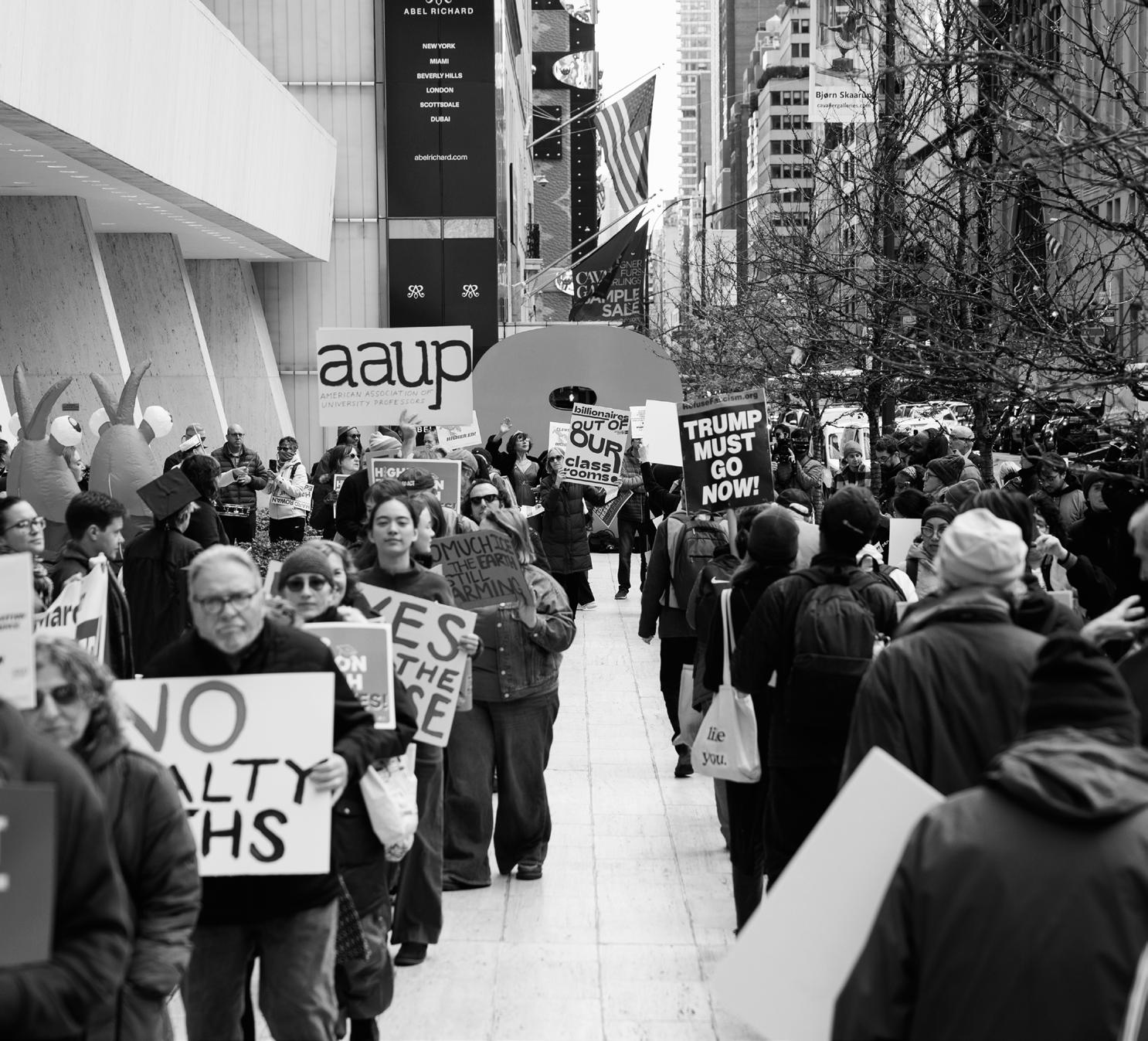
maximization,” Carter said in an email.
Carter also explained why FGSW decided to attend, saying the compact has negative implications for both student workers and international students.
“As graduate workers, our working conditions are academic conditions. When billionaire donors try to dictate what can be taught, researched, or protested, they aren’t just shaping campus politics—they’re shaping our workplace,” Carter said.
“The broader purpose was to insist that academic freedom and the safety of students--especially Palestinian, Black, brown, immigrant, and international students--cannot be ransomed away for donor approval or restored federal funding.”
Members of other AAUP chapters also attended the protest, including those from the University of Pennsylvania, Columbia University, the City University of New York, The New School and New York University, according
to Beaudoin. Other organizations included New York State United Teachers, the Debt Collective and Higher Education Labor United.
“It’s really great to be with other schools and just to see that this is a citywide, high education endeavor, and that it doesn’t matter whether you’re at a private school, a private college or university, public one, a small one, a big one, that we all see this moment is very dangerous,” Beaudoin said. “We want to stand up for what we value about higher education, we want to stand up for our students and we want to keep this enterprise independent.”
Beaudoin said Fordham AAUP and the other participating organizations will continue to take action and hold protests against the government’s attempt to influence higher education institutions. He said the next large demonstration will be held on May 1 and will once again include demonstrations across the country.
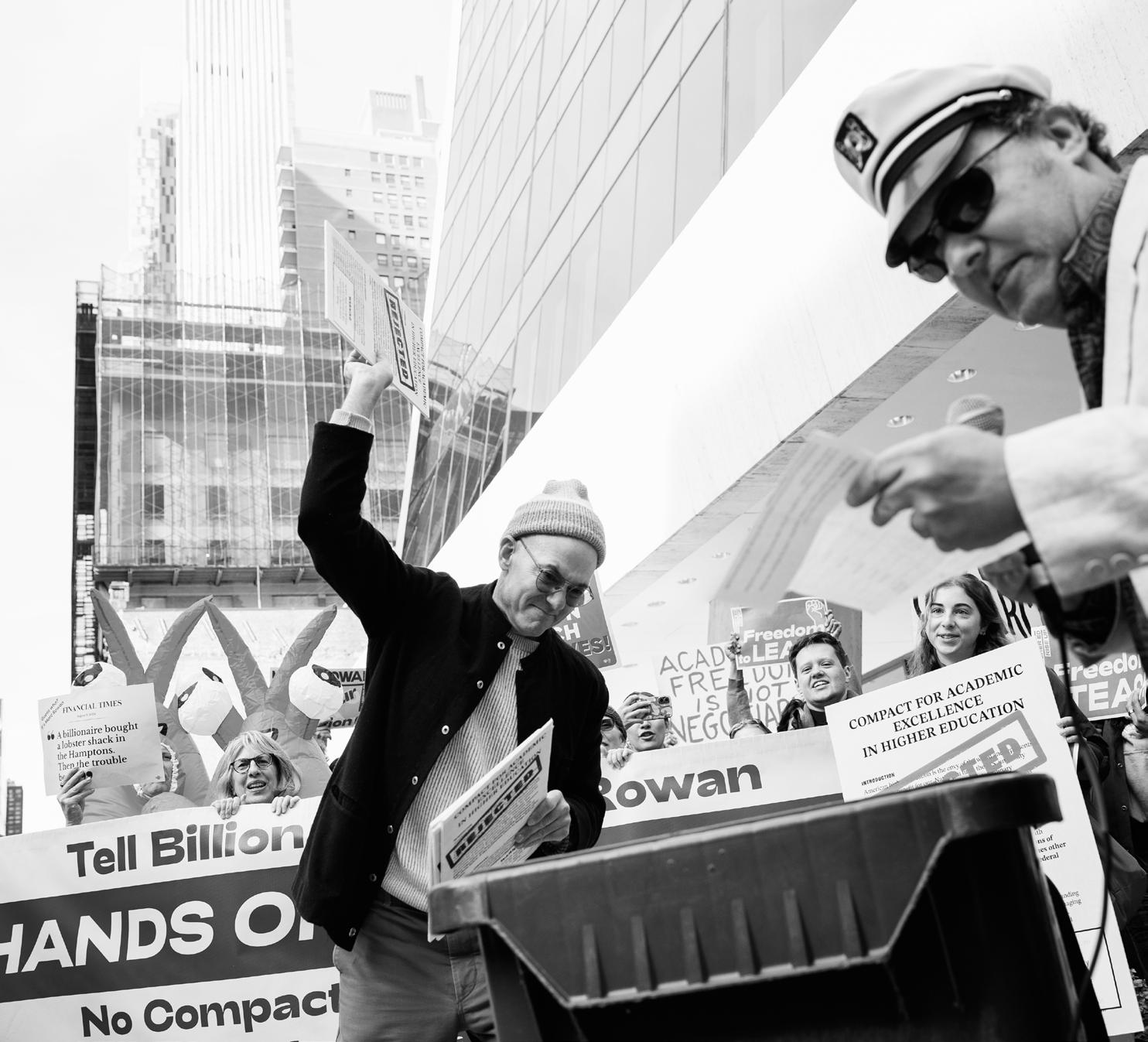
his values in journalism and how his upbringing sparked his passion for democracy.
“That is how a Muslim immigrant of Indian origin whose family made a stop in Africa before finding a home in North America ends up not as an outsider to the story of democracy, but as proof of what it can become,” Velshi said.“This is how we outlive ourselves … by showing up, by speaking truth, by standing up for one another, simply because we can.”
He also described how covering the 2020 civil unrest after the murder of George Floyd, and being shot by a rubber bullet, transformed his
understanding of journalism’s role in public life.
“The rubber bullet told me, now you are in this fight. You are not just covering it. You are in the arena,” he said. Velshi told students in the audience that journalism is “the act of standing up for democracy, of bearing truth,” adding, “Our calling as journalists is clear to keep the public properly and honestly and reliably informed so that democracy can stand upright even when everything else seems to be falling apart.”
Chung’s memoir told the story of being a woman in the news industry in the 1960s and facing the discrimination that kept women from moving up as journalists. However, when
the 1964 civil rights laws were passed and created the Equal Employment Opportunities Commission, women were able to break glass ceilings that were unbreakable before.
“And that’s what changed the tide in the late ’60s. And that’s the wave that I came in on,” Chung said.
Reflecting on the pressures she faced, Chung said she often compensated by mirroring the confidence of men around her. She recalled deciding, early in her career, “I am going to be a white male, too.”
She described wearing fourinch heels to meet men eye to eye, using humor to undercut sexism and developing what she called “a bad potty mouth”
as armour against belittlement in the newsroom.
Chung also warned that the journalism industry faces a crisis of trust and corporate interference.
“I am mortified. I am horrified with all the opinion that is expressed that we are not respected as journalists because we do not deserve it,” she said. “These greedy corporations have taken over. The bottom line is the most important thing to them.”
She urged young journalists not to buckle under pressure.
“It is time for us in the news not to kowtow to those who are trying to muzzle us. Truth is important, and there is no value in truth today, except for those who
speak out,” she said.
During a Q&A, both honorees emphasized the importance of transparency and moral clarity in service reporting. Velshi encouraged aspiring journalists to focus on the fundamentals.
“To the next generation of journalists who are in this room, your work is to find the human element, to listen more than you talk, to keep learning and to ask the hard questions,” he said.
The ceremony reaffirmed the values that Ann M. Sperber championed, honoring two journalists who have shaped public understanding for decades while underscoring the ongoing fight to preserve a free and trusted press.
and a political system that upheld Menendez’s ability to hold such a high political position with little to no accountability for his actions.
“I say to people, you might think you know who Bob Menendez is, but you don’t know,” Vincent said. “You don’t know the history, and the history is totally fascinating.”
Vincent discussed the release
of her book and her investigative reporting process at her book launch held on Monday, Nov. 10, at Stu Loeser & Co., a media strategy and corporate intelligence firm. The event drew reporters from across the New York City area who had followed her through her decade-long work on Menendez’s political and personal corruption.
Vincent ultimately decided to write the book after Menendez
was convicted and sentenced in January 2025 for acting as a foreign agent, bribery and obstruction of justice, when she realized much of Menendez’s early career was vastly unknown to the public.
“I was like, this needs to be a book because nobody really knows anything about his rise or remembers anything about his rise in Jersey,” Vincent said.
As she researched Menendez’s
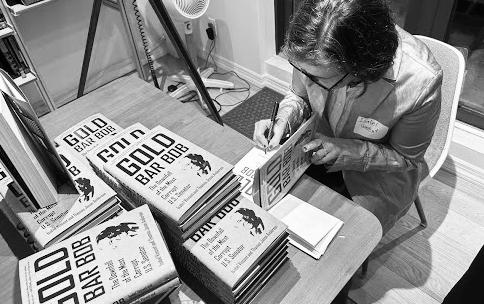
early career, Vincent found that a significant portion of his support came from Cold War-era Cuban exile groups now based in Union City, New Jersey. For Vincent, unraveling these forces was what inspired her to transform her investigative work into a full-length book.
“A lot of his backing came from the Fidel Castro Cubans who were trying to unseat Fidel Castro in Cuba by working with the CIA, planting bombs in Havana,” Vincent said. “These were the people that were on Menendez’s side … backing Menendez were these two Cuban exiles in 1963.”
Vincent noted that one of the most challenging aspects of her book’s development was convincing an editor that this was an original story that had yet to reach the public. To combat this, she started “bringing in all that background on the Cuban Revolution,” which was tied to Menendez’s early political career.
Throughout the process of writing this piece of work, Vincent discovered multiple pieces of information about Menendez’s career and personal life that she found interesting. What she found most
interesting, however, was the vital role his high school education played in shaping his career.
“All of his people from high school followed him through,” Vincent said. “In high school, he was on every committee. He was president of the student body, he was in the tennis club, he was on all the political clubs in high school. And all of the friends he made became very important to him later on in life. That for me was totally fascinating.”
Although Vincent has written six other books, this was her first time collaborating with another author, which she said was surprisingly easy.
“This was sort of seamless,” Vincent said in her speech at her book launch, noting that their years of work together molded their collaborative dynamic. “He is a great thinker and just a really smart guy. And I think we have this mutual respect for each other over the years.”
Vincent said she hopes her book will prompt readers to question the American governmental system as a whole and why Menendez was allowed to continue serving as a senator despite the numerous allegations against him.
Sisters of the Assumption, Jesuit Refugee Services and Ignatian Solidarity Network. The foundation develops meaningful relationships with its partner organizations and advocates for migration justice.
Guardado, associate professor of theology, leads the program with Kasten. Since the initiative’s inception, Guardado and Kasten have accompanied students on Global Outreach (¡GO!) trips to the MexicoUnited States border, where they have spent time reflecting on the migrant experience. They also invite alumni to help lead these treks.
Three other professors received honorable mentions at the ceremony.
Emily Krebs, Ph.D., assistant professor in communication and media studies and director of the disabilities studies program, received an honorable mention. Their work is centered around sharing tools for accessible pedagogy.
“In short, that means creating and facilitating classes where everyone’s access needs—what they need to participate and learn at their highest potential— are meaningfully accounted for,” Krebs said via email.
In their work, Krebs strives to create courses that incorporate accessibility accommodations, without the need for further accommodations from the Office of Disability Services.
Andrew Simons, Ph.D., associate professor of economics, also received honorable mention for his work in teaching and creating the interdisciplinary course: Ecology and Economics of Food Systems.
“We teach foundational ecological and economic principles and introduce students to the concept of sustainability in food systems as a three-legged stool with the legs being environmental, social, and economic sustainability,” Simons said via email.
The overall model of the course posits that all three legs are necessary to achieve true sustainability. Four major world food systems are broken down in the course, including palm oil, maize, chicken and eggs and sugar.
The course also includes a volunteer component. In partnership with Fordham’s Center for Community Engaged Learning (CCEL), students volunteer for 15 hours with La Familia Verde, which helps facilitate Bronx-grown gardens. This includes seasonal crops, such as those found in vegetable markets, throughout the South Bronx. Students help to facilitate the entire set-up and takedown process, in addition to volunteering while the market is open.
Simons noted that he felt great about being honored at the ceremony, citing the nerves that come with creating a new class.
“You are nervous if students will even take the class, will they
like it, will it be worth all the work, will you get to teach it a second time, or will it be a onetime flop, will our connections with the community be meaningful for students and meaningful to the community partners themselves?” Simons said.
He thanked his peer professors and university administrators for the positive reception of the course’s integration.
JD Lewis, Ph.D., professor of biological sciences, won the McGroddy Award in 2024 and was honored this year. They attribute their restructuring of the biology department for first-year students as a large part of the reason they won.
“This involved a suite of
changes that hinged around reducing the content taught in Intro Bio I and II, by thinking of the content as a three-semester sequence including Genetics,” Lewis said via email.
Lewis’ work also strives to make the department more efficient for students.
“That enabled us to look at the first-year experience as really a two-year experience,” they said. “With the goal of having students complete the three-semester sequence by the end of their sophomore year.”
This new teaching style means more interactive learning sessions for students taking biology classes. For instance, students more inclined towards research
may register for the research-focused section of Introductory Biology II, where they will partake in an additional challenge of student-led research.
Lewis said that they were overwhelmed and grateful for the opportunity to be honored.
“I’m blessed to work with so many other amazing faculty and grad student instructors,” Lewis said. “Much of what I’ve accomplished is from learning while I’ve taught with or sat in on classes by other instructors.”
They also extended their gratitude to McGroddy for creating the award.
The McGroddy Award comes with a $10,000 cash prize and was established in 2019.

and visited him, and then I was with him when he was electrocuted to death, and that sealed me in,” Prejean said.
Gibson said that his primary objective in hosting the event was to engage and educate attendees about the use of capital punishment, which he considers a “critical” social justice issue in the U.S. Assistant Director of CRC Olivia Poust added that she also finds the message of Prejean’s work to be important, especially given the current polarized viewpoints surrounding the topic of capital punishment.
“We want to put out issues of religious, moral and ethical significance, like the death penalty,” Gibson said. “This is something that is of critical importance to our society and to all people of
goodwill, faith or not.”
Since the release of her memoir over three decades ago, Prejean has accompanied seven other inmates to their execution, which she said often feels “impossible to get [her] mind around.”
“You really see the essence of life in this process, that people can never be freeze-framed in the worst act of their life because people can change, and they do,” Prejean said.
Prejean said the idea to transform her memory into a graphic edition emerged accidentally when she was recording the audio version of her work. Grünewald said she was unaware of how long the process would take when she initially agreed to take on this project, but described feeling “lucky” to have been part of this piece of work. For Grünewald, Prejean’s work is
a “story about empathy,” and she hopes the graphic novel will attract a newer and younger audience.
“One of the things that we want to happen is to reach a new audience, which is young people,” Grünewald said. “We want to educate them about the death penalty and about what’s been happening since the original book was published, and to galvanize them as the voters of the future.”
During the panel, Prejean described the death penalty as an “unspeakably terrible thing,” while highlighting her firm belief that society will collectively choose to abolish its use in the future.
“We shouldn’t be killing people and legalizing it. We’re going to put a government in charge of deciding that some citizens can die, and we’ll kill them?” Prejean said. “It
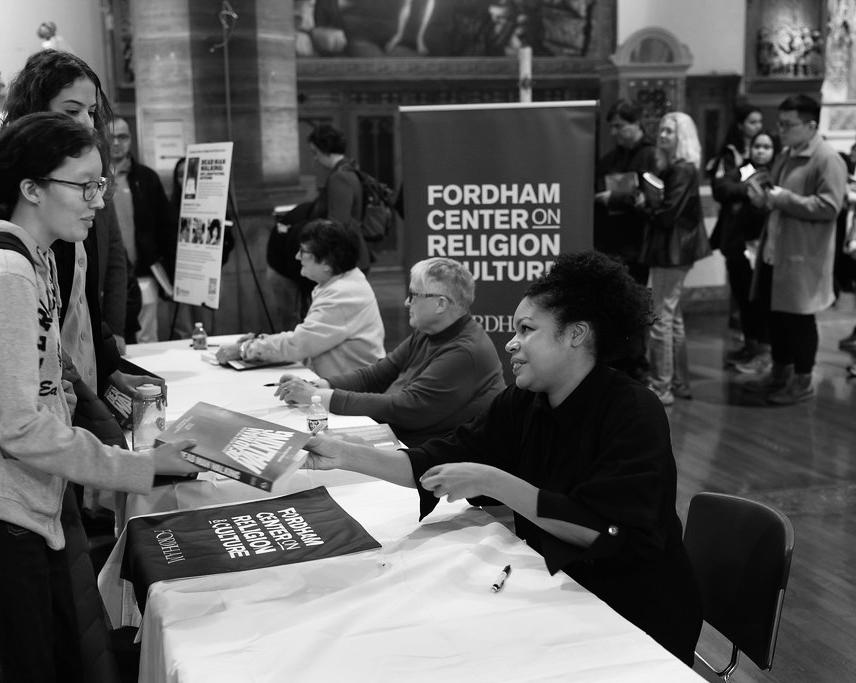
involves the guards and killing people. It is an unspeakably terrible thing. And we are going to change it by changing consciousness, changing minds and hearts.”
As a devout Catholic and nun, Prejean believes the use of capital punishment directly contradicts the meaning of the Gospel.
“The Gospel of Jesus was never about returning hate to hate or violence for violence,” she said.
At the end of the panel, audience members witnessed a surprise on-stage appearance from Susan Sarandon, who portrayed Prejean in the 1995 Academy Award-winning film adaptation of Prejean’s memoir. While on stage, Sarandon described her personal account of Prejean’s story.
“There were two things I loved about the book. First of
all, this nun kept making mistakes. She was making mistakes, as we all do. And so the unfolding of that story, I felt, was very important,” Sarandon said. “And second of all, for me it was a love story. And it was questioning who can love unconditionally. And I came to the conclusion that religious people do that.”
Prejean said the new graphic novel “pulls people into a story in a way that just the written word doesn’t.”
“This is going to be a new iteration of opening up to a new generation, the story to wake people up,” Prejean said. “I have confidence in it now. I know that the heart of the American people that I’ve experienced is that people are good. You’ve got to bring them close, and they get it. And that is my hope. It really is my hope.”

By SOFIA SEMPER COLUMNIST
Fordham University’s United Student Government (USG) met on Nov. 6 to complete their annual “post-it activity” with Michael R. Trerotola, vice president and chief of staff to President Tania Tetlow, discussing student concerns and presenting proposals and budget requests.
Associate Vice President for Strategy and Operations
Christopher Rodgers began the meeting by introducing the new Dean of Students, Kevin Williams, to the Senate.
Executive President Lucas Hjertberg, FCRH ’26, and Executive Vice President Andrew McDonald, FCRH ’26, then introduced special guest Trerotola.
Trerotola said that, while he cannot fix everything, he wants to work with USG to identify systems that have not
been working well and determine which of those are issues that he and the president’s office can work on improving.
Trerotola gave each USG member a set of post-it cards, instructed them to write down their concerns and place them into one of the following categories: belonging and campus life, academic and advising, campus environment and communication, student services and well-being and other.
Proposed ideas included excused absences for voting, extending weekend Ram Fit and the McShane Campus Center Marketplace hours, using percentage based financial aid, extending first-year orientation, addressing inconsistencies within the advising office and LGBT+ inclusive housing options. This activity occupied most of the meeting’s agenda.
The first-year senate then presented a budget request for
their upcoming tabling. They requested funding for donuts and to purchase school supplies for students to use in the next semester. Vice President of Student Life Luc Angus, FCRH ’26, presented a budget request for a variety of raffle prizes for the Executive Board’s Wellness Week events. Both of these requests were approved pending minor changes.
Hjertberg then gave the executive report. He announced that he and McDonald recently attended the President’s Strategic Advisory Council where they met with Tetlow, discussed possible new initiatives that Fordham could implement and reviewed the strategic report.
He said they discussed the work of the federal government and the various ways that it could impact Fordham. They also discussed possibly having a donation button
on Grubhub for unused meal swipes, offering collective support for student workers with federal budget cuts through departmental internships and expanding the Serving the City internship program.
Senator Anna Brown, FCRH ’27, then presented the schedule for the USG Day of Service event. The plan is to create food donation boxes and either distribute them throughout the community or have people pick them up at The Grotto. Brown also presented a budget request for all of the food that they purchase, with the total cost coming out to about $2,300. The Senate approved this request.
Hjertberg then moved on to the Executive Reports. USG Vice President of Operations Tina Pathak, FCRH ’28, announced that the Operations Committee had many club sanctions because multiple
clubs were missing their operations packets, which were due on Nov. 3.
Vice Chair of Budget and Finance Siri Bhat, GSB ’27, stated that Budget packets were also due on Nov. 3. The Budget Committee received about $30,000 in requests but they only approved about $15,000.
Angus stated that he and his committee reviewed club suite and committee guidelines, followed by a discussion regarding how they plan to shape the guidelines going forward.
Vice President of Sustainability Ayden Johnson, FCRH ’27, announced that he is partnering with the Center for Community Engaged Learning (CCEL) for a winter clothing drive. He recently met with Facilities and Dining to discuss the Sustainable Dining Initiative from last semester.
By ANDREW MASSIE & EMMA LEONARDI
The Fordham University Student Life Council (SLC) met to go over updates from a host of administrators at their meeting on Wednesday, Nov. 12 in the McShane Campus Center Room 112.
Fordham Associate Director of Operations Nicole Vaughan shared that the Thanksgiving break stay application forms are now available and that anyone looking to stay should submit their application by Thursday, Nov. 20. Vaughan also announced that Resident Assistant application forms are also open and will be live from now until mid-January for anyone looking to apply.
The Fordham Ram asked about ResLife’s response to the increase in flight cancellations and what they will be doing to add support for students who may face complications in their Thanksgiving break travel.
“We’ve always approved students late if they need to reach out for any reason, especially related to travel. We’re pretty flexible at that point,” Vaughan said. “We also have staff on calls 24/7. So if there is any issue … they can call public safety, get in touch with the resident director on duty, or we also have cluster resident assistants on duty.”
SLC also introduced the university's new assistant vice president and the Dean of Students Kevin Williams,
who will now be replacing the newly promoted Fordham associate vice president for Strategy and Operations Christopher Rodgers, as he continues to transition into his new role full-time. Williams has worked at Cornell University under a similar position for the past five years, and before that, has experience at other higher education institutions such as The New School, Temple University and Oberlin College.
The SLC meeting marked Williams’ eighth day here at Fordham. He encouraged any students who have questions or want to discuss anything to stop by his office, located in the McShane Campus Center, room 255.
Following the introduction of Williams, the SLC Chair Reese McDonnell, GSB ’26, introduced the Vice Dean for Faculty Affairs in Arts and Sciences Robert Hume.
He shared that his new position, which followed the restructuring of the Arts and Sciences, involves overseeing and providing assistance to all of the faculty within the Arts and Sciences department at Fordham.
Hume noted that recently, a major part of his job has recently involved overseeing the hiring process for the new Senior Director of the Center for Educational Innovation Margaret Konkel.
He added that Konkel has been working on a couple of initiatives, one of which
is teacher training across Fordham, which includes basic training and several specialized sessions.
Hume also asked SLC for thoughts on the end of the year’s course evaluations. Several student members of SLC, such as McDonnell and also the President of the Resident Halls Association (RHA) Anna Calendrillo, FCRH ’26, noted that the low response rates could be because students tend to refer to course reviews from outside sources, such as Rate My Professors.
“You’ll see a really high response rate for professors on something like Rate My Professor because students feel like that’s an immediate way to show how a professor was in a way that’s going to help fellow peers, whereas I’m sure the evaluations are doing this … I don’t think it’s as quickly visible,” Calendrillo said.
Following this discussion, McDonnell introduced the Graduate School of Arts and Sciences Director of Academic Admission and Support Meredith Nelson.
Nelson then had outlined the accelerated master’s programs, which include a five-year plan, consisting of four undergraduate years and one year as a master’s student, with three master’s classes being taken in the second semester of one’s senior year.
Fordham Assistant Dean
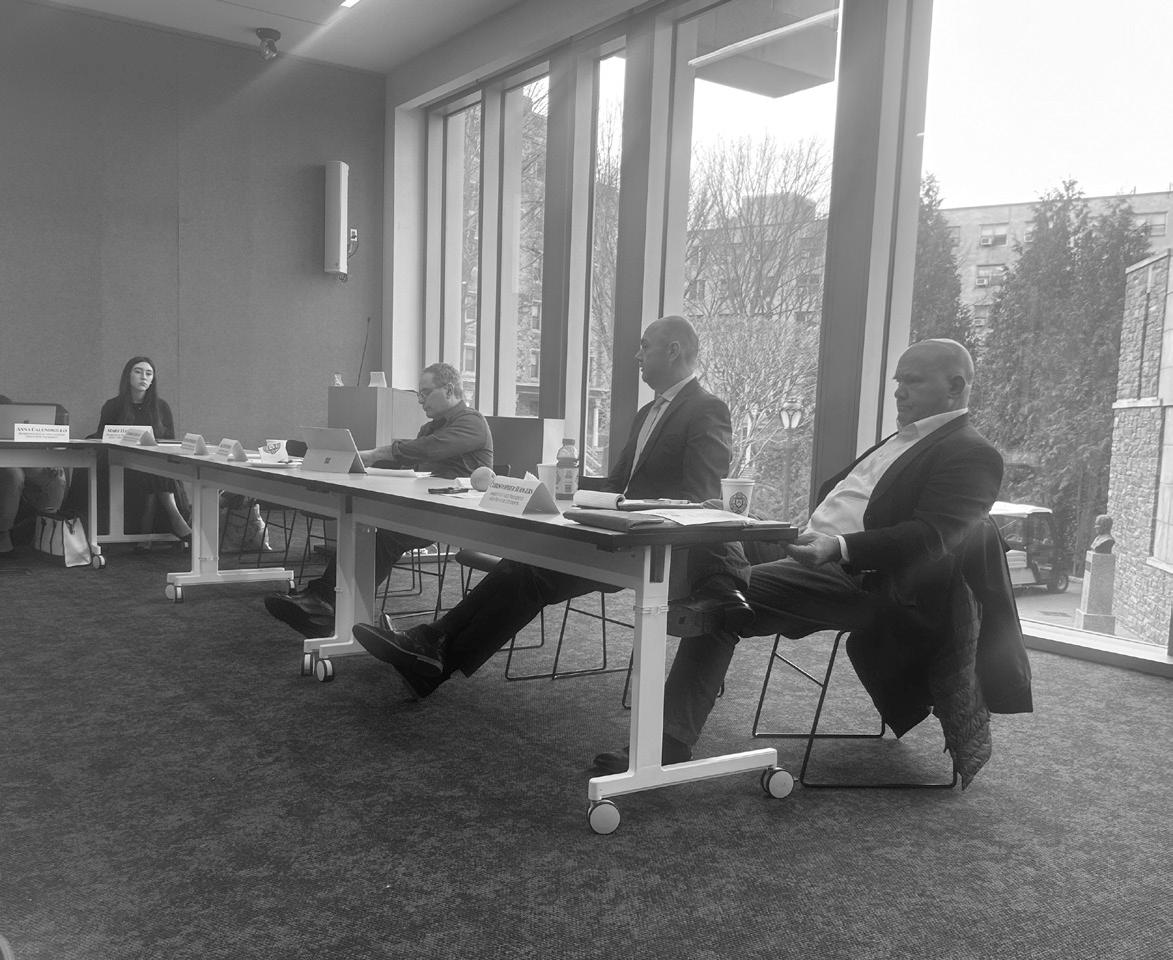
of Students and Director of Residential Life Charles Clency provided the monthly intoxication report for October, specifically noting Halloween weekend. Clency said that 47 intoxication transports have happened this fall, which compares to the 43 at this time last year. There have also been seven Refusals of Medical Assistance. Rodgers reflected. “Dean Clency, Dean Williams, myself, we were a little concerned with the activity over the Halloween weekend,” Rodgers said. Fordham’s United Student Government was then asked to present its updates. Vice President of Operations Tina Pathak, FCRH ’28, shared that there are eight clubs that have gone defunct following
operations packet reviews at their Ops Day.
Vice President of Budgets and Finance Peter Grimes, FCRH ’26, shared the overall USG updates for Executive President Lucas Hjertberg, FCRH ’26, who was absent. USG had hosted a day of service on Sunday, Nov. 16. “Over $2,000 of food purchased with the USG funding will be packaged and distributed to POTS [Part of the Solution] as the Bronx struggles amid missing SNAP funding,” Grimes said. Rodgers added that the university will remain open to students over winter break. The next SLC meeting will be on Wednesday, Dec. 3. Additional reporting was provided by Emily Tonna.
By ANDREW MASSIE FEATURES EDITOR
The Fordham University United Student Government (USG) met on Nov. 13 to sign proposals, review funding requests and debate one of the most consequential proposal discussions of the semester: whether Fordham’s longstanding current restrictions regarding the distribution of contraceptives should be amended.
The USG meeting brought forward discussion among the senators over Catholic teaching, Fordham campus health needs and how far USG should go in attempting to change university policy.
The meeting opened with the formal signing of pending proposals, including a plan to optimize meal plans and a proposal to allow excused absences for students who miss class due to voting in the government elections.
Senator Anna Brown, FCRH ’27, and the proposal authors signed their proposals before USG moved on to regular business.
Brown was also named Senator of the Month.
The Finance Society won October’s Club of the Month competition after submitting more than 120 votes out of a total 157. This number was boosted by the club using the voting form as its meeting attendance sheet, according
to Senator Henry Carstens, FCRH ’29, who is a part of the club.
This club method of massvoting is allowed, according to Executive Vice President Andrew McDonald, FCRH ’26, who said he wants the next Club of the Month competition for November 2025 to be a “bloodbath.”
USG debated on a proposal to amend the clause in Fordham University handbook that is on contraceptive distribution. Current language prohibits the distribution of condoms on the university’s property. The proposal will attempt to “amend the current distribution statute present in the Student Handbook on contraception,” removing a clause that limits distribution on the campus and also allowing students or organizations to receive contraceptives or birth control resources from outside groups.
USG Vice President of Health and Security Aidan Costella, FCRH ’27, who is on the proposal team, told senators he consulted with administrators, including Elizabeth Fanelli, Fordham’s Title IX coordinator, and spoke with Rev. Philip Judge, SJ, executive director of Campus Ministry, and said administrators have been receptive to clearer policy language.
Vice President of Diversity and Inclusion Laila Sayegh, FCRH ’27, had encouraged gathering statements from
faculty and public health experts who support the proposal.
Some of the senators urged caution. USG Senator Carter Soderberg, GSB ’28, said the proposal must reflect Catholic teaching accurately and argued that the current language on the church’s “Catholic Framework” lacks clarity. Soderberg noted that the Catholic understanding of sexuality emphasizes unitive and procreative purposes and said contraceptives directly undermine those purposes, and that the university’s policy may not be directly focused on the prevention of premarital sex.
Soderberg, USG Senator Audrey Shooner, FCRH ’28 and Senator Ashley Garcia, FCRH ’26, had volunteered to assist in revising the language.
McDonald also said the committee should consult additional priests and look to involve pro-life student organizations prior to them resubmitting the proposal.
McDonald also noted this is the first time in years that a dean of students has not previously heard a pitch on contraceptives from USG, referring to the transition underway going from the former Dean of Students, Christopher Rodgers, (as he was promoted) to the new and current Dean of Students, Kevin Williams.
The proposal would not request university funding. Instead, it would permit the student groups to obtain free contraceptives from outside organizations and distribute them on campus.
The Fordham chapter of Young Democratic Socialists of America (YDSA), which is not an officially recognized club, frequently distributes Plan B outside Walsh Gate. They get the Plan B directly from Planned Parenthood for free, according to YDSA CoChair Matthew Smith, FCRH ’27.
The attempts to revise or change Fordham University’s Student Handbook Policy on contraceptive distribution go back to the ’60s.
Additional budget requests from student organizations dominated much time within the early part of the agenda. USG approved funding for the Committee on International Integration, Cultural Potluck, Diversity Action Coalition Cultural Potluck and Cards for Meals on Wheels, Student Experience Committee’s art show prizes, the Committee on Sexual Misconduct Week of Action and food for Budget Day.
Vice President of Finance Peter Grimes, FCRH ’25, was not present at the meeting; another senator presented for him. In Grimes’ report, he noted the recurring issues of clubs using outside catering,
which are tied to Fordham University’s various insurance requirements and Aramark’s status as the university’s sole food provider.
Restaurants that are used for catering must list the university on their insurance for clubs to use them. Grimes said the matter is being addressed with the Office for Student Involvement.
Executive President Lucas Hjertberg, FCRH ’26, said he recently held a lengthy Zoom call with Lincoln Center USG President Daphne Mei, FCLC ’26, to organize what would be the first joint meeting with President Tania Tetlow. According to Hjertberg, the university president has never attended a USG meeting.
Hjertberg also discussed implementing a streamlined form system on the USG website to receive direct feedback from students.
Senators also noted new proposals under development, which included the menstrual product access in women’s bathrooms and a plan to display instructions in campus restrooms on how to perform self-examinations for cancer.
The Governing Documents Commission made its final edits and plans to present its revisions at the next weekly meeting. USG senators were encouraged to review the updated bylaws.
The next USG meeting will be on Nov. 20.
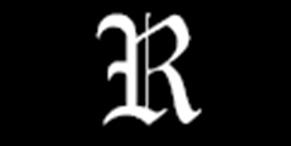
Serving the Fordham University campus and community since 1918
The Fordham Ram is the university journal of record. The mission of The Fordham Ram is to provide a forum for the free and open exchange of ideas in service to the community and to act as a student advocate. The Fordham Ram is published every Wednesday during the academic year to all campuses.
Website
TheFordhamRam.com
Email Address theram@fordham.edu
Editor-in-Chief
Nora Malone
Managing Editor
Jacob Wolfer
Production Editor
Sophie Maselli
Editorial Director
Jonah Ring
Multimedia Director
Mary Hawthorn
Business Director
Nishanth Aduma
News Editor
Sienna Reinders
Features Editor
Andrew Massie
Assistant News Editors
Emma Leonardi
Lalleyah Camara
Opinion Editor
Stuart Cremer
Assistant Opinion Editors
Abigail Adams
Loresa Zeqiraj
Culture Editors
Mia Tero
Isabella DeRosa
Assistant Culture Editor
Erynn Sweeney
Sports Editor
Grace McCarron
Assistant Sports Editors
Ian Nelson
James Nelson
Copy Chief
Sarah Verrastro
Executive Copy Editors
Indigo Towers
Emily Tonna
Caroline Lehman
Julia Cholerton
Photo Editor
Meghan Cattani
Digital Producers
Haniyyah Usmani
Molly O’Connor
Hannah Sullivan
Advertising Directors
Jack McDonald
Violet Wallace
Faculty Advisor
Beth Knobel
Staff Copy Editors
Jordan Donegan
Emily Mitton
Emily McCall
Editorial Policy
The Fordham Ram’s editorial reflects the editorial board’s opinions or views.
Opinion Policy
The opinions expressed in this publication are those of the authors. They do not necessarily reflect the opinions or views of The Fordham Ram.
Submissions Policy
The Fordham Ram reserves the right to reject or edit any submission for any reason, without notice. Submissions become the exclusive property of The Fordham Ram. No part of The Fordham Ram may be reproduced without written consent.
I transferred to Fordham University in the fall of 2023. I didn’t know anyone here, and didn’t meet anyone new until I joined The Fordham Ram as a copy editor in the spring of 2024. The lessons that Fordham has taught me, along with my experiences at The Fordham Ram, will stay with me for the rest of my life.
Before coming to Fordham, I would often ask myself, “What does it mean to be excellent?”
As a soon-to-be graduate, I now ask myself, “What does it mean to be excellent toward others?”
I have found that the answer to this question lies in how we treat others on a daily basis, and whether the decisions we make serve a higher purpose. My experiences as a member of The Fordham Ram have exemplified just that.
Every issue, I am proud of our staff for putting out content that accurately reflects the diverse voices and opinions of the Fordham student body. We have been an outlet for students on campus who wish to share their lives in New York City through our
From the Desk | Jacob Wolfer
culture section. We have enabled students to voice their opinions and ideas for making Fordham a better place through our opinion section. We have also served as a platform to celebrate our athletes at Fordham and allow our fellow sports fanatics on campus to write about their passions.
Through this, I believe The Fordham Ram and the purpose we serve at this university exemplify our Jesuit values of cura personalis.
We let our students know, through our actions, that they are valued. We let them know their diverse perspectives matter. That they are cherished by the community at this school and that they are part of what makes Fordham great.
However, none of this is possible without the staff that we are so blessed to have as part of our team on The Fordham Ram. To our opinion editors, I thank you for pitching articles to our students that reflect our diverse community. I thank our culture editors for coming up with niche and cool ideas in an effort to get our students

to interact with New York City. To our sports editors, I thank you for your active coverage of the fantastic athletic programs we are fortunate to have here. To our news editors, thank you for covering Fordham events actively and accurately, while still giving credit where it is due. Last, but not least, I thank our copy team for ensuring our articles are clear while still accurately reflecting student voices.
To our fantastic E-Board team, I thank you for your resilience, intelligence and ability to hold journalistic integrity even when it is difficult. To Nora, thank you for being my friend and for always making
Editorial | Government Shutdown
me laugh when life gets tough. To Sophie, thank you for your friendship and for all the hard work you have done to ensure our paper meets professional standards. Jonah, thank you for being my sidekick, joke buddy and most importantly, for accurately and fairly representing all of our opinions through our weekly editorials. My time at The Fordham Ram has been nothing short of a blessing. It has served as a guiding force for me in understanding what it means to be excellent towards others. It has allowed me to embody the Jesuit principles I hold dear, which I hope will guide me in my next journey in life.
Around a month ago, The Fordham Ram published an editorial that attempted to forecast what a government shutdown could mean for an already-ailing America. In it, we collectively declared that the (then forthcoming) shutdown was gearing up to be more consequential than all those that preceded it, ultimately arguing that its afterlives and outcomes may very well “come back upon the average American with great violence and great harm.”
Regrettably, our prediction proved to be spot-on, as 42 million Americans were thrust into a hunger crisis when their Supplemental Nutritional Assistance Program (SNAP) benefits were cut off; thousands of children who rely on the National Institutes of Health’s (NIH) Clinical Center for healthcare found their ability to access needed treatments greatly diminished; and over 1.4 million federal workers went weeks without pay as a result of the economic constraints of the shutdown. Put simply, the shutdown only created the suffering, pain and uncertainty that The Ram feared it would, as millions were left to fester without any real means to take care of themselves.
In light of this tragic failure of governance, it is the stance of this editorial board of The Fordham Ram that it would perhaps be best for these languishing victims of the shutdown if another group was left to fester and rot in their place in the future: namely, the Democratic Party.
To elaborate on this sentiment, it is important to remember what the main impetus of
this shutdown actually was: Democrats’ rightful desire to resolve issues surrounding the extension of the Affordable Care Act’s (ACA) enhanced subsidies and premiums. That is, the Democrats’ purported reason for repeatedly voting to keep the government shutdown was the fact that any proposed stopgap measures failed to include the one thing that Democrats actually wanted: concrete measures to keep the ACA’s soon-to-rise healthcare premiums actually affordable to the 24 million Americans who rely on the program. In fact, they were so committed to obtaining these measures, to seeing this principled decision to fight for Americans’ healthcare pay off, that they were willing to take on all the criticism and practical consequences that were sure to come their way. After all, they stood their ground for a record-breaking amount of time in order to secure ACA’s future.
Thus, when this past week saw 14 Democratic members of Congress break this promise and vote to end the government shutdown, despite not having the very thing they were holding out for the whole time (i.e., a concrete solution to the ACA’s looming problems), the political world was left in shock. After over a month of holding firm in the face of this long, painful shutdown, Democrats somehow found a way to sell the whole thing out. In effect, they reduced their righteous, principled stand to a massive nothing — a massive nothing in which they ultimately sold out millions of Americans’
healthcare access for a nonbinding, unofficial promise that Republicans would merely consider a vote on the matter of extending the ACA. In the words of the great Jon Stewart, “Democrats … sold out the entire shutdown not to get what [they wanted], but for a promise to not get what [they wanted] later [on].”
What makes this already infuriating decision especially frustrating, is the fact that Democrats had the upper hand optically when it came to this shutdown. It is not like the Democrats had their backs up against their walls as the masses called for their heads. No, not only did the majority of Americans blame Republicans and President Donald Trump for the shutdown in polls, but they also showed up en masse to vote for Democrats in a seeming stamp of approval for their current political playbook. Public support and consensus was clearly on their side.
And even if one were to assert that the Democrats’ obstinance was hurting the average American, it remains to be seen how anyone other than the Trump administration, the Republican Party and the Federal Judiciary was actively endangering Americans’ basic wellbeing. After all, not only were conservative legislators’ wholly unwilling to engage in good faith negotiations about the subsidies that millions of Americans rely on to quite literally stay alive, but Trump and the Supreme Court were actively working to block Americans from receiving any sort of aid. The burden of blame clearly did not lie solely, or perhaps even fully,
on the Democratic holdouts. Yet, despite all this going for the Democrats, they caved to political pressure instead of working to save the lives and healthy future of millions. This, in the eyes of The Ram, is nothing short of a pathetic measure that undermines the very legitimacy of the entire party. The Democratic Party as we know it simply cannot be allowed to exist in its current iteration — they are clearly too inept to govern, too scared to follow through on their own promises/policies and too dangerous for the average American. Finally, in alignment with the disappointment and disgust felt by members of The Ram over this unfathomably cruel and inexplicably dumb decision, it appears to us worthwhile to list out exactly which Democratic members of Congress voted to leave millions of Americans without affordable access to healthcare. It is our belief that their cowardice functioned as nothing other than a shocking betrayal of their constituents’ fundamental wellbeing, and that they therefore deserve to be primaried to oblivion in the near future. Thus, with this in mind, their names are the following: Jared Golden of Maine, Marie Gluesenkamp Perez of Washington, Adam Gray of California, Don Davis of North Carolina, Henry Cuellar of Texas, Tom Suozzi of New York, Catherine Cortez Masto of Nevada, Dick Durbin of Illinois, John Fetterman of Pennsylvania, Maggie Hassan of New Hampshire, Tim Kaine of Virginia, Jacky Rosen of Nevada and Jeanne Shaheen of New Hampshire.
Anna Brown, FCRH ’27: Four days before the 2024 presidential election, I decided to fly home to Clarksville, Tennessee, to vote because my mail-in ballot had not arrived in my P.O. box at the campus post office.
In Tennessee, to vote via mail, you have to print, fill out and mail a mail-in ballot application. I had sent mine in about a month before the election. The Tennessee State Department website says an application must be received no later than 10 days out from the election, so I assumed I had ample time. But as my mother says, “assuming only makes an ass out of you and me.” So when my ballot hadn’t arrived after waiting for three and a half weeks, I decided just to go home and vote.
I ended up missing class the day after the election, even though I had a 6 a.m. flight leaving Nashville. I was home for barely more than 24 hours to go vote, and still missed class.
Andrew McDonald, FCRH ’26: Compared to Anna’s experience in Tennessee, the fact that I happened to be born in the state of California made voting absentee almost effortless. I voted in the 2024 presidential election last year in California by mail, and my ballot arrived with plenty of time. The tracking system worked and existed, and the entire process took minutes, not weeks. That’s because California law only requires mail ballots to be postmarked by Election Day and received within seven days. Tennessee law, meanwhile, requires ballots to be physically received before polls close, meaning even a small United States Postal Service delay
can invalidate a vote.
I have since re-registered to vote in New York City this May so I could vote in our local elections this year, but many Fordham students from more electorally restrictive states don’t have that option. Several Fordham University California student voters that I’ve met echoed a similar sentiment: Voting from home is easy for us in a way that it simply isn’t for students like Anna. Civic access shouldn’t depend on the zipcode you were born into. Fordham’s policy should reflect the reality our classmates face, whether voting in the U.S. or abroad.
AB: Fordham University already acknowledges the importance of voting and this issue by canceling classes on presidential election days every four years. For students who face similar issues, or simply want to go vote in elections that the university does not give us the day off for, they risk getting hindered academically when attempting to exercise their civic duties. Two weeks ago, a proposal I wrote about making voting an excused absence a university-wide policy was passed unanimously in the undergraduate United Student Government.
AM: Currently, many students still face the exact same barriers and issues that justified giving presidential election days if they choose to vote in midterms, primaries, on propositions and in offyear local elections with contests that often more directly affect their families and the hometowns many Fordham students plan to move back to when they graduate. These elections matter just as much to the people who wish to vote,
and Fordham policy should reflect that.
Under the current system, students must choose between their civic responsibility and clear academic risks. Nicole Castaneda, GSB ’27, noted that even living “an hour and a half away in New Jersey,” made her miss elections because she couldn’t afford to skip class. Sara Depperman, FCRH ’28, flew home for only 36 hours only to return and receive an unexcused absence. While some students may be lucky to get an excused absence at their professor’s discretion, these aren’t edge cases; they’re typical at a national university. With stricter mail-in deadlines nationwide and absentee voting under threat, relying on voting by mail is becoming increasingly unreliable.
AB: Since the 2020 presidential election, 10 states have passed legislation making it more difficult to obtain mail-in ballots. Those states include New Mexico, Oklahoma, Iowa, Arkansas, Georgia, Alabama, Kentucky, Tennessee, Ohio and New York. According to Fordham’s website, students from 49 out of the 50 states attend the university. These pieces of legislation could affect Fordham students and their voting process.
For students from any state trying to vote by mail, the unpredictable nature of mail-in ballots can be very stressful for those who want to make sure their vote is counted. Even if a student does everything right, things beyond their control can happen and prevent their vote from being counted on time. This is exceptionally stressful for students from states whose ballots have to arrive by election day, not just be postmarked
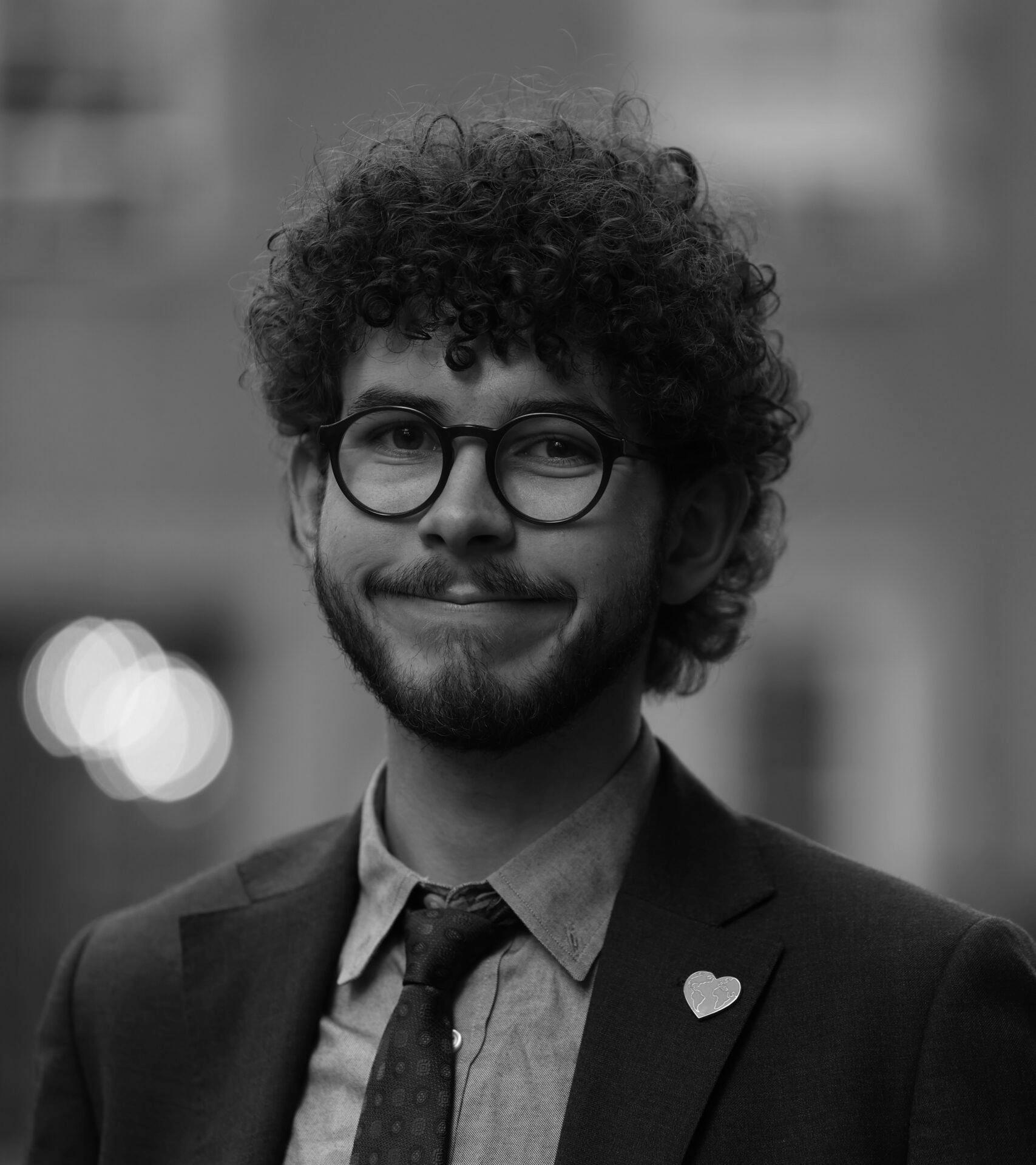
before election day. If Fordham implements this proposal, we hope that there will be an increase in civic engagement among students at the local, state and federal levels. In the 2024 presidential election, less than half of citizens (47%) between the ages of 18 through 24 voted. Furthermore, according to the Kids Count Data Center, only 23% of citizens between the ages of 18-24 participated in the 2022 midterm elections. If the policy proposed is enacted, students will be granted more opportunities to go vote without fear of academic repercussions.
Cura personalis is part of the Jesuit values that Fordham University models its academics and student life around. Meaning “care for the whole person,” Fordham University wants to foster an environment where students can become wellrounded individuals and citizens. This should include promoting and assisting students in being civically engaged. By allowing students to go vote without fear of missing class and hindering them academically, it allows students to take an active role in their community and legislative action in their home state, which would, in turn, make students more well-rounded citizens.
AM: Senator Anna Brown’s proposal is very straightforward: add “Going to Vote” as an option in the existing excused-absence dropdown. That’s it. This policy would require no new office, no new staffing, no new cost and no additional bureaucracy. It will use the same documentation standards already in place for medical, religious or family emergencies, meaning
the safeguards against misuse of this policy already exist, and all potential excused absences would still be at the discretion of the dean. This would also come with a large opportunity for us as a university; if implemented, to our knowledge, there is no other university in the country that has a policy like this being implemented, and Fordham would be the first university in the country to implement excused absences for voting as a formal, university-wide policy.
AB: In 2022, the Student Senate, Graduate Student Senate and Faculty Senate of Ohio University passed a similar proposal regarding this topic, but the university never followed through. Fordham University should be a leading institution when it comes to promoting civic participation among students. As said by St. Ignatius of Loyola, “Go forth and set the world on fire.” This quote is engraved on the walls of the McShane Campus Center, and Fordham should take those words and apply them to the ideas in this proposal.
AM: This policy would also mirror what New York City already guarantees its municipal employees by way of paid time off to vote, and we hope that Senator Brown’s proposal will help move Fordham in a direction to uphold the similar civic standards the city itself considers essential to democratic participation.
The bottom line is that no student should have to sacrifice their academic standing to participate in their democracy, whether that be in New York City, anywhere else within the U.S. or any place a member of the Fordham Student Body calls home.
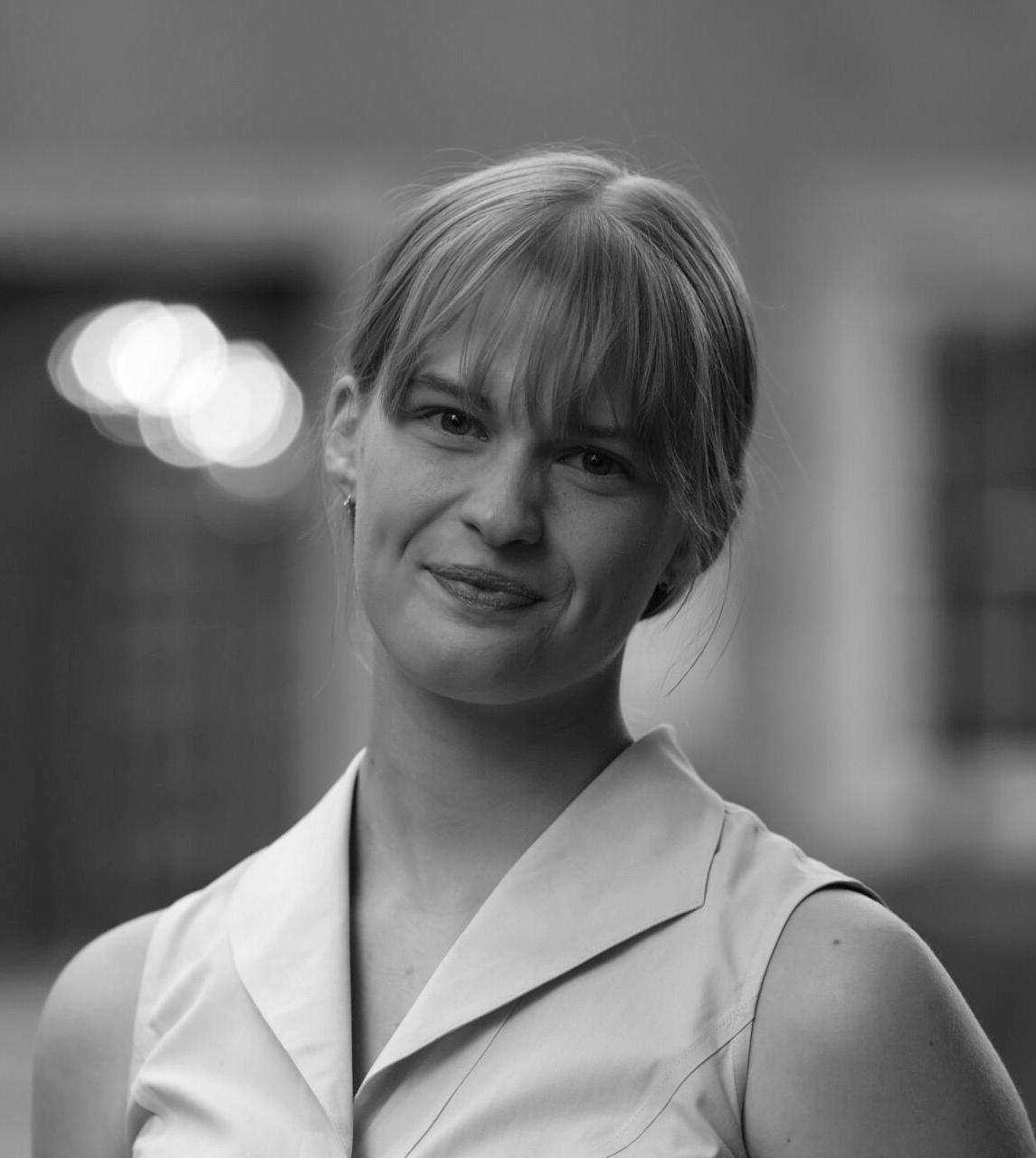
By DOVE AJMANI CONTRIBUTING WRITER
Billie Eilish addressed some of the biggest names in tech, entertainment and business when she accepted the Music Innovator Award at the Wall Street Journal Magazine Innovator Awards on Oct. 29 in New York City. In a room full of privileged high-earning individuals, the 23-year-old took the opportunity to peel off the band-aid and say billionaires need to donate more. This statement took the internet by storm, with some agreeing with her while others remained skeptical, seeing it as performative. Regardless, Eilish’s stance calls on celebrities to question their moral obligations; as those with the most power and influence in society, don’t they have a duty to give back?
Eilish is really not asking all that much from the wealthiest Americans. Despite the fact she is a multi-millionaire, there is still a significant wealth gap between Ellish and billionaires like Mark Zuckerberg and George Lucas, who also attended the event. A 2025 report from Investopedia has shown that to be in the top 1% of wealthiest households globally, one would need a net worth of at least $13.7 million. And let’s be real, many of those in attendance have a significantly higher income than the minimum required for such a qualification, particularly the billionaires in the crowd.
Eilish, not having the billionaire status, still puts her
money where her mouth is. She donated $11.5 million of her tour earnings to charities that address climate change and food insecurity. The donation equates to 20% of her net worth. Billionaires like Zuckerberg are praised for their philanthropy. However, his contributions represent only a small portion of his net worth, 2.1% according to Forbes Magazine. But what if other billionaires like Zuckerberg matched Eilish’s generosity? Well, it could quite literally change lives. Elon Musk, who is on track to become the world’s first trillionaire, has so much power that he can, theoretically, single-handedly, offer clean drinking water to the whole world.
Unlike Musk, Eilish is no stranger to using her platform for activism. She, along with her family, have adopted a vegan lifestyle due to growing concerns over climate change and the impact of greenhouse gas emissions. Eilish didn’t stop there; she has even implemented eco-friendly measures at her concerts, ranging from plant-based meals to merchandise made from recyclable compounds, all at her own expense, according to Variety. Eilish’s advocacy extends beyond environmentalism; she also uses her platform to raise awareness and highlight the urgency of donations for humanitarian crises, such as ICE’s raids in Los Angeles, as well as to advocate for LGBT+ rights, among other issues. In both instances, the problem shouldn’t be a political one,
but rather a matter of right and wrong. It comes down to human welfare.
Although celebrities’ hearts are in the right place, they must have credible knowledge of the topic before speaking about it. Followers can often be very impressionable due to the younger demographics on social media, which is why celebrities should proceed with caution when speaking out to avoid spreading misinformation.
Take Kanye West, now known as Ye. While he was once a well-respected musician, his reputation has suffered from his hateful and antisemitic remarks. He serves as a cautionary tale, in which his polarized beliefs led to the loss of numerous sponsorships, most notably his endorsement with Adidas. He is a prime example of how celebrities can use their platforms irresponsibly: rather than creating unity through advocacy, he creates division. Ye has gone down a deep path of negligence, clearly demonstrating his political illiteracy from his comments. Although one may think it would be easy for users to differentiate and recognize the problem with Ye’s vocalness, there is a possibility that his younger audience could be very susceptible to what he is promoting.
Despite these criticisms, many celebrities, like Eilish, have demonstrated their knowledge and urgency through actions that prioritize helping communities, including spotlighting issues and organizing donations,
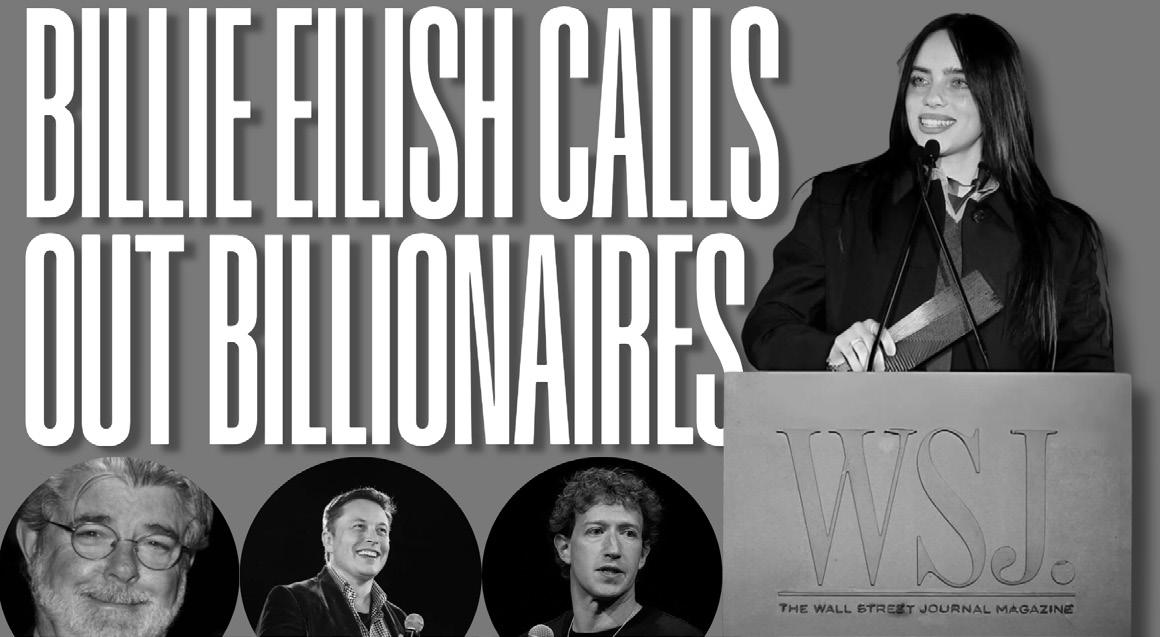
regardless of the potential backlash. Some notable figures who consistently use their platforms for advocacy include Reneé Rapp, George and Amal Clooney and Dua Lipa.
All these figures have been huge champions of social and political advocacy, particularly in support of human rights causes. They all recognize the effectiveness of increasing conversations as a result of using their platforms. Lipa has consistently utilized her Instagram account, with 88 million followers, to call for a ceasefire in Gaza and launch Service 95 to further her humanitarian efforts. The Clooneys have also leveraged their star status to launch foundations, such as the Clooney Foundation, which aligns with their advocacy and donation efforts. Reneé Rapp, with her confident and outspoken nature, has taken to award shows to address such topics, as well as displaying QR codes for donation drives before her concerts.
As Eilish urged in her speech, “if you have money, it would be great to use it for good things, maybe give it to some people that need it,” especially since “people need empathy and help more than kind of ever.” Every day, billions of dollars are collecting dust or being spent on superficial goods by the world’s richest individuals; in any case, these expenditures have little to no effect on their net worth. So, why is the conversation surrounding billionaires taking a more proactive approach to philanthropy, sparking controversy? Billionaires possess the power to ignite the change the world so desperately craves, especially in the current political climate. Truly, what is the point of holding so much influence and power amidst suffering if one refuses to stand up for what’s right, despite knowing that change is possible?
By MOLLY O’CONNOR
DIGITAL PRODUCER
Educating the youth can make or break the very fabric of society, and tampering with it is a sure way to lead to the demise of our nation. President Donald Trump has been using his power in this administration to manipulate history and civics curriculum to erase cruelties and forget the faults and failures that have led us to where we are now. This blatant disregard for proper historical education is a disservice to the youth of America and the future of our country’s society. Education should be focused on protecting teachers and students and providing students with the facts and resources they need to be successful adults and engaged citizens.
We cannot erase history simply because it makes us look bad. Trump seeks to remove Diversity, Equity, and Inclusion (DEI) from curricula because he thinks it frames our country in a bad light and makes students unpatriotic. In Executive Order 14190, titled Ending Radical Indoctrination in K-12 Schooling, Trump ordered schools to “instill a patriotic admiration for our incredible Nation and the values for which we stand.”
The document claims that these alleged indoctrination practices “not only erode critical thinking but also sow division, confusion, and distrust, which undermine the very foundations of personal identity and family unity.” If schools fail to comply with this, Trump threatened the elimination of “federal funding or support for illegal and discriminatory treatment and indoctrination in K-12 schools, including based on gender ideology and discriminatory equity ideology.”
While his attempts to make diverse curricula look like villainous anti-American propaganda may have deceived some, when we look past the misleading language we can see that he is simply trying to advance a narrow vision for the country that excludes many Americans.
My connection to this issue is especially personal, having been raised by a public school teacher my entire life. My mother has taught in the public school system as an elementary school teacher for 26 years, mainly in second grade, and it has become increasingly difficult for her to simply do her job because teachers are not protected against the many issues that they face on
a daily basis. According to a poll conducted by EdChoice this past September, just 22% of all American teachers are likely to recommend their profession, and I can vouch that my mother is part of that other 78%.
Growing up my sister and I had always been inspired by her passion for teaching and had dreams of following in her footsteps that she encouraged, but now as we come into the years of deciding our career path, she warns us to turn a different way. Her school stories have taken a stark turn for the worse, with unrealistic curriculum standards, cruel administration and consistent union losses. While she can’t speak from the high school perspective, evidence makes it clear that political pressure is making it much harder for everyone to teach. In that same study by EdChoice, it was found that over half of teachers report having to modify the way they teach and their curriculum due to political pressure. Rewriting curriculum is not easy, and these teachers are having to find entirely new ways to teach their students effectively.
High school students are not easy to engage, especially now in the age of cellphone
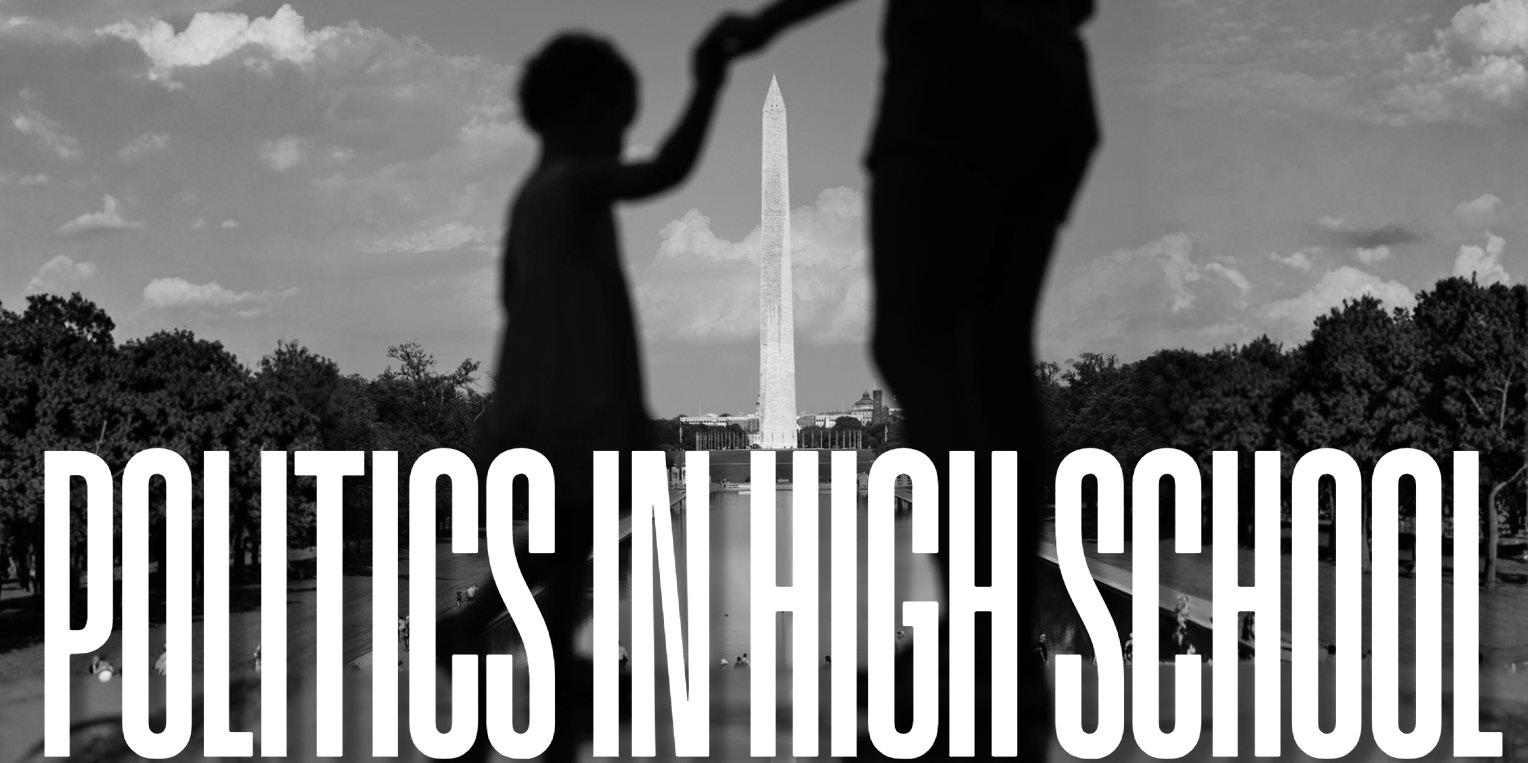
addiction and social media. But when diverse stories are incorporated into their curriculum, students could be more willing to engage, especially in more diverse districts. By high school, most students are tired of learning the same stories of American and world history that they have been taught for years on end. They are unrelatable for most, and redundant and boring to many. Adding new perspectives, especially as students get older and become more independent thinkers, can completely change a classroom dynamic and help mold the minds of these teenagers into prepared voters and informed and engaged citizens. If teaching students about liberation movements and factual injustices against different people leads to some
of them leaning to the left side of the political spectrum, then so be it. Learning about trickle down economics didn’t make me a conservative, it just gave me some of the knowledge I needed to decide where I stand. History, social science and civics curricula should provide the facts — all of them, not just one side of the story — for students to decide for themselves what they believe. Teaching ethnic studies, historical oppression and other less-taught diverse perspectives does not force students to think a certain way, but instead gives them all of the knowledge they need to make informed decisions in their lives and in the future at the voting booth.
By GABRIEL CAPELLAN STAFF WRITER
The world is moving in the direction of depreciation, and the youth are done with it. Different societies across the world are protesting against their governments due to their incompetence. We’ve seen it in America with “No Kings” protests, we’ve seen it in France with the calling for the resignation of President Emmanuel Macron, in Indonesia with protests against the price of living, in Nepal with their revolt against their government and in protests for the liberation of the Palestinian people in Gaza.
The line that connects all of these is the apathy we’ve received from our government officials and, to put it frankly, their inhumane decisions. In America, we’ve been faced with the blunt end of that stick with the longest government shutdown in history, including the loss of Supplemental Nutritional Assistance Program (SNAP) benefits, and the staffing and funding cuts across critical federal agencies. We’re losing pieces of our infrastructure that enable us to have an operating economy and opportunities to better ourselves at the expense of the greed inherent in tax cuts that favor
the wealthiest Americans.
So, what can Fordham do? I say the solution begins with shifting more towards the humanities. The teaching of humanities allows us to see beyond the framework of problem and solution, and more into the factors around these two terms and notice what conditions allowed both the problem and the solution to exist.
The humanities teach us how to learn and think. They allow us to be critical of the decisions we make and how to utilize the tools we create, most recently, Artificial Intelligence (AI). In September 2025, the school was given a $1 million donation for AI research by Peter Zangari, a Fordham alumni and a leader in financial markets. While this donation is meant for interdisciplinary AI research with an emphasis on finance, economics, asset management and data science, I found it appalling that a liberal arts institution accepted this donation with open arms. Fordham’s core values emphasize the liberal arts and the humanities as shown with our official university seal that reads “Arts, Science, Philosophy, Medicine, Law.” The direction this investment is taking the school in is stepping away from what it was founded upon and shouldn’t be taken so lightly. Shifting research focuses to artificial intelligence
inadvertently makes the humanities weaker.
The humanities enables us to understand our own human nature. I get that almost no one ever wakes up and says, “I wanna go to Philosophy 1000 today!” However, while many may dread these classes, they allow us to understand our mode of thoughts and how to look at something and think critically about it. For instance, take the problem of world hunger. According to the United Nations, over 1 billion meals were wasted every day in 2022, while a third of humanity faced food insecurity. The world produces huge quantities of food but many people do not get enough to eat. Some may find it easy to dismiss the problem, saying that there is nothing that can be done about it or that people need to work harder. Humanities students, on the other hand, learn to ask critical questions about the more complex dimensions of the problem, getting to the root of why many people are food insecure. The difference between these two responses is what the humanities is all about: looking past the immediate problem, getting to the root of it and imagining new ways forward. Theology Professor Leo Guardado explains it like this: “The humanities teach you how to learn and think. They invite you to the
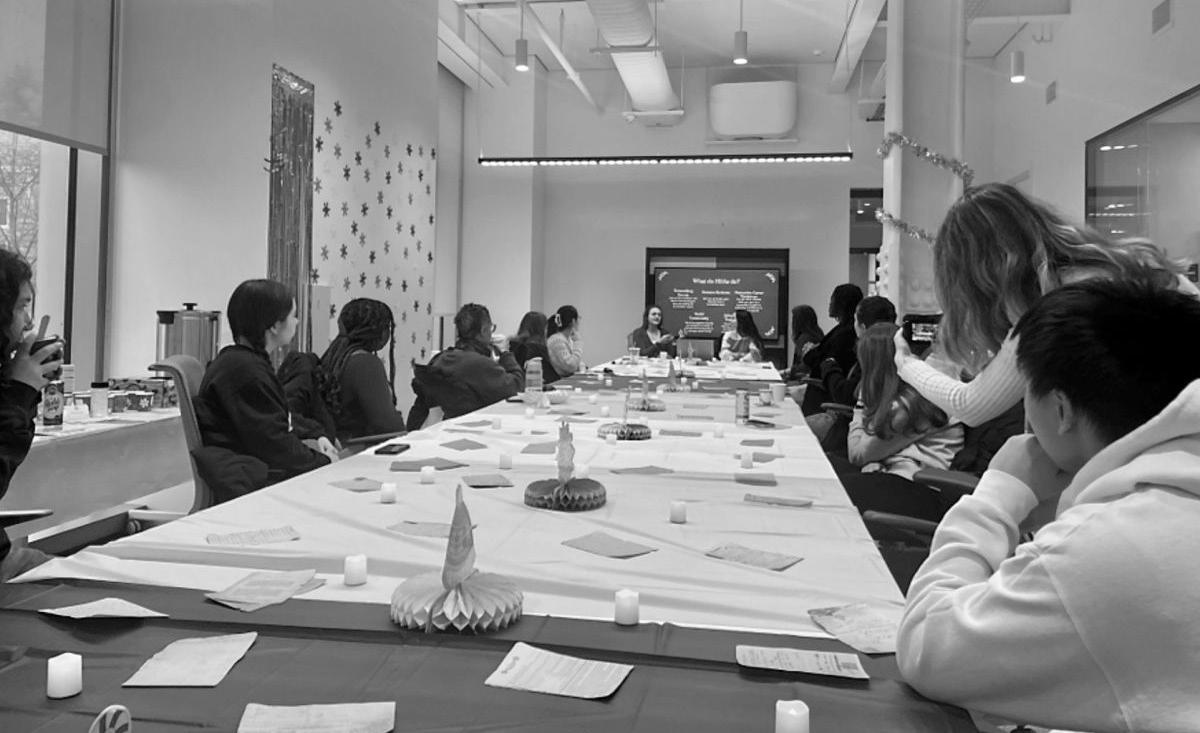
human world that isn’t quantifiable. Without that, what does it mean to be human?”
When looking at the American job market, it’s always in flux. When people attack the humanities, it typically goes like this: “Who’s going to hire someone who studied something we don’t need! STEM is what pushes us forward.” To that I say, look at the majors who have the highest unemployment rate. Computer engineering has an unemployment rate of 7.5% and physics sits at 7.8%. The highest on that list is anthropology with 9.4%. Those stats are disheartening but it’s important to remember that you can still make it in an adjacent field if you’ve studied humanities since they all still tend to the core question of, “how do we be better
humans?” Guardado said, “The humanities don’t shift as quickly. It’s not as volatile but not as many jobs [available] … It’s responsible to think about marketability and to not be trapped in the paradigm of what is viable to study and what is not.”
With the world constantly evolving, we’re living in an era of extreme potential change. Governments are being overthrown and we’re always walking into unprecedented times. With these questions looming, I truly believe it’s more important than ever to ask questions about ourselves than it is to uphold a system that will ultimately doom us all.
Gabriel Capellan, FCRH ’28, is a journalism major from the Bronx, New York.
By EMMA KELNER CONTRIBUTING WRITER
Just like the hundreds of millions of Americans around the country, I love Black Friday. Shopping? Good! Sales? Even better! Shopping and sales available online? The best! I still remember one year when my parents, my brother and I drove out to Woodbury Common Premium Outlets in Woodbury, New York at 11 p.m. on Thanksgiving Eve and shopped through the wee hours of the morning. What a time to be alive!
But when did this day of shopping ’til you drop begin? Unfortunately, nowhere good. The first recorded use of the term “Black Friday” was applied to the United States gold market crash in 1869. This term didn’t really resurface until the 1950s, when police officers in Philadelphia used the term to describe the chaos of the day after Thanksgiving, during which shoppers and tourists alike would flood into Philadelphia in preparation for the Army-Navy football game held every Saturday after Thanksgiving. By 1961, the term had caught on in Philadelphia, but it wasn’t until 1985 that it became used nationwide. Once the phrase caught on, retailers transformed the narrative of “Black Friday” into a positive one, in which Black Friday was the first day American stores turned a profit, shifting their balance sheets from “in the
red” (losing money) to “in the black” (turning a profit).
Today, Black Friday is the single busiest shopping day of the year in the U.S., serving as the unofficial start of the holiday shopping season. In 2024, U.S. consumers spent a total of $10.8 billion online on Black Friday alone. In addition to that, between the hours of 10 a.m. and 2 p.m. on Black Friday, online shoppers spent an average of $11.3 million. These numbers add up to a total that was over 10% more than what was spent the previous Black Friday and more than double the amount spent on Black Friday in 2017. Black Friday isn’t just a way for consumers to save money, it’s also a way for economists to track the state of the U.S. economy. According to Investopedia, Black Friday sales are a way for economists to measure the confidence of the average American when it comes to their discretionary spending. In other words, the amount of money spent on Black Friday reflects how comfortable Americans are with spending their money on non-essential items.
Even outside the U.S., Black Friday is a big day for shopping. While Thanksgiving may be a uniquely American holiday, the day after has become embraced by countries all over the world. It first emerged from the U.S. in 2008, when Canada succumbed to the appeal of Black Friday, and continued
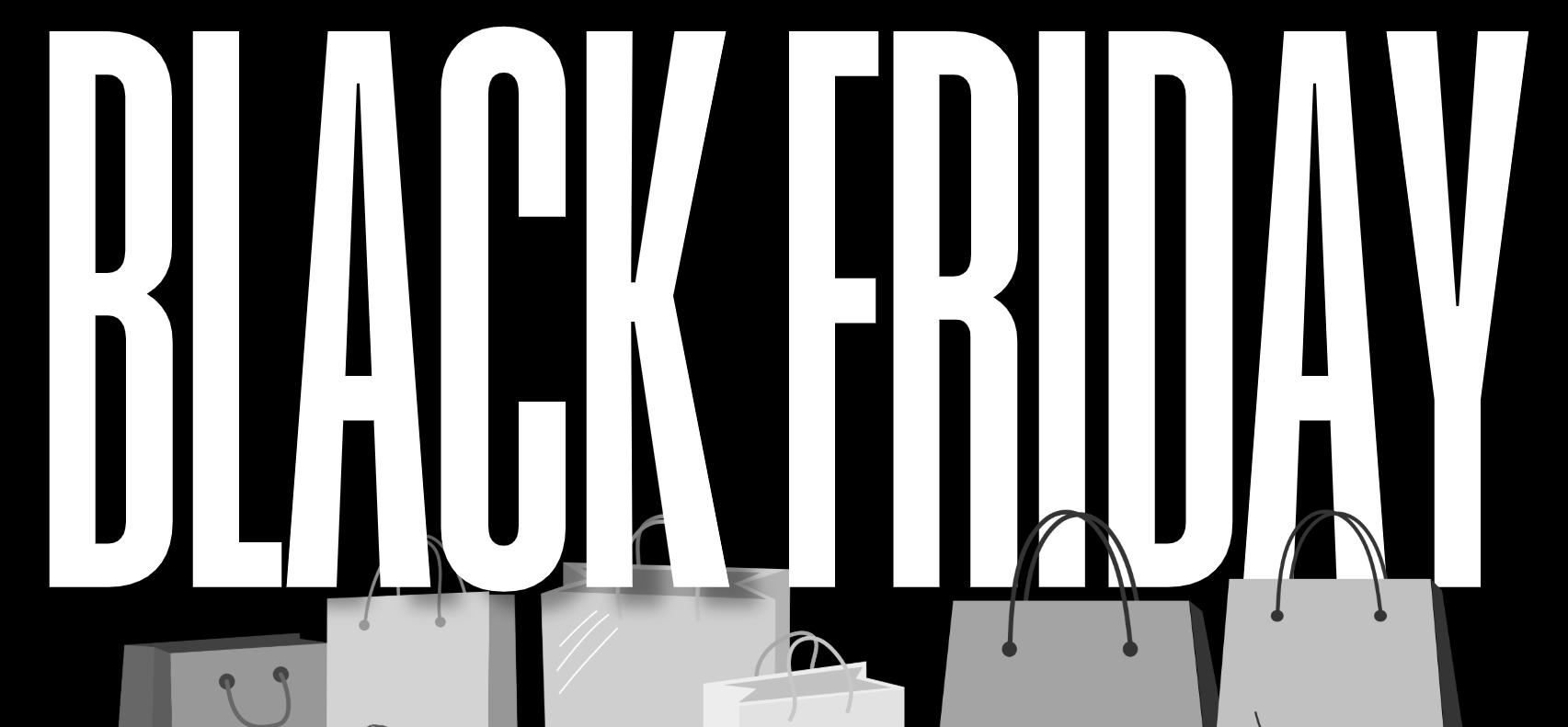
this path in 2010 with the United Kingdom and in 2013 with Oceania. Today, even Germany, Brazil and France take part. In fact, 50-60% of the world’s 195 countries celebrate Black Friday in some way, shape or form.
Unfortunately, all this buying and selling has significant effects on the environment. Professor Phil Purnell of the University of Leeds estimated that trucks delivering Black Friday purchases would release 400,000 tons of carbon dioxide into the atmosphere in the United Kingdom in 2024 alone. By the same token, the European Federation for Transport and Environment (T&E), a group of advocates for clean transport and energy in Europe, published an analysis of truck pollution during Black Friday. Their research estimated that Black Friday
trucks in 2024 throughout Europe would release 1.2 million tons of carbon dioxide, which is 94% more carbon dioxide than in an average week in Europe.
This holiday also impacts those involved in the actual work of packaging, shipping and delivering products. During this period, workers labor for up to 16 hours each day.
In 2023, Amazon workers held strikes and protests on Black Friday in more than 30 countries as part of an effort to lobby for higher wages and improved working conditions.
Fordham University’s environmental plan references these consumer patterns. The Laudato Si’ action plan urges each Fordham student to “see [oneself] as a citizen, not as a consumer.” While this is a nice idea, I believe a student can see oneself as both a con-
sumer and a citizen, especially on a quintessential American holiday like Black Friday! I certainly agree that buying 100 items on Black Friday is wasteful and unnecessary. However, buying one or two items that are high up on your wish list and are nicely discounted is what America is truly about. Despite the environmental drawbacks of Black Friday, I think the holiday is here to stay, and for good reason. Sometimes, all you want in life is 70% off at your favorite retailer. Speaking of, I really hope my family and I go back to Woodbury this Black Friday to find a nice deal on a product we probably wouldn’t buy otherwise.
Emma
By ALANA JONES CONTRIBUTING WRITER
National Vocations Awareness Week is Nov. 2-8, the Catholic Church’s celebration of vocations to the priesthood, diaconate and consecrated life.
“Vocation” is a term referring to God’s calling to a specific way of life: A person’s vocation can come in any form, from pursuing a certain career to becoming a priest. The priesthood, especially religious orders such as the Jesuits, has seen a significant decline in new members. Due to the decline in vocational interest, Catholic institutions, especially schools, have suffered. The decline has been gradual, yet steady. The disinvestment from vocational and religious life can be seen at Fordham in the Graduate School’s absorption of the Graduate School of Religion and Religious Education. Experts attribute the decline in enrollment in Parochial schools to multiple factors, including rising tuition costs.
Even within my own lifetime, the Archdiocese of New York initiated a campaign they called “Making All Things New,” a term that seemed like little more than PR speak for closing schools. Enrollment in Parochial elementary schools has declined, leading to dozens of schools in the Archdiocese of New York City to close or
to merge with nearby parishes. The “Making All Things New” initiative began when I was nine-years-old, and even as a child, I could see the impact closures had on their communities. Many schools throughout the city were closed, including multiple in the Bronx. One of the schools, All Hallows High School, had a student body that consisted almost entirely of students of color from working-class families. All Hallows Director of Admissions Orlando Brenes said, “This school is a beacon of hope. To take it all away is heartbreaking.” Failure to serve communities such as the All Hallows parish is a betrayal of parochial schools’ history and values.
Catholic schools have a history of serving as a means of social mobility, especially for Irish and Italian immigrants of the late 19th and early 20th centuries. Catholic schools offered community, education and preservation of the faith that was so important to them. In the 1970s, economic hardships and an increased number of lay-person staff led to increases in tuition, a trend that has continued. Times of economic hardship force families to make difficult decisions, contributing to the decrease in enrollment. Keeping tuition reasonably affordable is a pragmatic goal
to strive for: Making Catholic education accessible to more people would solve two problems at once, increasing the sense of community in Catholic schools and parishes, and a possible increased interest in vocations, but I would argue Catholic education is worth investing in regardless.
Some schools, including Holy Cross High School in Queens and Xaverian High School in Brooklyn, have responded by expanding their classes from single-sex to co-ed and investing in new facilities. President of Holy Cross High School, Mark Mongelluzzo, has said, “For Catholic schools to survive, you’ve got to innovate and you’ve got to motivate.”
The closures are a product of multiple factors, including increased secularization, but I would argue that Catholic education offers more than just an explicitly religious experience. For many students, including myself, Catholic schooling has been a central part of their lives. Despite not being the most religious person myself, I greatly appreciate the well-rounded education I have received at Catholic schools, as well as the relationships I have made with teachers and professors. Everyone in my family attended Catholic school, and it has become a significant part of my life and cultural identity.
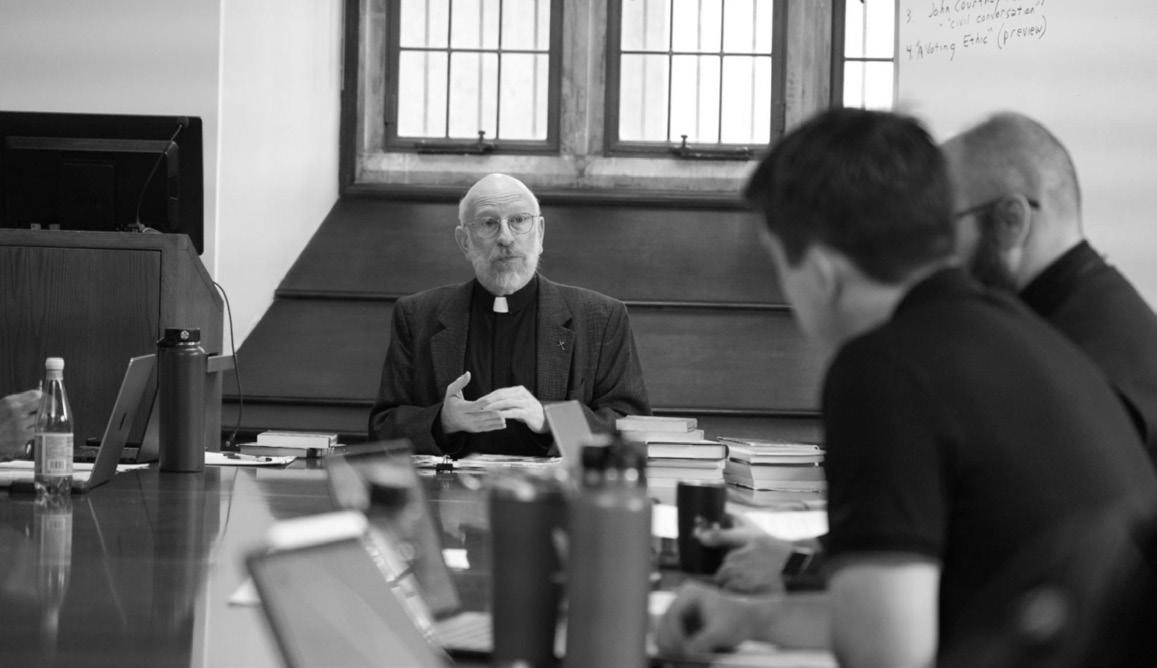
I had the pleasure of interviewing Thomas Massaro, SJ, a Fordham professor of moral theology and a Jesuit priest. Massaro had a similar experience in Catholic schools, attending Regis High School in Manhattan and joining the Jesuits in his early 20s with the support of his family. Massaro joined the Jesuits in the 1980s and witnessed the decrease in membership for decades; however, he retains a sense of hope for the future. Pope Francis, the first Jesuit pope, offered hope for new members, but did not offer the saving grace some had hoped. Massaro is guardedly optimistic, but recognizes the impact of secularization on the church’s role in society. For those who want to hear more, Massaro will host a lecture on the role of secularization in our society, as well as the church’s response to it, on
Feb. 25 at Lincoln Center. Massaro’s diagnosis for Jesuits is as follows: if we do a good job, we’ll attract people. Massaro also notes that numerical decline is not the only metric of vitality; influence over ministries offers an avenue of hope for Jesuits, who continue to be active in education and service. Catholic education has a lot to offer in the ways it creates community, increases social mobility and fosters strong moral values. However these benefits rely on continued investment in parochial schools and the desire to find innovative solutions to the problems facing them today.
Alana Jones, FCRH ’27, is an English major from Manhattan, New York.
By MCKENNA COVENY CONTRIBUTING WRITER
On Saturday, Nov. 1, a 60-year-old program that dates back to the Great Depression, on which approximately 12% of the United States’ population relies on to make ends meet, was disrupted. The Supplemental Nutrition Assistance Program (SNAP) was unable to deliver its benefits to its customers due to a lack of federal funding. Colloquially known as food stamps, this program provides millions of Americans with cash cards called Electronic Benefits Transfer (EBT), which help families purchase basic household items and necessities for a limited period of time. This disruption has left many Americans in an incredibly difficult situation, as many rely on this program to survive. This disruption occurred amidst the longest government shutdown in United States history, one that began due to a bipartisan disagreement over the Affordable Care Act (ACA), which, in essence, makes it easier for Americans to purchase and retain healthcare. In an attempt to lessen the blow of this delay caused by the shutdown, two federal judges ordered the Trump administration to utilize some of the retained emergency funds held by the government. Unfortunately, this attempt to at least partially fund SNAP benefits until the government
reopened proved to be a fight in itself after the Supreme Court reversed the lower court’s decision.
Prompted by this nationwide struggle, Fordham University has responded. I must say, I am quite proud of the efforts taken by our community. On Oct. 31, President Tania Tetlow sent an email regarding the pressing situation to the student body.
According to the email, “many organizations,” including Catholic Charities, have reached out to Fordham in search of volunteers, as it is likely food banks are to be overwhelmed. The email also went on to mention other ways students could, if unable to volunteer, help their community. For example, food pantries were set up at both Lincoln Center and Rose Hill campuses, providing students with opportunities to drop off non-perishable, essential food items at the designated locations. These food pantries, organized by Campus Ministry and the Center for Community Engaged Learning, have received an overwhelming amount of support from student and faculty members alike, and are said to have gathered over 200 volunteers to help keep them operating smoothly. These pantries are open Monday through Friday from 11 a.m.
to 4 p.m., and have been operating largely through donations received from both the university and students. Other ways to help out include donating extra meal swipes, purchasing items off of the campus’s Amazon wishlists or making a monetary donation towards the Fordham Student Emergency Fund; all of which are options that have been utilized by the student body.
It is worth noting that these efforts have not only been led by the Fordham staff, but also by students as well. One student-led organization called Fordham Food Walks has also aided the effort in keeping our community fed. On their social media page, they post regularly regarding both how to donate and with information on what is happening with the SNAP benefits and why. Moreover, on their profile, they provide a link to a GroupMe, where students can directly receive information on how to get involved. In addition to this, they also post about their work with an organization based in the Bronx called Part of the Solution (POTS), which works to fight poverty and hunger within the Bronx community. In fact, just this past week, Fordham Food Walks donated 409 meals to the organization, working even harder in light of the recent struggles with SNAP.
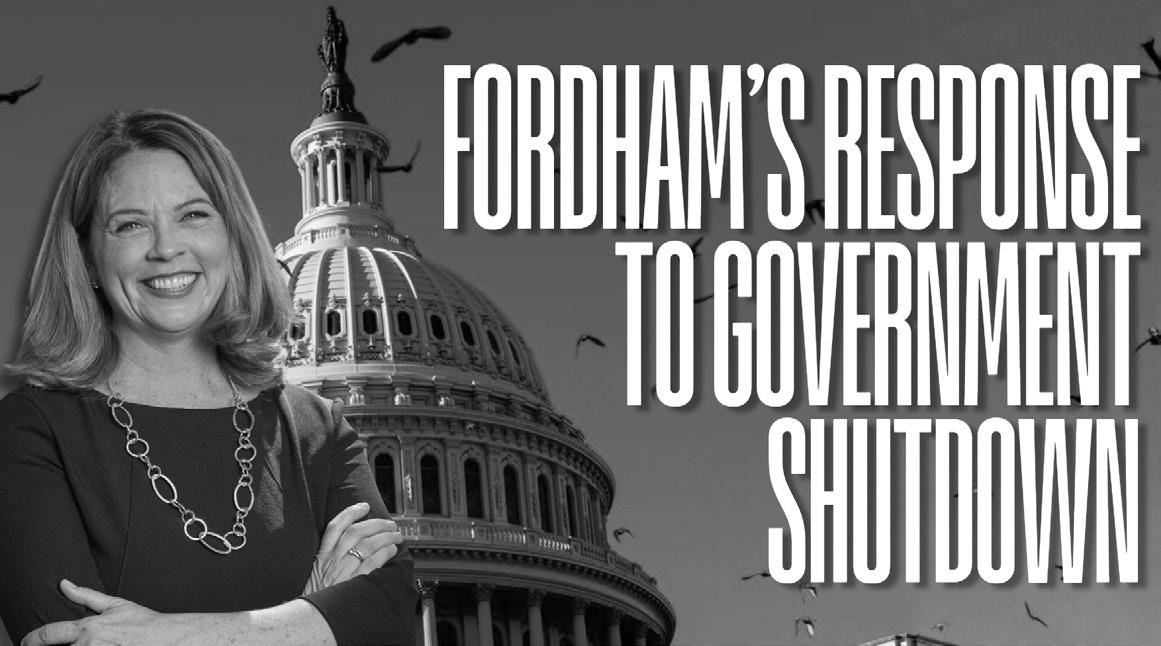
As the Jesuit University of New York, Fordham is an institution not only dedicated to providing a rigorous, yet rewarding, education, but also to fostering the values espoused by the tradition of Catholicism. A vital component of these values includes supporting one’s entire community, regardless of race, religion, social background or political beliefs. For me, the email sent out by Tetlow and the subsequent actions of the Fordham administration and students do an incredible job of demonstrating our values. It proves that we are not only willing to say we care, but also to show it.
Even so, while I feel the efficiency of these organizations and efforts made by our community has been proven, and is continuing to be so, we are not out of the woods just yet. This continues to be
the case despite the fact the United States government has officially reopened this past Wednesday night, after President Donald Trump signed an agreement that extends funding for most government agencies until Jan. 30. In fact, it may take awhile until SNAP benefits are awarded in full to Americans, and if they are, the process will likely be even further delayed as government agencies work to find their footing again. Despite this, I firmly believe that Fordham University has done an admirable job of responding to the situation, and I am incredibly grateful to be able to be given the opportunity to be part of the effort in keeping our community members safe. Go Rams!
McKenna Coveny, FCRH ’27 is a comparative literature major from Houston, Texas.
By JOHANNA BROOSLIN STAFF WRITER
We are all victims of the streaming service epidemic. Having a Netflix account used to mean having access to every show or movie you could want to watch and never needing to deal with ads, all for just $7.99 per month. Then a new streaming service, Hulu, arrived shortly after, and bought up licenses. Suddenly, content was fractured between two different companies. This was okay, though. It’s only two small fees per month for a wide variety of shows and movies. Way cheaper than cable. Then came Amazon Prime Video, Disney+, HBO Max, Peacock, Paramount+, Apple TV+ and many, many more. The landscape of streaming services became overcrowded, ruining the concept altogether.
The fragmentation of content between different streamers destroyed the simplicity that made streaming services so appealing in the first place. Having one or two meant having access to nearly every piece of media one could want to consume. Now, if you want to watch “The Office,” you need Peacock. Do you finally want to watch “Friends” for the first time?
I hope you have HBO Max. “Black Mirror?” That’s on
By ALINA BRODERICK CONTRIBUTING WRITER
A tip for avoiding embarrassment while volunteering at the New York City Marathon: When you see Anthony Ramos three feet away from you, pausing to take a sip of water, do not shout, “Hamilton,” at him. He will give you a sassy side eye that haunts you for weeks to come. You will feel bad, and you will be reminded of this feeling every single day for the next week as marathon content overwhelms your feed.
Marathon day, known as the day when New York City comes together and displays its resilience and strength as a city, feels like a unique day. However, it is, in reality, simply New York City at its core. The marathon is not just a New York event, it is New York. The only real difference is that locals willingly throw themselves into the crowds, joining the tourists in the madness. New Yorkers, wacky in their own right, obviously only add to this chaos, whether they’re showing up to run in costumes, passing out shooters to runners or coloring in cardboard signs with cheeky phrases to hit on hot, shirtless runners.
There is nothing more New York than the runners themselves. Showcasing all walks of life, backgrounds and skill levels, New Yorkers (and those honorary New Yorkers for
Netflix. It has become too much.
The amount of streamers has also brought on a financial burden. Each service has a “small” monthly fee that users must pay to access the content. The small fees quickly add up to big costs. According to Deloitte’s 2025 Digital Media Trends data, the average subscriber pays $69 per month on streaming services. Although this is less than the average $125 per month the average cable user pays, the prices are still costly, and will only become more expensive as more streaming platforms are created and these companies continue with the dreaded price increases. The affordability once characteristic of streaming platforms is gone.
The expenses do not end there, as many platforms have thrown ad-supported tiers into the mix. Netflix currently has three tiers: Standard with ads, Standard and Premium. Disney+, Hulu, HBO Max and Prime Video have also created a similarly tiered structure to get users to pay more. Netflix’s cheapest option, Standard, with ads, costs $7.99 per month, and the user does not even get access to Netflix’s full catalog. Removal of ads was one of streaming’s biggest selling points. Watching your favorite show without constant interruptions
made for the perfect television experience. Now, this standard feature has been repackaged as an upgrade, allowing the companies to charge customers even more money. Another major issue with streaming services is how they handle their original shows. Many platforms pour millions into creating new shows, release them with little to no marketing and then quietly cancel them after a season or two when they do not perform well. Shows are no longer given the time to develop an audience; they either must go viral immediately or they will be canceled. Overall, streaming services had a television cancellation rate of 12.2% while cable’s was 7.2%. HBO Max has one of the worst cancellation rates. Between January 2020 and August 2023, they cancelled 26.9% of their shows. Audiences feel cheated because, after getting emotionally invested in the story, it gets left unfinished. Worse, people become discouraged from starting new shows at all, in fear of liking the show and then finding out they will never get to see a second season. Streaming services have also begun to crack down on password sharing, a move that has angered both those who pay for streaming and those who do not. Platforms like Netflix, Hulu and Disney+
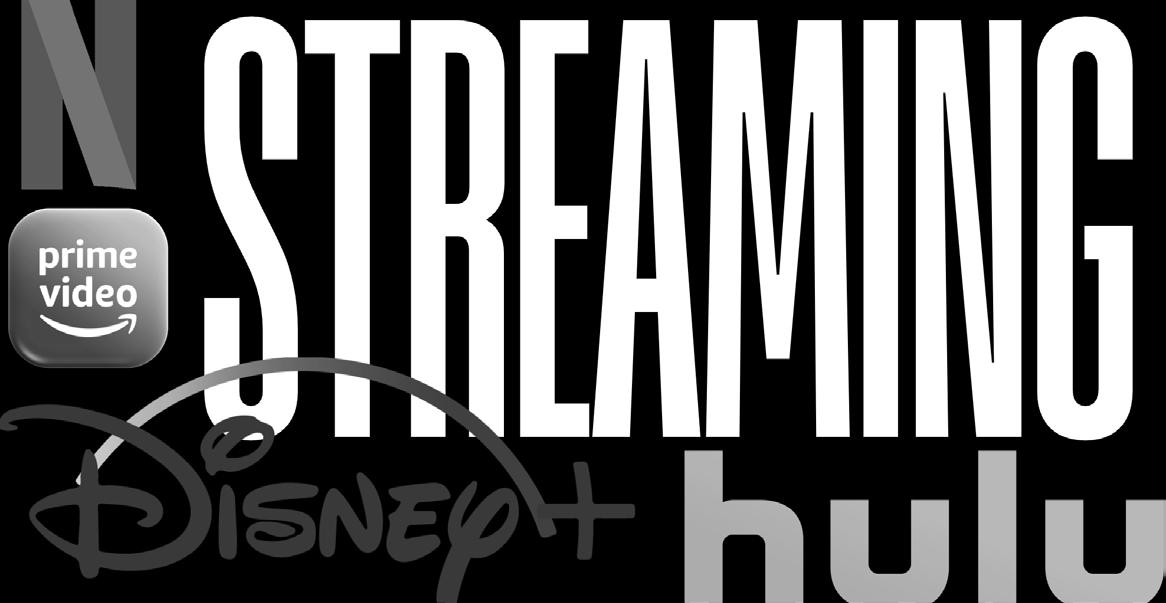
have implemented strict limits or extra fees for additional users outside of the household. For college students, this is one of the worst features of all. Who has not had a late night where all you wanted to do was just lie back and watch an episode of “Gilmore Girls” to get into the fall spirit, only to be met with the dreaded “Your device isn’t part of the Netflix Household” message because the account is connected to your house’s Wi-Fi network. It is either too late to text your parents to send you the code, or you just know they will not get back to you in time. For students juggling classes, internship applications and social lives, these restrictions take away a much-needed moment of relaxation.
Streaming services, while great in theory, have lost much of their convenience,
the day) show up. The energy of the crowds is palpable, as they wait to see some of the most impressive feats of athleticism one can watch for free. We eagerly wait to see the elites, who no one but really dedicated past crosscountry kids actually know the names of (shoutout twotime Olympic marathon champion Eliud Kipchoge, casually jogging a marathon faster than I could run a half) and the paralympians, with more strength in their triceps than in my entire body. But wait, who gets to start first?
The influencers, of course!
In case anyone was confused as to why Lexi Watts was so far ahead — she’s fast, sure, but she’s not that fast; she started an hour earlier than the elites. And then, of course, the normal people headed out after that; just your everyday superhuman mothers, firefighters and insanely fit grandmas getting in a light 26 miles in before it gets too cold. They presumably crossed the finish line too at some point, but not until 4-5 p.m., at which point it’s practically dark out, and all the crowds really did wake up so early to spectate.
The spectators are a whole different ballgame. What could possibly be more New York than pushing and shoving through crowds, sprinting down the stairs to the subway and only standing still for at most 10 minutes be -
fore moving on to the next location (plus a coffee break or two)? All this to cheer for your suffering friend, running by for 30 seconds until blindly following their blinking bib number dot to the next touchpoint. Oh, but Connecticut WASPs, don’t you worry, while the runners get the pleasure of crossing into every borough, most of the cheering friends only make it to Brooklyn and Manhattan (it’s really just more convenient, right?).
Now, imagine the volunteers. Demographically, they’re about half students, half locals. What happens to us? We spend the day handing out water cup after water cup, 90% of which no one gets to drink, and instead seeps into our clothes, hair and sneakers. All the while you stand there, arm outstretched, hoping and praying that the runners are still able to judge the distance enough to avoid running into you. Now obviously, volunteers aren’t running the 26 miles – I’m sure that hurts more – but standing for that long, cheering until your throat is torn, that’s hard work.
Watching all the runners does strange things to your mind. You see people running in the eight-minute pace group coming up to you at mile 20, and you’re like, “yeah, I think I could do that” (I’m emphatically shaking my head no. No, I re-
affordability and freedom that once made them so special. The cheap, ad-free alternative to cable has evolved into a fragmented, expensive and frustrating landscape. Had streaming services stayed as they initially were, they would be the perfect option over cable. Unfortunately, there are far too many platforms and the prices are too high, taking away from the simplicity and value that made streaming appealing in the first place. I still opt for streaming over cable because the shows tend to be made at a higher quality, but the model needs to be fixed soon to maintain their relevance, or streaming platforms will become seen as another costly system that feels just like the cable bundles they replaced.
Johanna Brooslin, FCRH ’27, is an English major from Medfield,
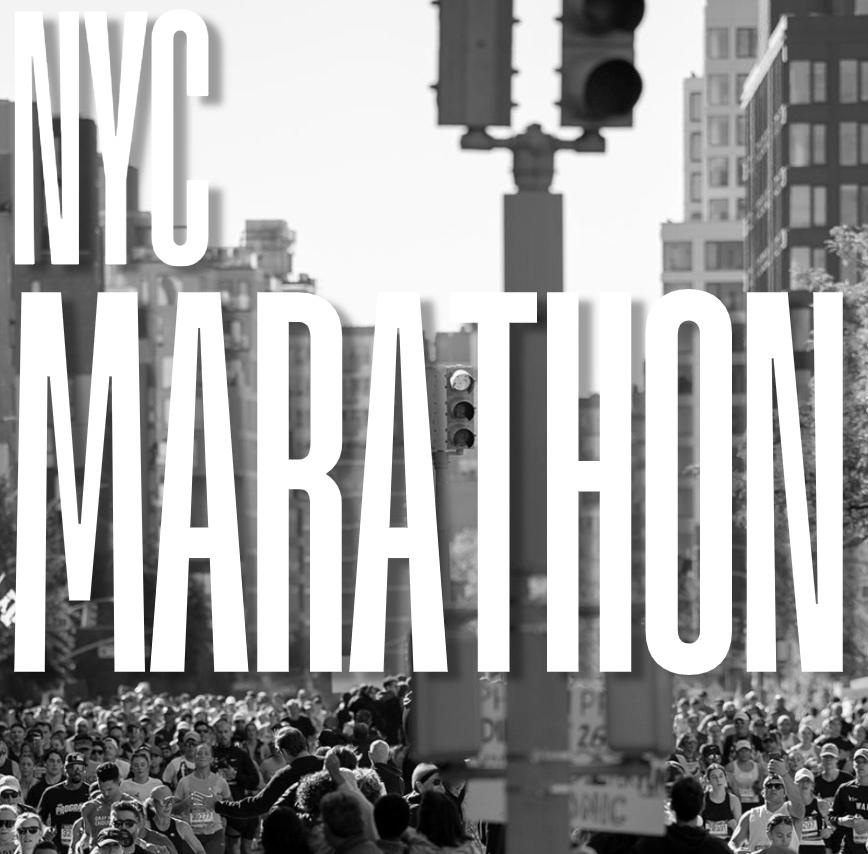
ally can’t). Nevertheless, you leave inspired, desperately hoping to sign up for next year’s race. Granted, anyone who volunteers to work the marathon has likely thought about running one at some point in their life, but still, witnessing hundreds of people run by you, actually doing it, leaves you with the most intense forms of FOMO and motivation ever felt in your life. The day ends, and it’s one of the best days of your year. If you’re not falling for the resilience and strength narrative, who even are you? Did you not see the mother pausing to hug
her toddler on the sidelines? Or watch Hellen Obiri shatter the course record for women? The cheering crowds, the finish line tears, it’s all New York. This city’s genetic makeup is like no other; it attracts us all. Anyone can be a New Yorker for the day, no matter where you’re originally from, because at its heart, New York is an insane, contradictory place that’s not always perfect, but definitely provides us the strength to take on new challenges and cross our own finish lines.
Alina Broderick, FCRH ’26, is an English major from Hannacroix, New York.
By JACQUI LYSON CONTRIBUTING WRITER
Vintage baseball cards are pieces of art. These cards are nostalgic for lovers of baseball and have become a main collectable item in America.
Jefferson R. Burdick has one of the most distinguished collections of historical baseball cards, including the 30,000 cards that date from 1887 to 1962, that he donated to The Metropolitan Museum of Art. Burdick’s retro baseball cards are available to be seen until Jan. 20, 2026.
Baseball cards originally were placed in products to entice customers to buy them. As gum, tobacco and Cracker Jack are most heavily related to the game of baseball, it is clever to include baseball cards in such products. When buying a box of Cracker Jack now, I can expect to find a hidden sticker, within the product, with a very basic design. So while viewing the numerous baseball cards in this exhibit, I was surprised to learn most of them were created to entice customers, because of their amusing attention to detail.
One collection I enjoyed named “Heads-Up,” was created for a past American chewing gum company: Goudey Gum Company. Iconic players including Bob Feller, Jimmie Foxx and Hank Greenberg are depicted playing different baseball positions with
enlarged heads connected to seemingly hand-drawn bodies. Not only did I find these specific cards amusing due to the unbalanced proportions, but also impressively detailed. Behind each player were more hand-drawn features that were specific to each of them. Behind Foxx, for instance, are the words “one of the leaders for homers” with an even smaller cartoon figure running bases above the statement. Each card was uniquely designed to highlight the talented baseball player depicted on such a baseball card. Similarly, Topps Chewing Gum Company also used baseball cards to promote their gum before becoming primarily known for their trading cards and production of other collectibles. Listed under “1954 Topps Regular Issue,” these four cards had a compelling design I quite enjoyed. The layout consisted of a head shot of the baseball player, in color, with a smaller full-body action shot of them overlaid, in black and white. Their name, position, team and team logo were all at the top of the card, and their signature towards the bottom. The cards felt very nostalgic as they had an exciting tone with the bright colors and cheerful portrayal of the players.
Not only were the baseball cards created for gum companies detailed, but so were the
cards intended for tobacco companies. The baseball cards included in the collection titled “Gold Borders,” were intended to be sold with the American Tobacco Company products. These cards depict numerous more baseball players, but instead of having a cartoon quality to them, they have a handpainted look. I found these cards especially impressive because of the artistic detail that was created on such a small canvas. These cards focused on the headshots of the players with their name, team and signature produced below them. Each player received their own vibrant background that did not directly compliment their team’s designated color. When placed next to one another, these cards are attractive, especially with the vintage aspect to them.
Although these cards were intended to be found and viewed individually, they create their own joined artistry when formatted next to one another. Each company’s individuality in the choice of design of a baseball card is astonishing and beautifully unique. The brilliant collaboration between The Met and Burdick’s collection creates a never before seen brilliant homage to the culture of baseball cards.
The immense level of detail in these cards that were only created for advertising purposes is vastly different from
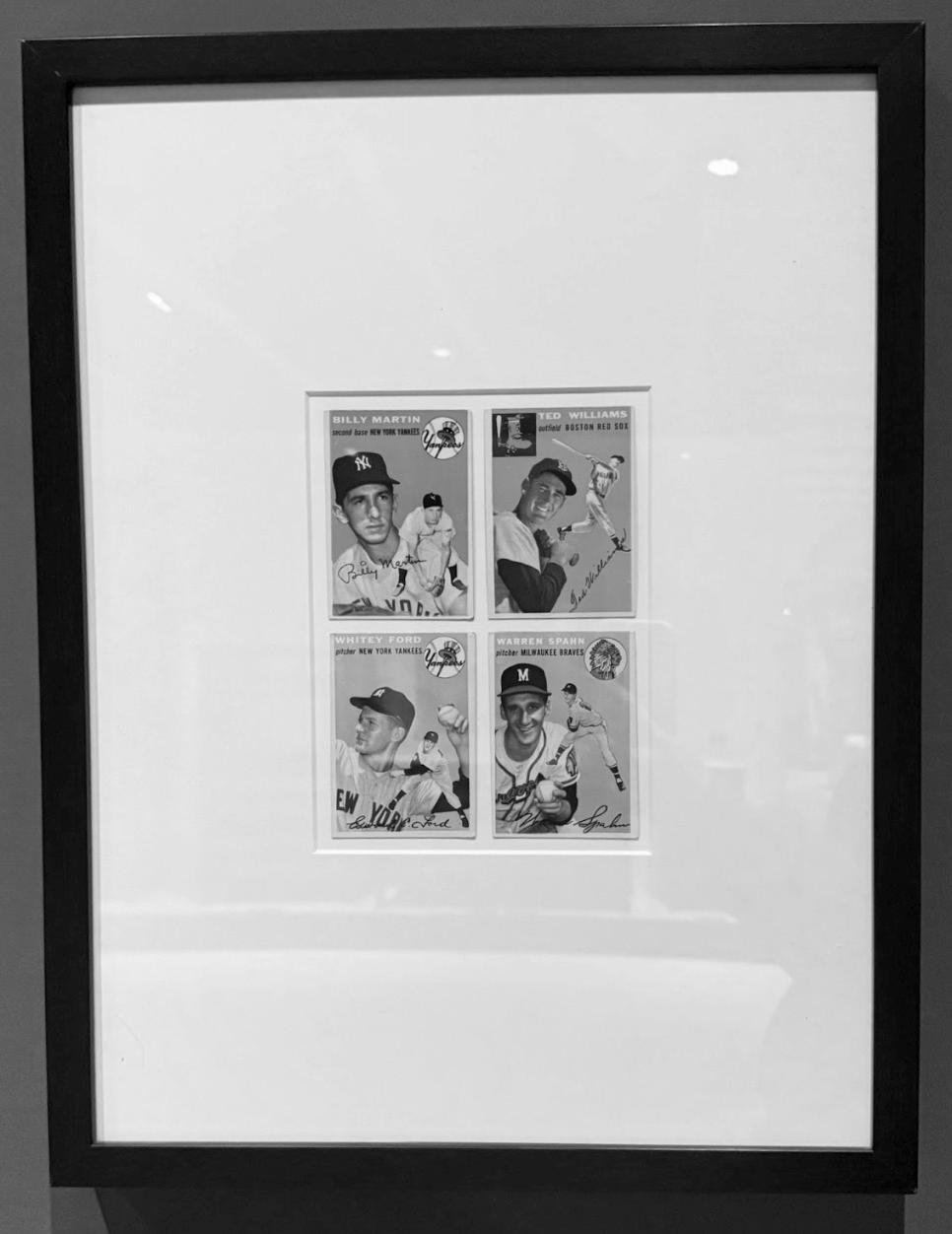
the mass-produced simplified designs created for products today. From hand-drawn cartoons to photographs and painted cards, it’s clear how baseball cards became the sought after collectables they are today appearing in The Met. It’s astonishing to think that the original intention for these cards was to find them and enjoy them for only a short amount of time.
The current appreciation many others can have for the artistry of these baseball cards would not have been possible without Burdick’s collection of these ephemera collectibles. Baseball fan or not, I would encourage anyone to visit this unique exhibit at The Met or even view these baseball cards on the museum website to admire their compelling nature.
By EMILY MCCALL CONTRIBUTING WRITER
The High Line has been a pinnacle landmark of New York City and Chelsea since its first debut in 2009, and since then, it has continued to grow. Stretching from Gansevoort St. to 34th St., the High Line is an almost 1.5-milelong elevated walkway over West Manhattan.
Oftentimes, when living in such a bustling city, it becomes difficult for residents to simply take a relaxing walk, as the sidewalks are constantly filled with people rushing to get to someplace or another. Additionally, with the cars rushing by and honking, it turns a therapeutic experience into an anxiety-inducing one. The High Line offers an escape from this for so many people. With many benches and elevators throughout, it is a free and accessible park that allows anyone, from young children to elderly individuals, to enjoy it.
My experience with taking seasonal walk along the High Line began with a quick trip down from Rose Hill via Metro-North and the 7 train to Hudson Yards. Somehow, I ended up choosing the best possible time to do this; a
Saturday morning with the sun shining — so much so that it almost felt like spring. Many others must have noticed the weather as well because the walkway was fairly crowded, but not so much that I couldn’t get through. Closer to Hudson Yards, I took notice of three large candlestick sculptures standing just off the path. Designed by Tai Shani, they are part of his art installation titled “The Sun is a Flame that Haunts the Night.” The candles, made of resin, that never go out represent a break in time, which is what a walk on the High Line can mean for many people. They were added to the park in April 2025 and will remain there until March 2026. In addition to this piece, there are many other commissioned projects throughout the park, ranging from billboards to sculptures to interactive sensory tours. It wasn’t just the designated projects that caught my eye, but also the countless examples of street art covering the neighboring buildings. Some were murals stretching above the walkway, while others were only visible from a particular angle between two buildings. In a way, it is
similar to a museum, only with the artists being unknown and the canvas being the architecture of New York City.
Yet even still, the most captivating site on my walk was not a man-made art installation or painting. It was the vibrant, colored trees that seemed to glow in the sunlight. The array of yellow, orange and red covering what once was green made the High Line all the more enjoyable. I found myself stopping to take pictures of each one I saw just to walk a few more steps and be struck by the beauty of nature once more. Even though I did not complete the full 1.5 miles, I definitely took much longer than I would have taken by constantly pulling out my camera every couple of steps. It was truly the most perfect day.
To make it even more of a movie-moment spot, the High Line offered QR codes to scan titled “Music to Walk to.” Anyone is able to scan this and subscribe to their newsletter, receiving an email with their perfect playlist; right now it is “Spooky Season” themed, though I am sure it will be transitioning soon! Towards the conclusion of my journey down the High

Line, many vendors began to pop up. Art, posters and various prints filled their tables. Against the backdrop of the Hudson River and the fall leaves, I completely forgot I was in such an active and grand city — completely lost in the moment. Unlike the summer and spring, it was not unbearably hot and sweaty nor beyond freezing like in the winter. The weather was
I recommend anyone take this opportunity of a nice fall day to go out and walk the High Line themselves.
To conclude this journey, the walk ended only a few blocks away from another New York City staple, Chelsea Market. It was yet another perfect conclusion with the market’s various shops and restaurants available to enjoy just beneath the walkway.
By MARY HAWTHORN MULTIMEDIA DIRECTOR
“Courage. Compassion. Kindness. Friendship. Character. These are the qualities that define us as human beings, and propel us, on occasion, to greatness.”
-R.J. Palacio
I read “Wonder” for the first time when I was a fourth grader at Parkway School in Greenwich, Connecticut. I vividly remember sitting on the swings at recess with my friends as we all flipped through the pages of our bright blue books. In 2014, everyone was reading it, and as a book lover myself, I was eager to dive right into the novel that everyone was raving about. Ever since then, I have been captivated by this quote. I love it, and am honored to have it welded to my high school experience at Convent of the Sacred Heart as my senior yearbook quote. Its bluntness is so powerful and encapsulatory of the traits that truly define who we are.
R.J. Palacio’s novel “Wonder” is one of the most successful children’s book as a New York Times #1 bestseller with over 15 million copies sold across the globe, dominating the charts for over 450 weeks. Known for its lessons about growing up and being kind, the book touches the heart of each reader. In 2012, when it was published, “the book’s
message inspired the Choose Kindness movement and has been embraced by readers around the world, with the book published in over 55 languages.” This project focuses on “bullying prevention, intentional inclusion and youth mental wellness,” while reminding youth of the importance of loving themselves.
Just five years after the novel was released, “Wonder” was made into a movie starring Owen Wilson, Julia Roberts and Jacob Tremblay. Set in New York City, the movie is loyal to the novel, showcasing the “incredibly inspiring and heartwarming story of August Pullman, a boy with facial differences who enters the fifth grade, attending a mainstream elementary school for the first time.” It is rare to find a film adaptation that is just as good as the text itself, and “Wonder” really is that great. The actors are phenomenal, the sets are so realistic and the emotions evoked about how overwhelming childhood can feel is so authentic.
The protagonist August, also known as “Auggie,” is a true beacon of courage, compassion, kindness, friendship and character. He valiantly overcomes any obstacle he encounters while radiating with positivity. A true ray of sunshine, he resiliently marches through life despite
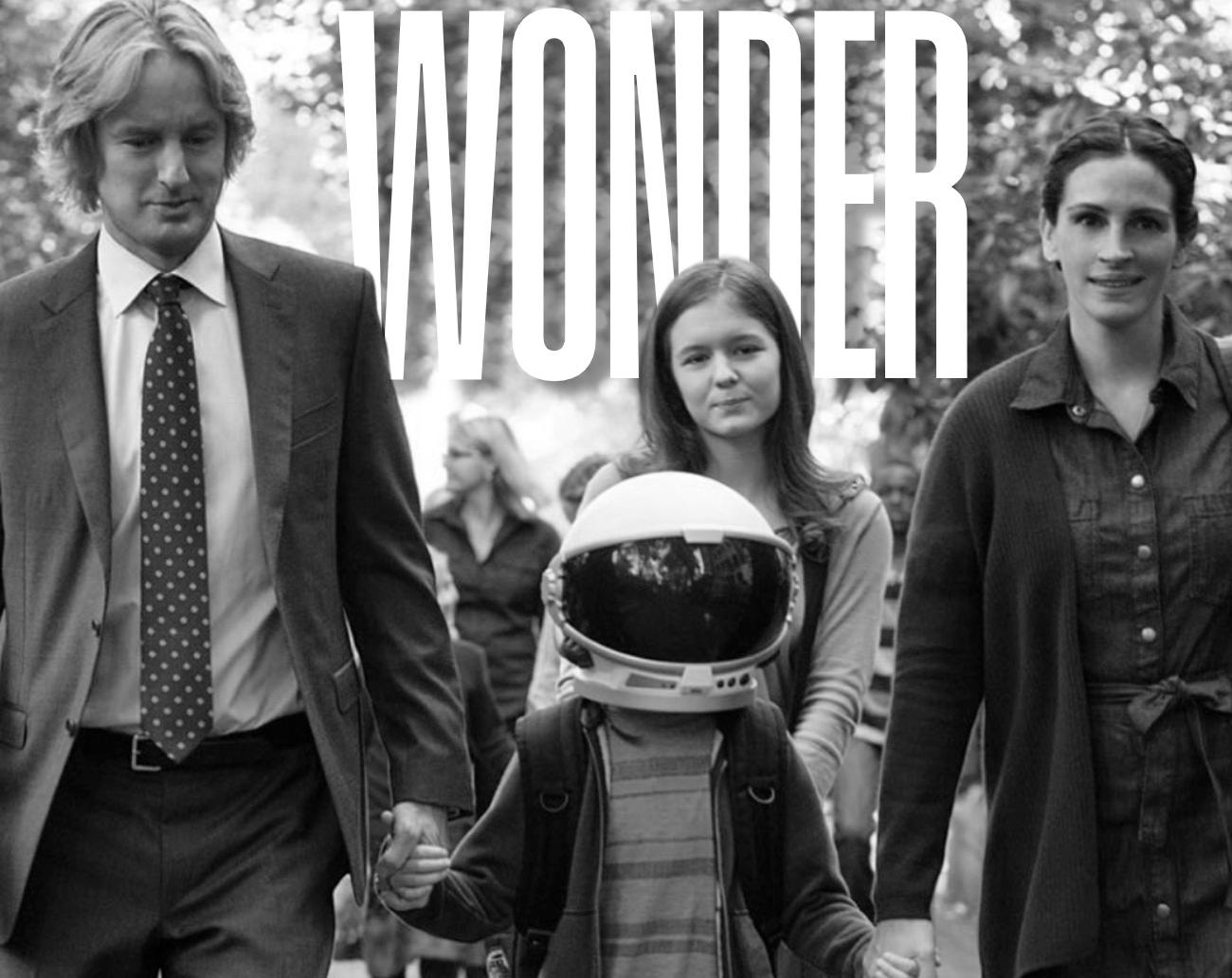
the cruel bullying of others. No matter what age you are, this book will resonate with you. Although this novel is meant for elementary and middle school students, everyone can take away something meaningful from it. This story is so moving because it is unafraid to show how destructive childhood bullying can be, while emphasizing the power of treating people with kindness. The lessons about treating
others with respect and compassion, while moving forward with courage and character, are reminders that we all need.
As Thanksgiving approaches, and in the climate of our world, it is crucial to emphasize the importance of treating others with kindness and respect. No matter how small the action may be, no matter how old we get or how stressful life becomes, we must remember
that kindness is what propels us to greatness. Not only does this book remind you to be kind to others, but it also reminds you to be kind to yourself. Having the courage to take the time to do what makes you happy is of the utmost importance. I hope everyone in the Fordham University community can take some time to rest and relax during the upcoming break, and hopefully enjoy this incredible story.
By LARA EJZACK CONTRIBUTING WRITER
College students — historically known for having devastating bank statements — live in one of the most expensive American cities: New York City. This paradox may seem cruel to any Fordham University or NYC college student, and that’s because it is. However, these collegiate individuals are able to put their educated minds to good use and find crafty ways to stay financially afloat in this town of $10 iced lattes.
Seeing as not all students can qualify for work-study or on-campus jobs, and even those that do can only work 10-15 hours a week, students who are especially interested in having some fiscal wiggle room have gone rogue to look for more opportunities.
In order to cover the costs of urban shopping and dining, Joanna Reyna, FCRH ’28, works as a driver for the Ram Van, the intercampus shuttle. However, she has picked up another gig to fund her expenses.
“I walk a little girl from daycare home every Monday,” said Reyna. Her new job helps fund her shoe-buying habit and provides an easy form of income to give Reyna some
more liberty with her spending. Instead of restricting her purchases to the bare necessities, this extra inflow of money has given her independence and freedom to splurge more on outings in the city.
“If I want to go treat myself to an ice cream or a meal, I can go do that,” explained Reyna. “I would 100% recommend this life; it’s nice to have pocket money.” The daycare chauffeur went on to say that she appreciates not having to rely on parents for any kind of allowance. Although Reyna has created a lifestyle with more responsibilities and time commitments, her schedule doesn’t pose an issue.
“You just have to balance it out,” said Reyna. “Right now I really only have it Monday, Friday, and Saturday, and then the rest of the days I can do extracurriculars and homework.”
Despite how attractive it is to make some extra cash, one has to keep in mind the challenging balance between academics and work. Still, if you can swing it, it never hurts to have a source of income that enables you to splurge on a bacon egg and cheese or chic new coat to fit in with all the impossibly fashionable New Yorkers.
If you are interested in
following in her footsteps, taking to social media as opposed to some other job hunting site is the way to go. Reyna discovered this job opportunity via a Fordham community Facebook group.
I myself have explored some varying side hustles, because there is no hope in the nearby future of me adopting responsible or frugal spending habits as long as there are perpetually emerging cute, artisanal bakeries in this city.
In addition to picking up shifts for my hometown employer over breaks in the school year, I have made use of the Knack tutoring program. After going through the tedious online certification process, which took me a total of one night to complete, you have free range to tutor anyone in classes you’ve already taken and make some money. Some classes are more conducive to tutoring than others, but if you feel ready to preach some philosophical ethics, Knack is the place for you. The pay is technically still funded by Fordham, but it doesn’t count as work-study, so it is a much more accessible and flexible option for all students. Plus, if you have a friend that is struggling with finite mathematics, you’ve
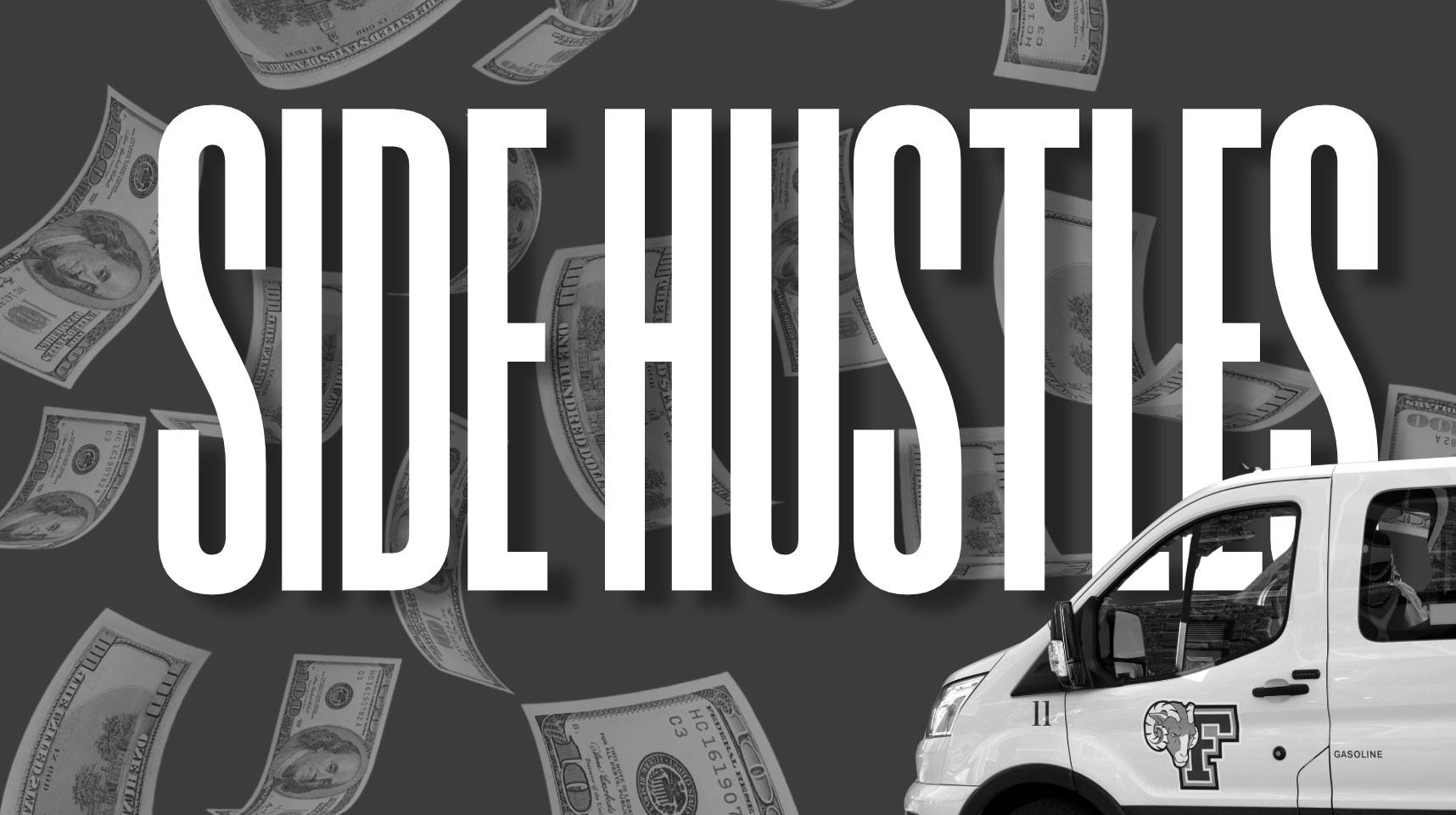
got your financially responsible weekend plans figured out!
Living in a city with such high levels of activity and prices, it is easy to get carried away with spending on weekly excursions. Personally, I am haunted and ashamed by the figure I spent during my firstyear fall semester. However, one of the best aspects of going to school at Fordham is all of the entertainment and urban opportunities that are at your fingertips.
While I appreciate receiving a paycheck, sometimes I end up overcompensating with my expenses, feeling liberated by seeing money enter my bank account. To any student who is able to secure a side hustle, I would recommend not letting what goes into your wallet go
College kids in NYC search for side hustles to supplement thier income. straight to your head as well. Sometimes, it feels as though I am allergic to having money in my bank account and that I yearn to be the recipient of a low-spending mode email from PNC Bank. I usually rationalize it by thinking, “Oh, why make money if not to spend it?” But, we must apply some of Aristotle’s advice for living a life of temperance (email me for tutoring in philosophical ethics). If you are in need of some cushioning in your checking account, don’t limit yourself just to Fordham workstudy. There’s a large world of easy, student-friendly income at your fingertips if you know where to look. Where there’s a will and a paycheck, there’s a way.
By SAMANTHA DIAZ STAFF WRITER
Another musical biopic has hit theaters with “Springsteen: Deliver Me From Nowhere” documenting the process behind the making of artist Bruce Springsteen’s hit album, “Nebraska.”
Springsteen is a famed rock artist and proud New Jersey native. Although he gained worldwide fame for his album “Born in the U.S.A.,” it wouldn’t have been possible without the raw and stripped-down album before it: “Nebraska.”
Before watching the film, I decided to relisten to the entire “Nebraska” album. After all, the film focuses on the making of the album and how personal it was for Springsteen, even featuring some tracks that would later be on “Born in the U.S.A.”
All of the songs in the album were heavily based on Springsteen’s own upbringing in his hometown of Colts Neck, New Jersey. Recorded in his bedroom, they were originally meant as demos that were supposed to be recorded with a full band, but ultimately he decided against it.
“Springsteen: Deliver Me From Nowhere” documents his process in recording the album, the things that inspired him and the difficulties in his life that came during the recordings.
The film picks up right when Springsteen (Jeremy Allen
By NISHANTH ADUMA BUSINESS DIRECTOR
If you ever wonder why some of the most focused students at the Gabelli Business School have that drive to keep going, the answer to that question is simply having a clear sense of purpose and refusing to step down from challenges. This drive perfectly describes Jack Robinson, GSB ’27, a finance major from Long Island whose goals and ambitions led him to find his way to begin his career as a young finance professional in New York City. Robinson’s dad and both of his sisters went to Fordham University, and for him it felt more like coming home than starting from scratch. He further explained that when he first transferred, he wasn’t completely sure what career path he wanted to pursue, but his involvement in finance clubs and classes quickly changed that. Still, arriving at Fordham was a major change, and Robinson identified navigating the transfer process as one of the biggest challenges he’s overcome. “Almost everything felt unfamiliar at first,” he admitted. “And I wasn’t sure how I would make friends,
White) is in the midst of his fame. He’s not international, but he’s known enough to be recognized on the streets by name.
Springsteen’s manager Jon Landau (Jeremy Strong) tells him about how he needs to get ready to prepare his next album following his hit single from his previous album, “Hungry Heart.”
From that point on, we get glimpses into Springsteen’s life: his complicated relationship with his father, the amalgam of his girlfriends Faye and the deep depression he goes through which bleeds into the overall tone of “Nebraska.”
The two Jeremy’s (White and Strong) were the film’s saving grace, but even with them there, it still managed to fail in some aspects. It can take a while for films to kick off, but the biopic seems to remain stuck slow and boring for the full two hours.
We mostly get scenes in which White is performing as Springsteen on stage and recording the songs on the album “Nebraska,” guitar in hand. It is clear that White has put in the work to replicate his voice and mannerisms on stage, which is impressive.
Subconsciously though, as I watched the film, I watched it knowing that I was watching White play Springsteen as an actor. This wouldn’t leave me until the scenes of him performing as Springsteen came
on, and that was few and far in between.
Even with the dark contacts to cover his blue eyes, a leather jacket and a singing voice that could rival Springsteen himself, it just didn’t feel believable enough. However, I think that has more of an issue to do with the film overall.
A big piece of Springsteen’s success is missing: his backing band, The E Street Band, with famous guitarist Steven Van Zandt.
The band has been with Springsteen since his first hit single, “Born to Run,” and they are sometimes credited together as “Bruce Springsteen & The E Street Band.” Considering they are still performing alongside him today, their absence was felt during the film.
Without the band, as we hear in “Nebraska,” Springsteen is someone else entirely. It’s heard in the rawness of his lyrics and the only instruments he uses in the album and the movie: the harmonica and his guitar.
This is something canon to Springsteen’s style and lyrics. With many of his songs about working class life, and being from a working class background, it’s no wonder he has a heavy influence on what is called “heartland rock.”
The subgenre of heartland rock incorporates lyrics of the working man and working class life. Musically, it incorporates elements of blues, country and folk music. Springsteen can

bring some of that to life, but not entirely on his own, and that credit belongs to The E Street Band.
Additionally, if you watch the film and Google who “Faye Romano” is, you’d come to find out that she’s not an actual person who was in Springsteen’s life, but rather, a combination of the women he dated during that time.
Faye’s purpose in the movie is to portray Springsteen’s struggle with his emotions and communication. At times, it comes off as the main focal point and takes away from the fact that this is about his life, not a love story.
Most of the time spent on Springsteen’s relationship with Faye could have also been shifted more platonically.
Who’s That Kid | Jack Robinson GSB ’27
get involved in clubs, succeed academically, or start building my career.” That experience, he noted, eventually helped him grow “more confident, adaptable, and willing to take initiative.”
With this newly found clarity in life and career choices, he decided to declare his concentration in Investment Banking, which helped him move closer into gaining the technical skills that he is excited to develop. He will be taking courses in financial modeling, Mergers and Acquisitions (M&A) and private equity, along with a futures and options course where he will learn about derivatives, hedging strategies and more next semester. “I’m really eager to dive into more technical finance coursework,” he shared, acknowledging he hasn’t had much of that exposure yet in his business core classes. When he was asked how he balances the intense workload, he shared a piece of advice his father always gave him: “If you want something done, give it to the person who is busiest.” He’s found that being constantly busy actually helps him stay focused and organized, which
is why he uses both a Google Calendar and physical notebook to keep track of assignments, exams, networking and internship work. When he has everything written out and focuses only on the specific task in front of him, the workload suddenly feels much more manageable.
Despite his busy lifestyle, he always ensures taking the time to step away and recharge. If he had a completely free Saturday, he says he would spend it with friends, enjoying a workout on campus or exploring different neighborhoods and restaurants. A surprising fact about him is his passion for the outdoors and fishing in the summer.
As his junior fall semester comes to an end, he wants to leave behind some wisdom for underclassmen who have come to call Fordham their home. He recommends firstyears “talk to as many people as possible.” He wants them to know that everyone at Fordham is genuinely willing to help them, whether it’s with classes, finding your way around the city or giving advice about their interested careers pathways. He also shared a key point: “Do not be afraid to reach out to
Perhaps he had similar frustrations with members of the E Street Band or his manager, showing that it wasn’t just her.
“Nebraska” is a beautiful album, and choosing that album in particular to create an emotional biopic about an iconic musician is hard. Unfortunately, it didn’t entirely hit the mark.
As a Springsteen fan, a film looking at his process behind “Born in the U.S.A.” could have been much more successful and entertaining to watch.
“Deliver Me From Nowhere” seems to deliver us a whole lot of nothing. “Nebraska” is the soundtrack to Springsteen’s life, but seems to forget about the actual events, music and stardom that he experienced.

Jack
GSB
upperclassmen who already have experience in the field you are interested in. No one is judging you, and it gets much easier the more you practice.”
Here is an encouraging note for those just starting their journeys at Fordham
from him: “I would also tell them not to stress about internships right away. If you work hard, stay involved, and keep learning, the right opportunities will come. The goal of college is growth, and you have plenty of time to figure things out.”
November 19, 2025
By KATE HERBERT CONTRIBUTING WRITER
When I was around seven or eight years old, I watched the movie “Free Birds” and decided to become vegetarian. Looking back, I don’t consider that to be my vegetarian origin story mainly because I grew up with vegetarian parents and didn’t really eat much meat anyway. Nevertheless, that Thanksgiving, I was eager to pass on the turkey when the plate made its way around the table.
In itself, Thanksgiving was never that exciting to me. I had been taught from a young age that it was the celebration of violence and colonization that had been rebranded as a story of coming together. Though dark, it was a truth that shaped the way I viewed the holiday. It wasn’t until I left home and went to college that I began to truly appreciate Thanksgiving as something to celebrate.
The fact that I’m away from my family that I am so rooted in becomes very apparent each time the weather gets colder and the sun starts to set at 4:30 p.m. At this point in the semester, I’m yearning for my Amtrak ride
home. Though the origins of the holiday remain distorted from the reason millions of Americans celebrate, ours is centered on family and gratitude, which I can always get behind.
When I was a child, one of the only parts of the holiday I looked forward to was watching the Macy’s Thanksgiving Day Parade in the living room in the morning with my brother while our parents were in the kitchen cooking. When the fridge would run out of space for all of the dishes, my dad would walk through the living room to get to the back door, stopping to watch the parade on the television as he was on his way outside to leave the dishes sitting in the crisp November air.
We had a tradition that during the commercials, my brother and I would take turns running into the kitchen to make the mashed potatoes. In hindsight, it was probably because they were the only dish my mom trusted we wouldn’t burn or ruin, but we took it very seriously. I loved the mornings of Thanksgiving when the anticipation was high but my relatives hadn’t arrived quite
yet, and the all-encompassing holiday joy seemed to be right around the corner.
Despite the fact that my parents and I are vegetarian, that never stopped a turkey from appearing on the table. Stuffing, mac and cheese, cranberry sauce, green beans and rolls were all foods we looked forward to eating. Additionally, I grew up in Baltimore in a predominantly German family which meant our table also always had sauerkraut. Sauerkraut, a staple in the German (and Baltimorian) diet, is a beloved tradition in my family. It wasn’t until I was older that I realized not everyone’s family spent days fermenting cabbage in their Thanksgiving preparations.
People regularly ask me what I eat in my daily life if not meat, and the question definitely comes up around Thanksgiving time. I’ve never been one to get irritated by the question, in fact I find it funny that most people don’t realize they eat vegetarian meals all the time. Almost every Thanksgiving food can be made vegetarian (or already is) but often a Tofurky will appear on our table. It’s no one’s favorite in particular, but my
dad gets excited about the holidays and sometimes can’t help himself. The thing about Tofurky is that it’s always a bit of a disappointment, tasting like, as my dad describes it, “glue and chicken.”
Last year, for the first time, my mom and I baked an apple pie from scratch. It was golden-brown, bubbly and, despite its imperfections in appearance, extremely delicious. Though we all devoured it, my grandfather enjoyed it the most, likely because he loved anything containing sugar. That pie
brought out a child-like joy in him, like a kid in a candy store. It’s hard to believe that the end of the year has snuck up so quickly. Yet, it’s evident as the branches become more bare each day and the ground more colorful. My favorite Thanksgiving tradition, though a little cheesy, is going around the table before eating and each saying what we are thankful for. Things around the world are grim, but for that meal, there is always an abundance of gratitude to be shared.

By PAOLO LIACI CONTRIBUTING WRITER
My paternal grandmother has a bear that she brings out every holiday season to adorn her front steps. At least that was how it used to be. When my grandmother and her mother, my Nan, purchased the three-foot-tall bear that sings Perry Como’s “(No Place Like) Home for the Holidays,” my cousins and I, ages six, five and four, affectionately named the bear George. He was purchased in upstate Pennsylvania with one thought in mind: the kids will love him. And love him, we did. From that year on, George was just as important as the Christmas tree, and he was placed on the front steps under one strict condition. The three grandchildren were to take a photo with him; Our annual “George picture,” as we refer to it. That first Christmas, George was the tallest one in the picture, which was 17 years ago. There are now six grandchildren. This year marks the ninth anniversary of Nan’s passing and George is too heavy for my grandmother to bring down from the attic on her own. But on the night of Christmas Eve, typically when wrapping paper covers the floors and to-go boxes are being packed, George is brought down for his annual group picture. My cousins and I, the ones who originally named him, are now 22, 21 and 20, and if
you were to take our George picture from the waist up, George wouldn’t even be in the photo. But don’t worry, there are now three more grandkids who are creeping up on George’s height, a second generation of cousins to keep George singing. There really is no place like home for the holidays.
This year, however, I won’t be celebrating Thanksgiving with my family because I’m in London studying abroad. I know that similar circumstances apply to many of us here at Fordham. With students attending from every part of the globe, it can be nearly impossible to return home for the holiday season and spend that much-needed family time. So what do we do?
I know that for myself, my roommates and I, along with friends, will be having a “friendsgiving” of sorts. One of my friends back at Rose Hill is from Turkey and even though Thanksgiving isn’t celebrated there, it is a holiday she has become accustomed to, and even looks forward to. Every year, she heads home with one of her roommates and spends the holiday with their family. Another one of my friends spends the break, both Thanksgiving and winter, exploring different parts of the city and even going up to Connecticut to see what the holidays look like beyond the Rockefeller Center tree.
My first Thanksgiving at
Fordham, I brought a friend home for break. Being from New Jersey, home isn’t a far trek, unlike for my friend, who was from California. Watching him sit so comfortably at my family’s dinner table, knowing how much he missed his own family that day, gave me a feeling that was unexplainable. I felt so fortunate to be able to offer someone such comfort on a day that no one should spend alone.
As much of the holidays are about family tradition, it is up to us, as we enter adulthood, to create our own personal traditions. Last year, my friends and I organized a Secret Santa brunch. It was one of my favorite days of the entire semester. Dressed in our holiday best, exchanging gifts and laughing, surrounded by the people who make the place. Something I’m missing just as much as home right now is getting to see the wreath on Keating Hall and all the holiday lights around campus, something I encourage you not to take for granted.
One December, I was on the Metro-North headed back from the city and sat next to a family on their way to see the Christmas lights, walk around the paths in the New York Botanical Gardens and have dinner on Arthur Avenue. The parents were Fordham alumni and told me this was their family tradition. Although we might not be “home,” seeing people traveling to see our
shared home was a reminder for us all that home is sometimes just where we happen to
Have a happy Thanksgiving!
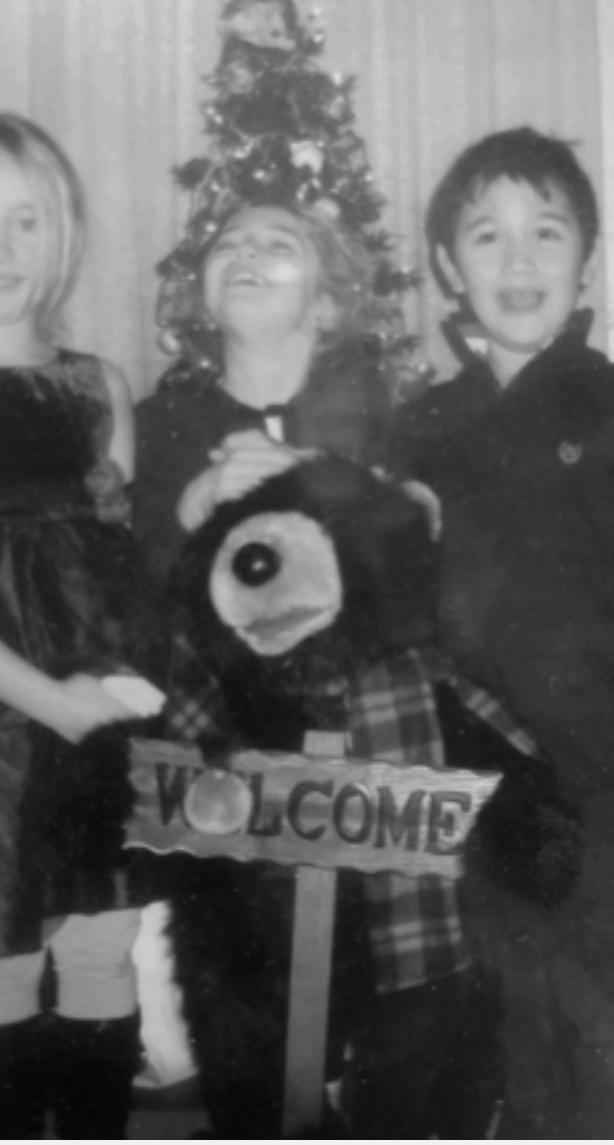
By EMMA LEONARDI ASST. NEWS EDITOR
Note-taking is a very important part of being a student, as your notes usually have the ability to make or break your performance in a class. However, you need to not only take notes, but also know how to take efficient and effective notes for them to work at all and not just be a waste of your time. While note-taking is an important skill to practice, it can also be a fun one. You just need to find out how to make notetaking both educational and entertaining.
I don’t want to hype myself up too much, but I like to think I have become a master at this duality of note-taking. As someone with obsessivecompulsive disorder (OCD), I tend to create steps and order how I do a lot of tasks, and note-taking is no different. For anyone looking to embrace note-taking as not only a study tool but also a hobby, as well as enhance their skills, I’m about to reveal all of my secrets to good and enjoyable note-taking.
The very first thing I do when I start a semester is buy a notebook for each class. I assign the class a color (based purely on vibes) and I buy a notebook in that color. The notebook is normally a Mead Five Star Graphing notebook (yes, graphing; college-ruled notebooks have way fewer lines on each page, thus requiring the usage of more paper than necessary).
I then pick one pen and one dual-sided marker and
highlighter that are in that chosen color and elect them as my writing utensils for that class for the remainder of the semester. My preferred pen is the 0.7 Sharpie Gel series (obviously the rainbow colored pack) and I exclusively use Zebra Mildliner doubleended highlighters.
For example, this year I am taking Social Psychology. I assigned it the color green, and thus chose the green highlighter I have, as well as the pen that most closely matched the color scheme I wanted.
Following the choosing of my assigned color and ensuring I have all the necessary supplies, I move onto the arguably most important step in all of note-taking: making a table of contents. I know that tables of contents can be really annoying to keep up with, but trust me, it is a game-changer.
For example, in my Forensic Psychology class, we had to do a 30-minute,open-note quiz. I was able to not only complete the quiz in 15 minutes (half of the allotted time), but also get an A because I had a table of contents to reference. For each question, I would use the table of contents to find the page number with the lecture that involved the subject of the question, and from there, I skimmed through the notes I had on the lecture to find the answer to the question. Without a table of contents, it easily could’ve taken me two to three extra minutes just to find the relevant lecture notes.
I also have a section in my notebook for each chapter
and/or lecture in the class, where all of my notes on that specific subject can be found (sometimes textbooks provide better information, and sometimes lectures are more in-depth; which one you choose to take notes on is at your discretion).
I have subheadings for each of the major topics under the overarching subject, which are designated by outlining the arrows on the margins of the Mead notebooks. These subheadings assist in making life easier when trying to find a specific piece of information.
Under the subheadings, I have word definitions, historical examples of studies (for my psychology classes) and any other information I feel will be relevant for either the class exams or my future in the field.
Using organization is not only helpful in accessing the
information, but also makes note-taking more fun to do, as it becomes more of an art than it normally would be if you were just scribbling down whatever you wanted all willy-nilly.
Now, you may still be skeptical of note-taking in general, but specifically my method, because it does take some time to do. You may even ask, “Will I ever even use these notes again?”
This is where I clarify: I only use this method if I will also be keeping the notes for future use outside of just my class, or if I happen to have a ton of extra time to spend enjoying it exclusively as a hobby (I never do). For any class that does not fall under these categories, I either take notes on a piece of paper for each class period in a much less organized way (if the class is electronic-free) or I type out

notes on my computer so as to not waste paper.
An additional suggestion I would make following this caveat is to buy a large binder and, at the end of the semester, tear out the pages you wrote notes on as well as the table of contents, and put them all in the binder. This way, you can continue to have these notes organized for future reference, and they don’t just end up as not only a waste of paper, but also a waste of your time.
Hopefully, these suggestions were helpful, and maybe some of you can even start to employ some of my specific strategies into your own note-taking methods to make them more efficient and enjoyable. However, it is also important to remember that as long as your notes are helping you succeed, whatever note-taking method you’re using is a good one.

By OWEN THEBERGE CONTRIBUTING WRITER
Raw, guttural, devastating and retrospective, Guillermo del Toro’s “Frankenstein” fires from all angles. del Toro’s rendition of Mary Shelley’s monumental 1818 novel of the same name serves to satisfy both die-hard fans of the novel and more ignorant viewers to the world of the Gothic masterpiece, and does so flawlessly.
Before getting into the meat of the film, it’s crucial to note the stellar performances by Oscar Isaac as Victor Frankenstein and Jacob Elordi as The Creature. Isaac taps into the insanity and unnerving nature of the titular character in a refreshing way that truly pulls the viewer into his world of madness. In a similar fashion, Elordi encapsulates The Creature’s loneliness and eternal suffering, giving an unforgettable performance that will personally stick with me for years to come.
Speaking of The Creature, what del Toro’s film does especially spectacularly is the portrayal of the infamous creature. A choice that I found incredibly touching and impactful is the decision to alter the original novel’s storyline of The Creature’s murderous revenge plot against its creator, Victor, to a storyline where The Creature is never at fault for any murders it encounters, and either accidentally harms others or is falsely accused of their deaths. This switch ultimately conveys a stronger message than the original source material, with The Creature’s innocence on full display — and the world’s cruel punishment at the forefront — further highlighting The Creature’s turn towards violence to be innate within what makes a living being a living being: response to stimuli.
As a superfan of the original novel, this film simply makes me giddy. It just looks fantastic, like what I had envisioned the world of
“Frankenstein” to look like when first reading it. The frozen waters of Antarctica look impeccable, the ostentatious clothing, while not completely historically accurate, looks fantastic and intricately detailed, The Creature’s makeup makes Elordi look unrecognizable in the best possible way. del Toro is known for his signature style which shines here and, even if at some points the ComputerGenerated Imagery (CGI) is noticeable, it is not in a way that is at all distracting.
An aspect of Shelley’s novel that stuck with me was the emotion behind the relationship between Frankenstein and The Creature. It’s not super present within the words on the pages of the book, but the potential for a grand emotional conclusion was palpable. Del Toro’s film, however, completely leans into the emotional nature of said relationship, ending with devastating dialogue that had the theater whimpering and sniffling. Elordi and Isaac completely sell it, with what I argue is one of the best ending scenes
of the year.
Isaac, Elordi, Mia Goth and the rest of the ensemble all brought their A-game, and everyone involved in the
production brought Shelley’s world to life with vibrant colors and so much soul it’s electrifying. “Frankenstein” isn’t just here: it’s alive.


By VEDHA GOKUL CONTRIBUTING WRITER
As I marched out of 59th St. subway station, I was greeted by bellowing gusts of wind and a crowded street to navigate. Exhausted from my three classes earlier that day, my commute to the Upper East Side undoubtedly proved to be more taxing than I expected. However, as I entered the Lévy Gorvy Dayan Gallery I was greeted with warmth — not just in the form of an elderly couple who held the door open for me or the radiating heat of the building — but more vividly a series of acrylic and silkscreen works created by one of the featured artists in the Downtown/Uptown: New York in the Eighties exhibit: Andy Warhol.
The nine pieces were arranged in a neat, symmetrical form, like pieces forming a whole, and depicted other artists spotlighted in the exhibit such as Peter Halley, Keith Haring (with his former partner Juan Dubose), Robert Mapplethorpe and Francesco Clemente. To me it was reminiscent of a wall of family pictures. All of these individuals who defined the 1980s art scene in New York were more than just independent creators, but rather knowingly part of a greater cultural movement. This camaraderie is tangible in the shared pathos of the
collection, which I interpreted as these artists’ experiencing loss of faith in the establishment contrasted by the coursing creativity of their community.
Moving past the first room, under the spiral staircase was one of the most popular pieces showcased in the Downtown/ Uptown exhibit: Jean-Michel Basquiat’s “Untitled: Mary Boone, 1984-85.” This literal punching bag is hung from the spandrel of the staircase by metal chains with “Mary Boone” and a crown painted across it in dark green acrylic. It is tauntingly provocative to the observer, being a monolithic, easily identifiable object associated with brute strength and fighting, yet also mischievously subversive in its ambiguity.
The punching bag’s namesake comes from the rightfully named “queen of the art scene,” the very woman who put this show on: Mary Boone.
Boone opened her first gallery in 1977, a small ground floor space at 420 West Broadway that gained recognition among young artists at the time and became intertwined with the development of the 1980s art scene as she began representing artists like Basquiat. Since then, she became “crowned” as one of the most reputable gallerists, one who had a finger on the
pulse of the wild, expressive and politically charged ’80s art scene. She speaks specifically to Basquiat’s piece with her name on it saying she does not know why he put her name on the piece, but that he often featured the names of people who were important to him.
In the same breath, her deep personal connections to many of these artists are beyond a doubt apparent in the collection. The co-curator of the show Brett Gorvy describes the vitality and the longevity of the bonds created through the epochal moment in New York City for artists. “What’s been amazing about this is that the community still exists,” he said. “They’re not necessarily best friends; they’re almost like siblings that come together in a reunion.”
As I climbed up the stairs I noticed a piece titled “Do Women Have To Be Naked To Get Into The Met?” a printed graphic art piece by Guerilla Girls. The body of artists was composed of multiple feminist artists who wore gorilla masks in public to protect their identities. The piece serves as an outcry for more representation of female artists in esteemed spaces such as the Metropolitan Museum of Art and includes a naked woman lying on her side wearing a gorilla mask. This politically-fueled image is a symbol of the artistic climate at
the time. The impression of the piece goes beyond the notably “pop-art” aesthetics, but more importantly speaks to how reformative the ’80s were to the art scene. It felt like a dissension from women artists as a collective — realizing that along with socio-political freedom it should also mean more recognition for female artists whose voices were drowned out in a male dominated field.
I walked into the exhibit knowing essentially nothing about the art scene in the 1980s and left with not just a better understanding of the art styles and motifs, but of
the community between these creators that inspired them to make pervasive and, of course, impressive art pieces. Less like any other typical exhibition, the “Downtown/Uptown: New York in the Eighties” exhibit felt like an honest and uncensored conversation over family dinner between the artists with Boone at the head of the table. Despite the cold weather and heavy coursework this season brings, the “Downtown/Uptown” show will be at the Lévy Gorvy Dayan until Dec. 13, and is the perfect escape from both, providing a history lesson and trip to a gallery all in one!
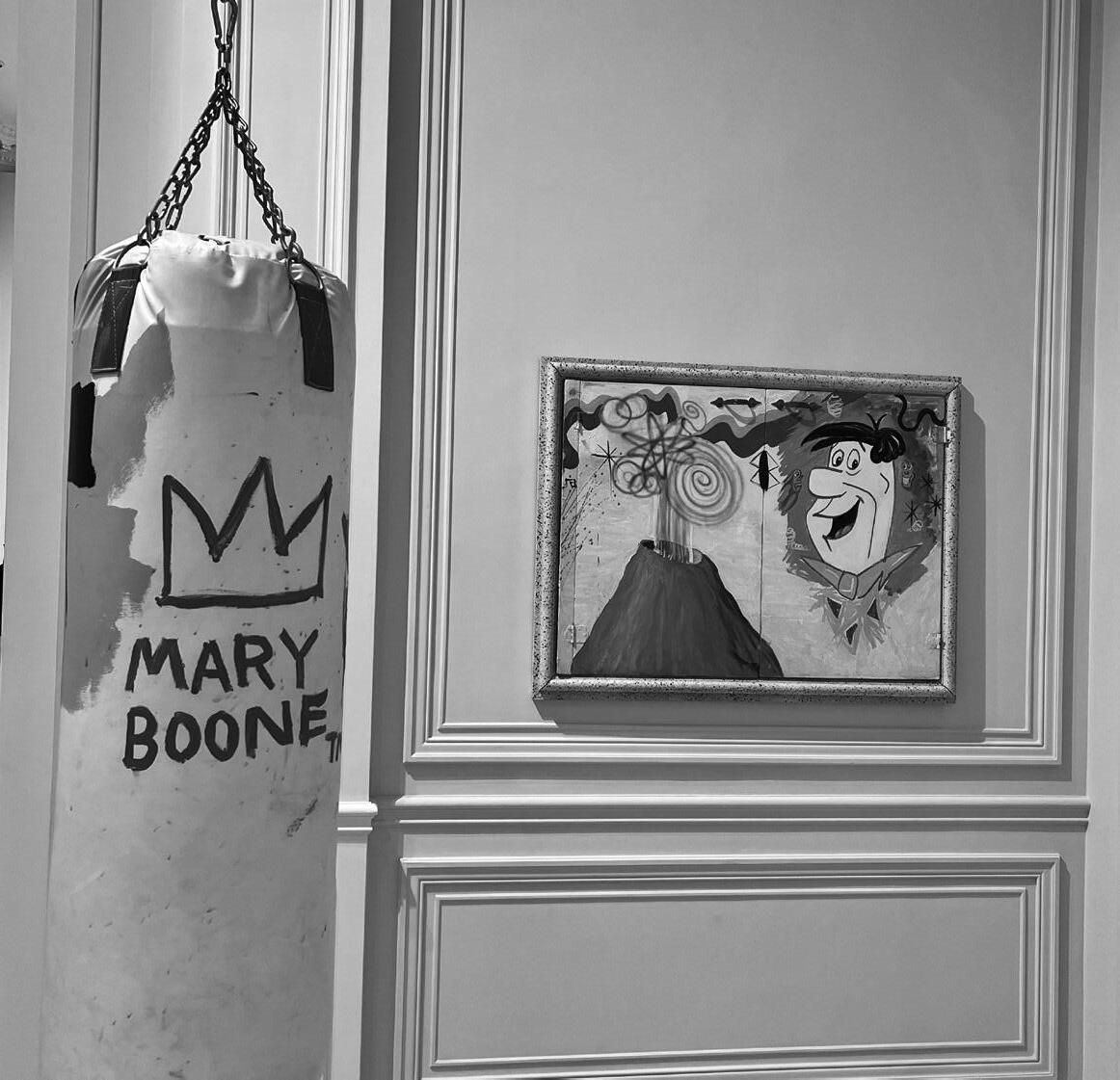

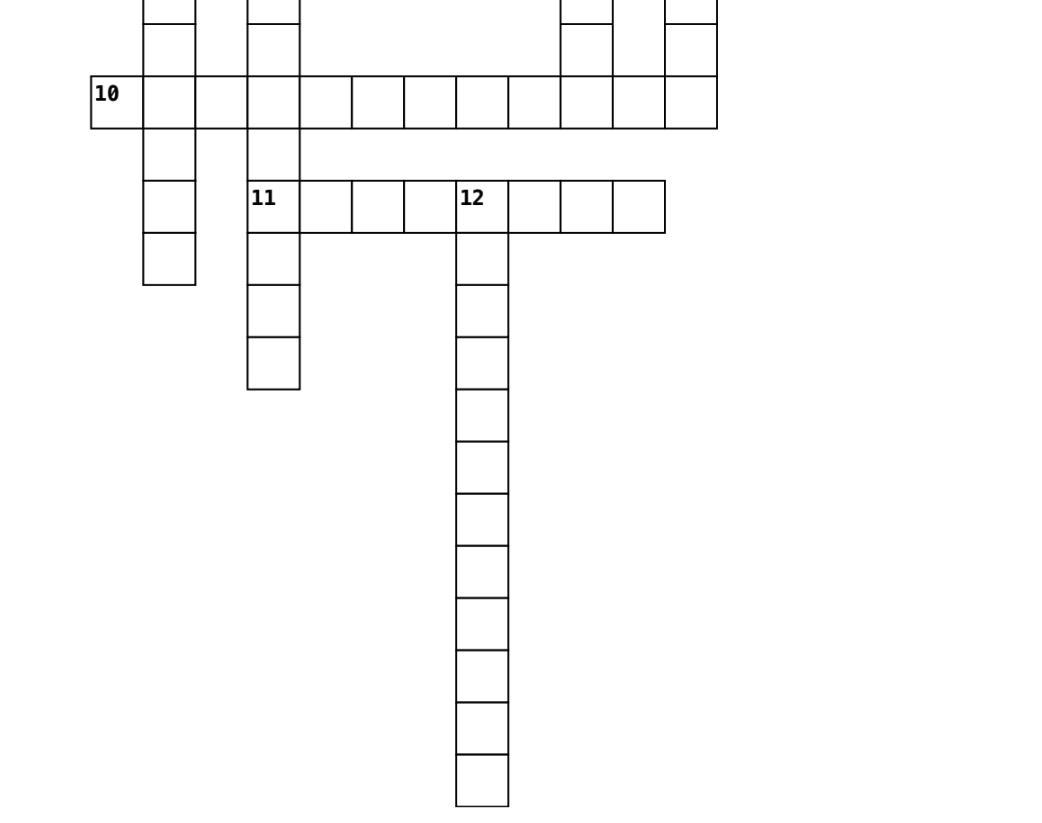

By MARISA HOUSE CONTRIBUTING WRITER
Our very own Fordham University Rams showed up and showed out at the annual New York City Marathon on Sunday, Nov. 2. From running every grueling mile of the 26.2-mile race to cheering loudly from the sidelines, the Rams came together to uplift one another and celebrate the dedication of everyone running the race.
With grit and determination, Natalie Hawthorn, GSB ’26, ran the marathon, representing both herself and the Fordham community on one of the world’s biggest stages. The 2025 marathon marked 25 years since Hawthorn’s mom ran it herself. She shared that her mom was her biggest inspiration for taking on the challenge and added that she hopes to “do it again one day.”
When reflecting on her overall experience, she remarked that the biggest lesson that came from this experience is that with “discipline and dedication, you can do hard things.”
Along with Hawthorn, Maisie Moreland, GSB ’28, dazzled her Fordham fans by completing her first-ever marathon. Throughout high school, Moreland competed
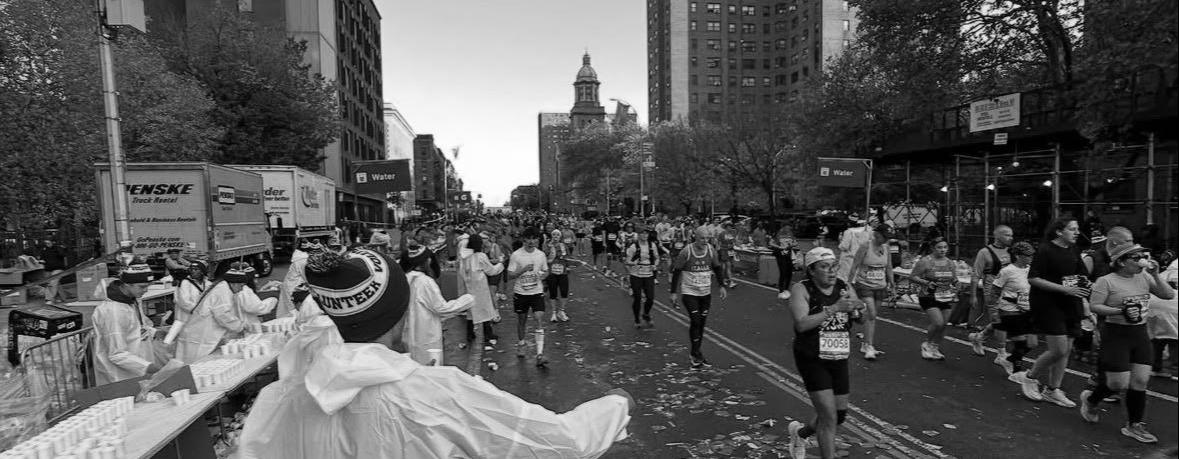
as a mid-distance runner, but it wasn’t until coming to college that she discovered her passion for long-distance running. “I went to watch the marathon last year. The energy was insane and so inspiring. I actually signed up on a whim for the 2025 marathon with a charity that same day,” she said. She closed by reflecting on reaching this milestone in her running journey. “It felt like everyone was connected in one shared moment of pride and humanity, which made me realize how special the NYC community really is and what a privilege it is for me to be a part of it,” she said.
On how the racers balanced training with classes, Moreland explained, “It was challenging
at times, but I made it a priority. I tried to run at the same time every day, which helped keep me in a routine no matter how busy things got.” Likewise, Hawthorn felt that having a “structure and routine made it easy to balance training and schoolwork. Getting up early to run and then going about my day gave me that structure I needed to study, work, and have a social life.”
Her fellow sophomores Gia LaBella, GSB ’28, and Anna Foco, GSB ’28, brought unmatched energy and classic Fordham spirit to the sidelines in support of Moreland. The two honored her hard work and weeks of training by handmaking a poster that read, “You’re A(Maise)ing … You Got
This.” The two recalled feeling “emotional” and “touched” as Moreland greeted them with excited hugs during the race, a moment from the day that beautifully captured their friendship.
Student-athletes across campus also showed their support through volunteer efforts with the Student-Athlete Advisory Committee (SAAC). Fordham athletes Logan Binder, FCRH ’28, Daniel DiTunno, GSB ’29, Kathleen Keefe, FCRH ’28, Daisy Mitchell, FCRH ’28, Lauren Raimy, GSB ’28 and Eric Schleif, GSB ’29, were stationed at mile 20, where they helped the effort by filling cups of water and Gatorade and offering them to racers.
“What stood out the most
was seeing that most of the racers had smiles on their faces,” Binder began, “despite this being the part of the marathon where many runners claim they ‘hit the wall.’” Cheering on racers and helping them through the final challenging miles was exhilarating for Binder. She expressed that witnessing racers persevere through every challenge and do so with a smile was nothing short of extraordinary. Keefe chimed in with a particularly moving interaction she had with a participant running with a prosthetic leg. She described the experience as “inspiring” and noted that it “showed her that there really is no limit to what humans are capable of.” DiTunno added that he was touched by seeing a woman wearing a shirt that read “85 Years Young.” “It showed me what the marathon is all about,” he said: “pushing one’s limits beyond what you once thought was possible.” While pace may not always be consistent, the support and dedication of our Rams never wavered throughout the day. From competing to volunteering to cheering from the side, they embodied what it means to be true team players and leave a positive impact on the people around them.
By ANAND SHARMA CONTRIBUTING WRITER
In the moment New York Giants star wide receiver Malik Nabers went down while grabbing his knee at MetLife Stadium in Week 4 of the 2025 NFL season, fans immediately blamed the turf. Within minutes, the long-running argument over synthetic fields and knee injuries was back at the forefront of modern football.
Across the sport, turf has become the practical choice. It’s easier to maintain, cheaper over time and holds up through cold weather and heavy use. However, players and many doctors still question its safety. The debate remains: Does turf actually increase ACL injuries, or are we conditioned to believe it does?
Dr. Sameh Elguizaoui, a sports medicine orthopedic surgeon at New York Orthopedics, sees the consequences firsthand. “ACL injuries are most often non-contact pivoting injuries,” he said. “If your foot gets stuck on the turf, which is a tougher surface, and you try to change direction or the momentum of your body, you have this kind of valgus moment, and that’s when the ACL is most at risk and pops.”
While he couldn’t cite exact statistics on the number of ACL tears on turf vs. grass, Elguizaoui said, “anecdotally, it seems as
though turf produced more ACL injuries than grass.”
He added that harder surfaces also contribute to concussions, shoulder separations and turf-toe injuries. “The risk of concussion goes way up with hard surfaces,” he said. “It’s why professional soccer — the most popular sport in the world — plays on grass. FIFA requires it for World Cup venues, even at places like MetLife.”
This is where the data interests Malachy McHugh, Ph.D., director of research at the Nicholas Institute of Sports Medicine and Athletic Trauma (NISMAT). Having spent decades studying how the body reacts to different surfaces, he believes the debate is more complicated. “Historically, research has gone both directions,” McHugh said. “Some studies show a slightly higher ACL injury rate on artificial surfaces, others show no difference. The problem is that not all turf, or grass, is created equal.”
Maintenance is one of the biggest factors. “These fields age rapidly. They need annual maintenance and replacement every few years depending on use. When that doesn’t happen, friction increases — and so does injury risk,” he said.
Weather plays a role as well. “In dry, hot conditions, ACL injuries on grass go up because the surface is harder,” McHugh explained. “When it’s wet or humid, players slide more,
and that can actually reduce the chance of a tear.”
Recalling the early days at NISMAT, “Our doctors used to love covering [New York] Jets games on wet days at Giants Stadium. They said, ‘We never get major injuries when it’s raining.’ It was all about friction.”
While McHugh analyzes the science, Iannick Di Sanza brings the industry’s perspective. As Director of Marketing for Tarkett Sports, the parent company of FieldTurf, he is deeply involved in the process behind evaluating and designing turf systems.
“For me, the difference between the two is the consistency,” Di Sanza clarified. “Artificial turf is a consistent variable. It is always the same. You know what you’re going to get day in and day out. A natural grass field is natural, which means it has to face the elements, and it can change depending on the season and your location.”
Consistency, he said, is both the appeal and the challenge: “What we’re trying to ensure is consistency. That’s really what I feel artificial turf will deliver — you know exactly what to expect.”
But even turf requires upkeep. “We have a recommended maintenance program the client can execute, or we can do it,” he said. “We call it BARS — brushing, aerating, raking, sweeping.”
Turf technology itself
has evolved far beyond the harsh carpet-like surfaces of the past. “The old-school carpets from the Astrodome, which were just a dense carpet on a pad, have changed tremendously,” Di Sanza said. “FieldTurf came in with something called infill — the black rubber pellets and sand — designed to recreate a premier naturalgrass system.”
To support the safety of modern turf, he pointed to independent research.
“There have been many third-party safety studies on the FieldTurf heavyweight system,” he said. “Those have shown that, compared to grass, it has been much safer for athletes.” He cited research from Idaho State University as well as collaborations with University of Calgary, Pennsylvania State University and the University of Virginia.
Regarding ACLs, however, Di Sanza stressed that injuries rarely come down to one factor. “Injuries are a very complex discussion,” he said. “They don’t happen in a vacuum. It is not only a surface or not only something else — there are so many factors that influence an injury.”
Recent NFL numbers reflect that complexity. According to ESPN’s Adam Schefter, MetLife Stadium — which installed its newest FieldTurf surface in 2023 — had one of the lowest lowerextremity injury rates in the league last season. Schefter
also reported that overall there were fewer ACL injuries on turf than on grass, with virtually no difference so far this year. Jets internal data found that since the update, only three ligament or Achilles injuries occurred at MetLife, compared with 38 on grass fields across the league.
Di Sanza also made clear that FieldTurf isn’t opposed to natural grass. “We’re not saying natural grass is a bad option,” he said. “A premier natural-grass system is a great solution. But our clients often have challenges living in that reality.”
For Elguizaoui, the discussion returns to real outcomes. “Maybe the newest turf is better,” he said. “I just haven’t seen enough evidence.”
McHugh agrees that skepticism is healthy. “If you’re comparing old, worn-down grass to new FieldTurf, the difference isn’t that clear,” he said. “The real question is: what shape is the field in?”
And so the debate continues. Turf manufacturers will continue funding research, doctors will continue analyzing injuries and players will get hurt on both surfaces. As McHugh put it, “Debate forces us to collect better data. That’s how progress happens.”
Every ACL tear restarts the same conversation. At this point, the surface isn’t just where the game is played — it’s part of what defines it.
By JOE HENRY ASST. SPORTS EDITOR EMERITUS
The beauty of sports lies in the unexpected. For a Fordham University Volleyball program that lost its best-ever player in an injury-riddled 7-21 2024 season, few expected the Rams to be as competitive as they were in 2025. No one expected them to spend most of the season ranked as the #1 blocking team in the country.
The Rams rounded out their 2025 season with two four-set losses to Atlantic 10 (A-10) Tournament-bound Virginia Commonwealth University, finishing the campaign 9-19 and 3-15 in A-10 play.
Fordham won the initial set of each match, showing off its blocking prowess and shattering program records in the process. The team notched a season-high 10 rejections in set one on Saturday’s match — the final one lifting them to the top of the program leaderboard for blocks in a season.
Finishing with 306 blocks in just 104 sets, the 2025 Rams passed the 2005 Rams, who tallied 290 blocks in 119 sets. As such, this year’s team is now the all-time leader in blocks per set, too. Fordham tabbed double-digit blocks in 17 matches, another programbest.
Sophomore Sophia Kuyn returned from an ankle sprain to pace the Rams in blocks, tallying eight in Saturday’s
loss. Junior Tatum Holderied led Fordham with six blocks in Sunday’s finale, including four solo stuffs, the second-most of her career. Even after missing much of the conference season with shin splints, Holderied ended the year fifth in NCAA in blocks and second in blocks per set.
Holderied wraps up one of the more historic seasons by a student-athlete in the program’s 37-year history. Her 157 blocks rank third in program history, and her 1.83 blocks per set are second to Izzy Fichtel’s 1.93 in 2020’s COVID-19 season. If Holderied’s career ended today, she’d be the Rams’ alltime leader in career blocks per set, at 1.43.
Fordham finished 255th in blocks last year. Holderied and Kuyn missed much of the season with injuries. None of Fordham’s pin hitters had previously established a reputation as blockers. No one expected what 2025 became: a season-long block party in the Bronx. The team finished second in NCAA total blocks, a 253-spot jump year-overyear.
Three Fordham seniors, Zoe Talabong, Audrey Brown and Mackenzie Colvin, used the four-game road trip to finish their Fordham careers on a high note.
Brown hammered 34 kills on the trip at a red-hot .281 clip, finishing her career with 1,135
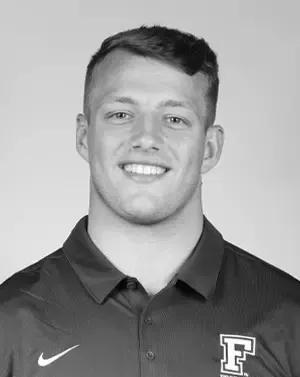
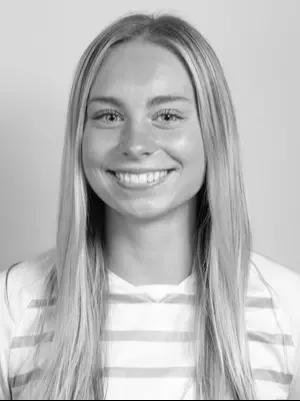
Linebacker James Conway once again made history on Nov. 15 against Georgetown University. With his 578th career tackle, Conway secured the NCAA Division I career tackle record, just three weeks after setting the Football Championship Subdivision tackle record on Oct. 25. He also set the single-season tackle record for a Fordham University player. He now has 147 tackles on the season, with one game left in his Fordham University career at Merrimack College on Nov. 22.
Junior forward Riley Carroll was one of 11 players selected to the 2025 Atlantic 10 (A-10) All-Championship team. She became the first selection to the team out of Fordham University since 2015. In her 2025 season as a junior, Carroll set career-highs with five goals and 11 points, helping lead her team to the semifinals of the A-10 Championship.
kills, the 11th most in Fordham history, and cementing herself as one of the best right-side hitters to play at Rose Hill. Colvin averaged 16.8 assists over her final five matches, the second-most in such a span in her career, which ends with 775 assists and 237 digs. Talabong saved her best for last, too, notching a team-best 12 kills and 16 digs in a careerending double-double Sunday — it was her most combined kills and digs in an A-10 match since 2023. Talabong finishes her time in maroon with 692 kills and 928 digs.
Fordham concludes the season ranked 255th in RPI, 31 places higher than last year’s squad. After a 10thplace finish last year and 10thplace projection this year, Fordham ends 2025 ninth in the A-10.
While a 3-15 record isn’t pretty, it’s by no means a reflection of the team’s competitiveness. Holderied missed five matches: two against a non-playoff team, and two against six-seed Duquesne. Had the team won those matches, they’d be in the playoffs.
For a second straight year, injuries have stood between a late-November playoff run and a late-November full of speculation.
According to several sources, Head Coach Ian Choi’s contract will not be renewed, marking the end of his eight-year tenure leading the team.
Choi is responsible for leading Fordham to its first A-10 Championship game appearance in 2021, bringing
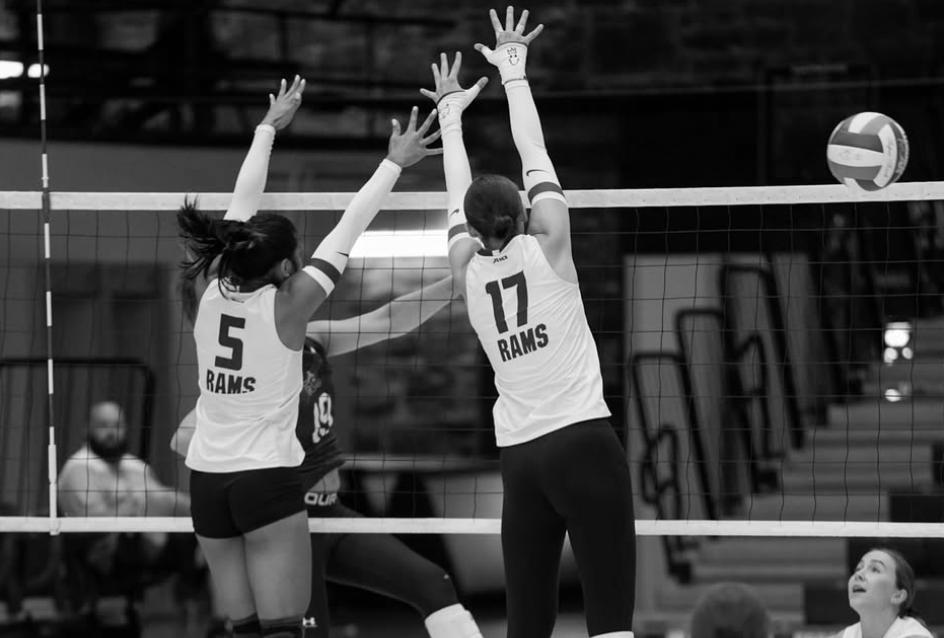
the team to three playoffs in eight years, and rebuilding a program that had spent decades as the definitive bottom-dweller in the A-10. Prior to Choi, the team had not made an A-10 Tournament since 2010.
The program could search internally for a new shot caller, elevating assistant coach Chris Sullivan or Associate Head Coach Brooke Alverson, or look elsewhere.
Retaining players will be a concern. Choi’s popularity among the players is evidenced by the fact that no player transferred out of the program in his head coaching tenure.
While replacing Brown is a big task, sophomore Bridget Woodruff showed in A-10’s that she’s capable of handling the bigger load. Of the five attackers with 200 attempts in conference play, Woodruff’s .221 hitting rate ranks first.
No single player could replace Colvin’s leadership and chemistry with attackers, but freshman Ana Del Angel Aguilar and incoming recruit Avery Lim figure to share that particular burden.
More reps should be
up for grabs next year at outside hitter with Talabong graduating, leaving the group without its best defensive option at the position — she finished the campaign with a team-best .954 reception percentage. Junior Erynn Sweeney and sophomore Mila Micunovic should pace the team in attacks next year, while sophomore Gabby Destler, freshman Mikaela Brennan and recruit Johanna Franzen could compete for time on the strong-side.
The defensive outlook is strong. Should Fordham return Holderied, Kuyn, and liberos Lola Fernandez and Özge Özaslan, the Rams will have a defense-first foundation to build on for the coming season.
But perhaps it’s futile to list expectations for next year. For a team that’s never let outside expectations stop it from reaching historic success under coach Choi, expectations serve as mere motivation. As Fordham continues its quest for its first conference championship in program history, expect the unexpected to propel these Rams to new heights.
By IAN NELSON ASST. SPORTS EDITOR
Another week brought another new low for the New York Giants. Not that surprising considering that this is a team that, since their victory over the New England Patriots in Super Bowl XLVI, has struggled mightily to find success. They have only managed to accrue three winning seasons in their last 14, in 2012, 2016 and 2022, to go along with two playoff appearances and no division titles. As of 2024, the Giants currently hold the longest active division title drought in the NFC, with a total of 13 seasons ranging from mediocre to awful, and they are currently well-positioned to extend that streak to 14 seasons.
There was some hope going into this season. The Giants drafted well, bringing in Pennsylvania State University EDGE rusher Abdul Carter, University of Mississippi quarterback (QB) Jaxson Dart and Arizona State University running back Cam Skattebo among other talented pieces. They also brought in veteran QBs in Super Bowl champion Russell Wilson and human roller coaster Jameis Winston. But as the season went on it quickly became clear that whatever made Wilson a highcaliber QB was gone. After just three starts and an 0-3 record, Wilson was benched in favor of the rookie, Dart.
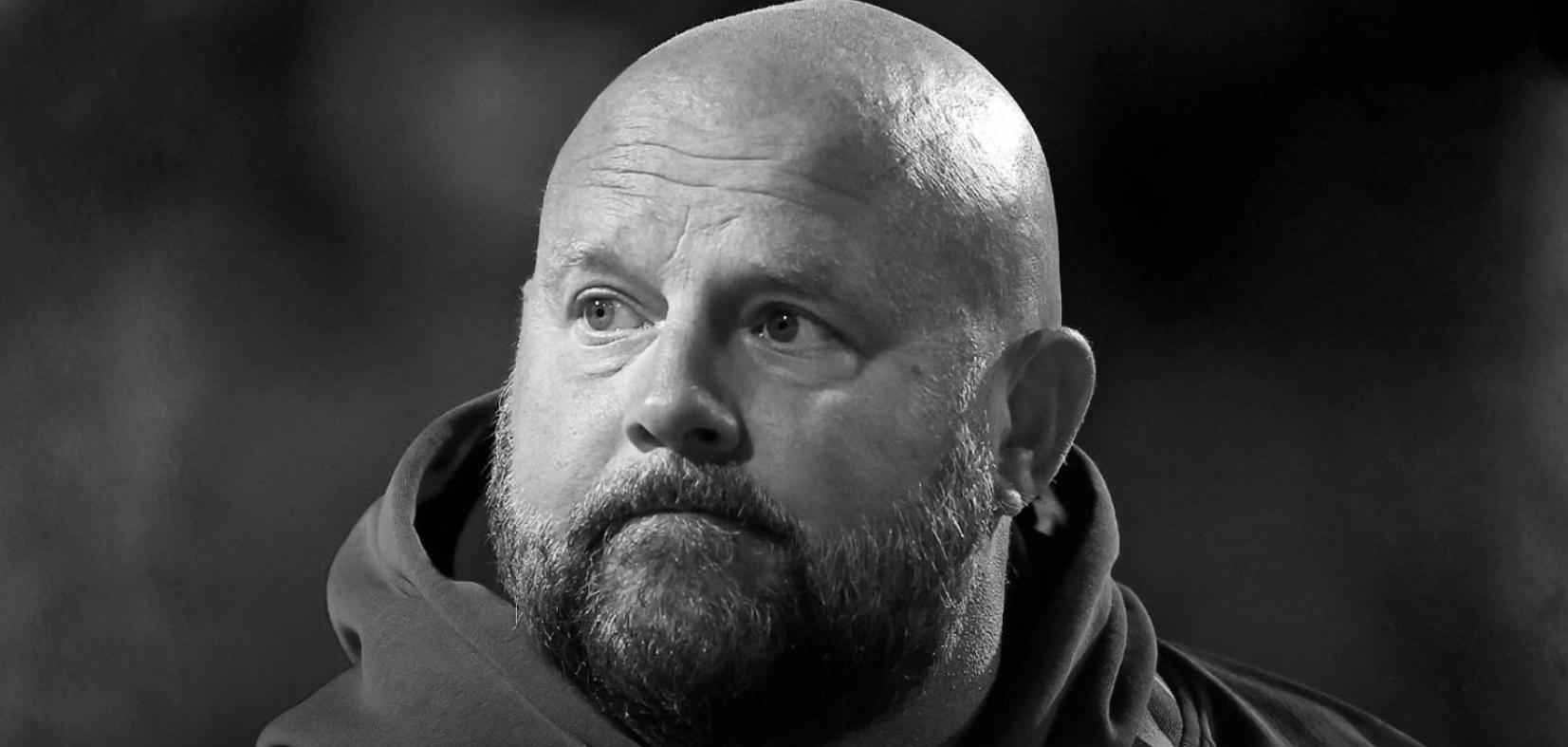
The Dart era started off with a bang as he led the team to an upset win over the Los Angeles Chargers, 21-18. But the joy that should have followed that win was dampened by the season-ending injury to star wide receiver Malik Nabers. This injury would be just the beginning for the relationship between the Giants and the injury bug. Following the loss of Nabers, the Giants would lose to the New Orleans Saints the following week. With the loss to the Saints looming, the Giants had a short turn-around before facing the Philadelphia Eagles at home at MetLife Stadium. The Giants shocked the reigning Super Bowl champion with a dominant victory 34-17. They were led by Skattebo, who had a breakout game, rushing for 98 yards and three touchdowns.
Fans immediately took to the rookie duo of Dart and Skattebo and believed they would be key pieces in the rebuilding process.
If only the highs could last. In their next game they faced off against the Denver Broncos and brought their A game. With a 19-0 lead going into the fourth quarter ESPN had them at a 92.5% win probability. What followed was the Broncos completing a historic comeback, erasing their 19-point deficit to win 33-32 on a last-second field goal. Their victory set two NFL records: It was the largest fourth-quarter comeback by a team that had been shut out for three quarters, and it marked the first time since the 1970 merger that a team overcame an 18-point deficit with under six minutes left to win in
regulation. Because of course.
The next week they faced the Eagles again, looking to sweep them for the first time since 2007, instead they were gashed by Eagles running back Saquon Barkley, who carved up the Giants’ defense on his way to a 150-yard rushing performance, his best mark of the season. Even worse than the loss of the game was the loss of Skattebo who suffered a severe right ankle injury which was quickly ruled as season ending.
After an easy loss to Christian McCaffrey and the San Francisco 49ers, the team headed to Chicago to play the Bears and receive another gut-punch. While up 17-7, the Giants were marching down the field as the third quarter was nearing its end when Dart was injured when he took a hard hit on a scramble that
resulted in a fumble. He was later evaluated for a concussion and ruled out for the rest of the game early in the fourth quarter. Wilson was forced back into the game where he was just as ineffective as he had been at the start of the season, allowing the Bears to come back and win 24-20. With Dart set to miss multiple weeks the Giants front office made a big move and sent Head Coach Brian Daboll packing.
Daboll’s career with the Giants started off strong with being named the 2022 NFL Coach of the Year in his first year leading the Giants. He helped them to nine regular-season victories, clinching the team’s first playoff berth in six years and its first postseason victory in 11 seasons. But that was about it. In his three and a half seasons, the Giants compiled a record of 20-40-1, including a 2-8 record in 2025. Daboll’s early results were never repeated and the team often looked to be getting progressively worse under his leadership. I’m honestly surprised that this didn’t come sooner, we can thank Daniel Jones for that, I suppose. Overall, the Giants are going to be rebuilding once again next season after another poor showing. They do have some solid pieces on offense and defense, but they will need to stay healthy if the Giants want to take a big jump under a new coach next season.
By KURT SIPPEL STAFF WRITER
A moment of silence was taken at every NFL stadium last week as the league was rocked by a tragedy. Dallas Cowboys defensive end Marshawn Kneeland was found dead with an apparently self-inflicted gunshot wound at the age of 24 on Nov. 6.
Three hours before he apparently took his own life, Texas Department of Public Safety troopers attempted to stop him for a traffic violation. Authorities found Kneeland’s car crashed after a chase. Officers began searching for Kneeland when word spread that he was in distress.
Kneeland texted goodbye messages to his family group chat along with his girlfriend, Catalina Mancera, who subsequently contacted the police, according to dispatch audio, and told them that he was armed and had a history of mental illness. Kneeland’s body was found in a portable restroom not far from the scene of the crash in Frisco, Texas. Days before, Kneeland scored
his first career touchdown on Monday, Nov. 3, and was in the middle of his second season in the NFL. Kneeland was a second-round pick out of Western Michigan University (WMU), and after missing part of his first NFL season with an injury, he played in seven of the last nine games for the Cowboys, recording one sack, 15 tackles and six quarterback pressures.
“It is with extreme sadness that the Dallas Cowboys share that Marshawn Kneeland tragically passed away this morning,” the Cowboys wrote in a statement on Thursday. “Marshawn was a beloved teammate and member of our organization. Our thoughts and prayers regarding Marshawn are with his girlfriend Catalina and his family.”
Around the NFL, teams took a moment of silence to honor Kneeland. The NHL’s Dallas Stars also held a moment of silence before their game against the Anaheim Ducks on Thursday.
Former 11-year NFL cornerback Richard Sherman spoke directly to the camera
on Thursday Night Football, challenging players to check in on their teammates.
“When you’re playing, you almost feel invincible,” Sherman said. “You feel like, ‘Hey, I cannot be vulnerable in that way because that will be a weakness.’ But you can be vulnerable, you can give yourselves an opportunity to get the help that you need, and still be a great football player. I challenge you guys to go out there and make sure you get the help you need.”
In the wake of Kneeland’s apparent suicide, support for his family and friends has been pouring in from all over. As a native of Grand Rapids, Michigan, he attended WMU in 2019, where he recorded 149 tackles, 13 sacks and three forced fumbles in 38 games. On WMU’s senior day, they honored Kneeland by holding his No. 99 jersey and wearing helmet decals that read “MK 99.” His number was also painted on the football field.
During a radio interview with Dallas-Fort Worth station 105.3 The Fan, Jerry Jones, the Cowboys owner, broke
his silence about Kneeland’s death and revealed how the Cowboys will honor Kneeland.
“He was very unique in his passion for the game and of course the saddest thing for someone like me is the fact that he was only 24 years old,” Jones said. “You think about all of the time that we’re going to miss him, and he’s going to be missed by the people around him, he was just getting started.”
Jones then discussed how the Cowboys would go about honoring Kneeland in their next game after their bye week. The Cowboys will wear a special decal on their helmets for the remainder of the season.
The Cowboys also wore a t-shirt honoring their teammate during warmups on Monday Night Football on Nov. 17. They will wear them again when they play at AT&T Stadium for the first time since Kneeland’s death against the Philadelphia Eagles on Nov. 23.
Cowboys cornerback Josh Butler shared a photo showing him leaving flowers on his locker with the caption “love
you dawg.” Dallas quarterback Dak Prescott shared an emotional statement about Kneeland.
“This is a pain that you don’t wish upon anybody. You wish none of us had to go through this. You wish Marshawn didn’t have to go through what he went through. And [I’m] just thankful for each moment we have in this life and don’t take it for granted — and hug and love on those that you do,” he said.
Kneeland will be remembered around the NFL and around the entire sports community forever and will serve as a lesson for athletes, professional or otherwise. You should always check in on your teammates and the ones you love. Tragedies like this should never be met with a sense of indifference.
If you or anyone you know is suffering from mental health issues, make sure that you go and get help. If you are struggling with suicidal thoughts or experiencing a mental health crisis, please call or text 988 or chat at 988lifeline.org for free and confidential crisis counseling.
By GIANNA TETRO STAFF WRITER
Playoffs are supposed to test a team’s resolve, determination and dedication. Fordham University answered that test twice in four days, first with a shootout victory over the Saint Joseph’s University Hawks, followed by a brutal semifinal loss to the University of Dayton, ending their 2025 season. Two games, two emotional extremes, one team that never stopped fighting.
From the opening whistle, Fordham looked sharp, energetic and determined to control the match. They pressed high, kept the Hawks pinned in their defensive half for long stretches, and dictated tempo. By the end of 110 minutes, the Rams had outshot Saint Joseph’s 24–14, but margins remained razorthin.
At several moments, Fordham came inches from breaking the deadlock. In the 63rd minute, Fordham generated its cleanest chance of the night. Senior Daniel D’Ippolito pressed forward and unleashed a shot from outside the box, forcing the Hawks’ goalkeeper into the save of the night.
On the other end, the Hawks nearly stole one in the 76th minute on a close-range strike that seemed destined for the back of the net until goalkeeper Tristan Stephani threw out a reflexive save, the kind that changes the emotional temperature of a postseason game.
That grounded the Rams through the grueling scoreless draw, and it became essential once the match moved into penalties. The Hawks struck first. Fordham missed. It was a start no team likes to see, the kind that can unravel one. But Fordham showed the exact resilience they have all season long.
Through the second and third rounds, both sides traded makes. The fourth round became the pivotal moment: the Hawks pushed their attempt wide, offering Fordham a sliver of hope. Graduate student Lukas Gatti,
calm under pressure, buried his shot to tie the shootout.
Then round five arrived, and everything froze. Both teams converted again, setting up a final, winner-takes-all moment.
Stephani stepped to the line, facing yet another Hawk’s shooter in the biggest moment of the season. He guessed correctly, dove low and smothered the ball.
Moments later, graduate student Erik Krohnstad delivered the knockout blow, smashing home his penalty to send the Rams into the semifinals. Players sprinted toward Stephani, the stadium erupted and the Rams had earned a gritty, emotional, unforgettable postseason win.
Stephani attributed his success in the shootout to the whole season.
“We’ve had some very close games that ended in one nil, maybe ended in a tie and it’s really just the resilience that brings it all together,” Stephani said. “[I’m] proud of everything that we accomplished, you know prior to that moment, and just coming in confident and calm to you know take whatever was thrown at me.”
However, the semifinal told a different story, but one no less dramatic. Fordham entered the match knowing Dayton was the two-time defending champion and a team built for the postseason. Their regular-season meeting ended in a 1–0 Fordham win, but both sides expected something much tighter this time. In the 27th minute, the Flyers struck first. Off a corner, Martin Bakken rose above the pack to redirect a header into the net.
For the first time all postseason, Fordham trailed in open play.
The Rams responded with pressure of their own. Their movement in the midfield grew more fluid and they generated seven shots on goal. All they needed was the right bounce, and in the 74th minute, they achieved it. A loose ball rolled outside the box, and freshman Daniel Lang hammered in a 20-yard strike that rocketed past the Dayton keeper.
But before the energy could settle, Dren Dobruna cut inside
and ripped a low drive to the far post, restoring Dayton’s lead. The sudden shift forced Fordham to chase the game again.
Despite the setback, the Rams didn’t fold. They fought through every second of the closing stretch, even while playing down a man due to a red card on D’Ippolito.
Stephani, who finished with six saves against the Flyers, described why the team stayed locked in even under immense pressure:
“We wanna fight for each other. We wanna fight for the team. We’re fighting … it’s all out there, putting our bodies on the line is what motivated us to push through and keep fighting till the ending whistle,” he said.
Regardless of how the season ended, Stephani spoke to why this team worked, how they earned their postseason run and why they will continue to work for seasons to come:
“Something about the team … that the fans might not see, but makes me proud … is definitely the relationship we’ve built over these past couple months. There was a lot of newcomers, me being one of them,” Stephani said. “It was a very new team in terms of that sense, but we got along really well from the jump. You know we went through everything together, we stayed as a team through everything, the high, the lows, and that sort of not only helped us on but off the field.”
His words captured exactly why Fordham stayed competitive until the final minute. They created those chances. They just couldn’t find the equalizer that would extend their postseason.
Though Dayton eliminated them in the semifinals for the second straight year, this season felt different because this Fordham team felt different. They played with resilience. They played for each other. They took games deep into the margins because they trusted the margins. Ultimately, their story ended earlier than they hoped but not before they delivered two postseason performances that revealed the heart, unity, belief and hustle that defines this team.
Football Fordham 0
Georgetown 14
Men’s Cross Country NCAA Regional 29th
Women’s Cross Country NCAA Regional 35th
Men’s Soccer Fordham 0 Dayton 2
Men’s & Women’s Swimming & Diving (No Individual Scores)
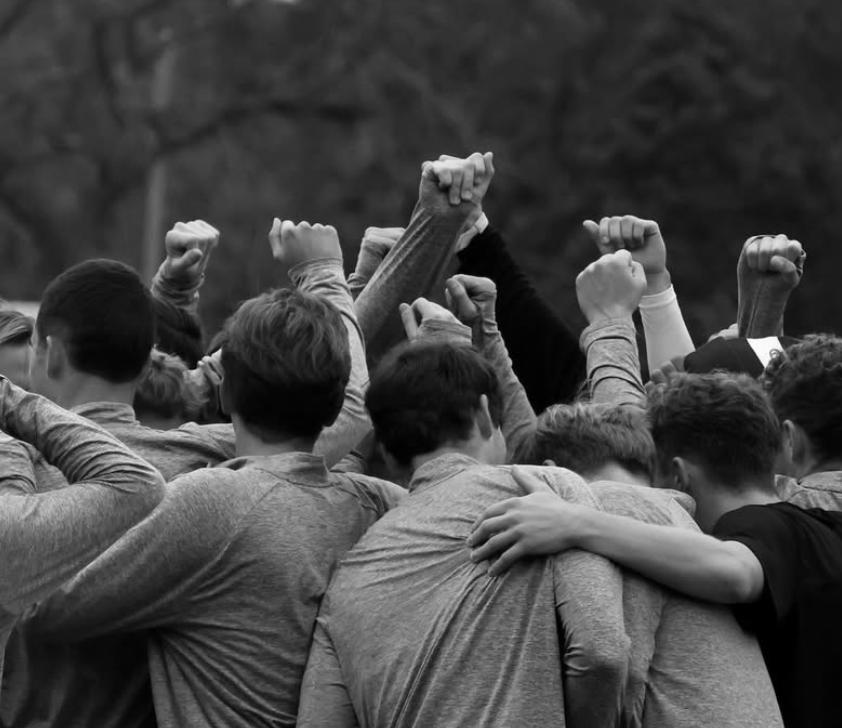
By IAN NELSON ASST. SPORTS EDITOR
Fordham University Women’s Basketball hosted Stony Brook University at the Rose Hill Gymnasium on Nov. 12. It was a close game throughout, but the Rams, led by junior gu-ard Alexis Black and graduate student forward Ornella Niankan defeated the visiting Seawolves 58-52 to close out their opening homestand with a 3-1 record.
Black dropped 20 points, six rebounds, four assists and two steals, while shooting 12-17 from the free-throw line as she drove relentlessly and frequently to the rim on the way to her third straight game with 20 or more points. Niankan tacked on 16 points and eight rebounds from the bench and senior forward Emma Wilson-Saltos added six
points and 10 rebounds.
The deciding factor in a very close game was Fordham outrebounding Stony Brook 45-33. The Rams also grabbed 15 offensive rebounds and scored nine second-chance points.
In addition, Fordham’s defense held Stony Brook to only 17.6% shooting from beyond the arc and 29.1% from the field.
Fordham struggled out of the gate, falling behind 15-8 at the end of the first quarter. But the Rams fought back in the second quarter, using a strong 10 minutes on both ends of the floor to outscore the Seawolves 20-10, and narrow the deficit to 28-25 going into the locker room.
The Rams then outscored Stony Brook 15-10 in the third quarter to usurp the lead heading into the fourth. Fordham expanded the lead
to 53-50 before going on a 5-0 run to make it a 58-50 game with 13 seconds remaining. The Seawolves scored one more basket, but the Rams held on for the 58-52 win.
In their next game the Rams headed up to Buffalo University to play their first away contest of the season. While they did manage to keep Buffalo to just 35% shooting from the field, the Rams only shot 29% on their way to the 67-59 loss to the Bulls.
The Rams were led by three players in double figures, WilsonSaltos, who had 13 points, eight rebounds and two steals. Niankan tacked on 13 points and seven rebounds and Black chipped in as well with 13 points, four assists, six steals and two blocks.
Niankan pulled down five offensive, pacing the team as they grabbed 15 total offensive rebounds and turned them into
seven second chance points. Fordham forced 23 Buffalo turnovers while committing 17 themselves in Sunday’s game, a season low. The Rams turned those takeaways into 23 points on the other end of the floor, with Black’s six steals leading the way for Fordham.
After falling behind 11-9, Fordham went on a 7-0 run with 1:17 left in the first quarter, culminating in a three from sophomore guard Anastasija Veljovic, to take a 16-11 lead to end the first. Fordham did most of its first quarter damage in the paint, scoring 10 of its 16 points close to the basket. This would continue to be the case as the Rams shot an unfortunate 3-23 (13%) from three-point range. The Rams were unable to maintain their lead in the second quarter and entered halftime trailing 28-23.
Buffalo continued to increase its lead after halftime, building a 42-33 advantage before Fordham went on a 7-0 run to trim its deficit to 42-40 with 3:32 to go in the third. Buffalo countered and stretched its lead to 48-45 heading into the fourth. Fordham took advantage of five Buffalo turnovers in the quarter, scoring seven points off of takeaways. Fordham went into the fourth quarter with newfound energy, going on a 6-0 run, finished off by a Niankan layup, to seize a 51-48 lead with 7:40 to go in the contest. But Buffalo quickly reasserted control, outscoring the Rams 19-8 the rest of the way to hand Fordham the loss. Next up the Rams will make the short trip to South Orange, New Jersey for a meeting with Seton Hall University on Thursday, Nov. 20 at 7 p.m.
By JOE HENRY ASST. SPORTS EDITOR
In the world of men’s college hoops, no team has had a start quite like Fordham University’s.
The Rams entered the 2025 season as the projected last-place finishers in a loaded Atlantic a10 (A-10) conference. However, first-year Head Coach Mike Magpayo and a roster full of transfers carrying 39 years of Division I experience are eager to prove otherwise. The road to proving that has been anything but smooth.
The 2025 campaign opened with a stunning 72-61 loss to the New Jersey Institute of Technology (NJIT), dropping Fordham 73 spots in the KenPom rankings and sending the A-10 universe into a frenzy. NJIT was ranked 356th; Fordham was ranked 183rd.
“Communication was the biggest culprit,” Magpayo said. “We have a quiet team; the Rose Hill Gym is loud.” At times, the packed crowd appeared suffocating for a unit featuring 11 newcomers trying to develop chemistry in real time.
The Rams have spent the next two weeks trying to shed the reputation the loss created. Communication improved — along with everything else — in game two, a 106-37 shellacking of Mt. St. Mary’s College (Division III).
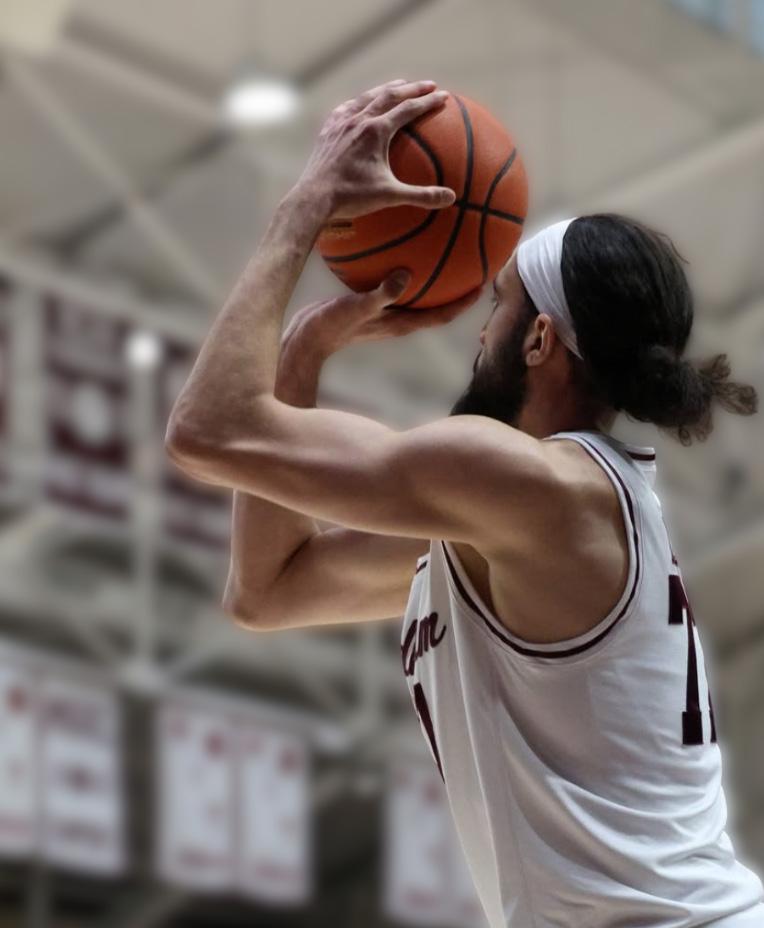
Facing a lower-division opponent, The Rams showed pride in what became their biggest margin of victory in program history. The allaround display, led by graduate forward Zarique Nutter’s 19 points, was a “prove it” moment.
“We just had to prove that we can play intense basketball for 40 minutes,” said Magpayo.
After a rollercoaster first week, Magpayo said he was looking for a moment that would unite his team. Graduate guard Dae Dae Reaves delivered that moment.
Facing a first-half deficit against Wagner College last Tuesday, Reaves willed the Rams to victory. With the score knotted at 61, Reaves dribbled 25 seconds off the shot clock before driving left, stepping back and drilling a left-elbow jumper to give the Rams the lead with
six seconds remaining. After Wagner missed a game-winning bid, the Rams relished what was, for everyone but Reaves, a nail-biter.
“I feel like I can make that shot 10 times out of 10,” said Reaves postgame. “Good night, off-night, they want me to take that shot each and every night.”
Friday’s faceoff with Iona University was the Ram’s toughest test yet. The matchup renewed a decades-long rivalry, one that ran for 27 straight seasons before going dormant after 2006.
Its grand return was engineered by Magpayo and the Iona University Gaels’ Head Coach Dan Geriot, old friends who coached and lived together at Campbell University in the mid-2010s — Magpayo even officiated Geriot’s wedding. After Geriot spent 10 years in the NBA and Magpayo built a college resume, they reunited for a 76-71 shootout in favor of Geriot’s Gaels.
The matchup was personal for Reaves, who led Iona to a conference championship appearance last year. After scoring just two in the first half, Reaves exploded, finishing with a season-best 22 points and four assists.
At his side was senior point guard Chris Henry, who drilled three first-half triples to break an 0-for-5 slump from downtown to start the year.
Behind its backcourt pairing, Fordham took a secondhalf lead in enemy territory — it was a “blackout” at the Hynes Center — before Iona graduate CJ Anthony scored three consecutive baskets to pull the Gaels away.
“It’s on me,” said Magpayo postgame. “I got outcoached by my boy Dan.” Magpayo added that the ball was “sticking” on the perimeter. Late in the game, the team routinely traded paint touches for contested offdribble threes. The Rams sorely missed a clutch-time option in Nutter, who sat with a groin injury.
The Rams took out their frustration Sunday evening against DIII Manhattanville. After a sluggish 37-point first half, the Rams dominated the final 20 minutes to secure a 96-62 win.
Reaves sat with a minor rib bruise while Nutter remained out. Neither was needed. In their place, graduate student Marcus Greene caught fire from a distance, draining five threes. Entering the night, Fordham’s 20% mark from three ranked bottom-12 nationally.
“Good to see Marcus — aka ‘Cap’ over here — finally knock the lid off the rim,” joked Magpayo postgame.
Elsewhere in the backcourt, Henry snagged a career-best seven rebounds, notching six assists for a fourth straight game, showing
why Magpayo dubbed him the team’s quarterback.
The Rams also got a career performance from sophomore returner Ryan Pettis. Pettis tallied a career-high five assists and four steals, hounding defenders and setting the tone in the second half.
Likening him to Russell Westbrook, Magpayo raved, “He’s willing to lay it on the line. He’s throwing his body around in practices … You’re going to get a shot every game because you’re willing to do that.”
Anchoring the team down low is junior Rikus Schulte, who leads the A-10 in rebounding after a 16-point, eight-rebound effort Sunday. While Fordham’s had a chaotic start, Schulte’s confident the team will prove its merit.
“I feel like we’re just getting more confident. We’re just learning to play with each other … We’re working in the gym every day. I think at some point it’s going to show up,” he said. Fordham will get a chance to show what it’s building toward against 3-1 Long Island University Thursday at 7 p.m. in the Rose Hill Gym — what Magpayo calls the team’s “Super Bowl” of non-conference play. If the Rams return Reaves and Nutter, the result will be their best gauge yet of where they truly stand.
By GRACE MCCARRON SPORTS EDITOR
In my other Overtimes during my year as Sports Editor, I used this outlet as one for writing about my own experiences with sports, or talking about particular teams I care about or something important going on in the sports world. This is my last Overtime as Sports Editor of The Fordham Ram, so I’m going to use it as a sort of call to action and tell anyone who isn’t already a hockey fan to become one sooner rather than later.
There have been few better times in history to click over to the NHL. As I write this in mid-November, the 2025-26 season is only about a month old, and there is already loads to talk about. There’s aging stars still kicking, and not simply still kicking but doing well. Alex Ovechkin, captain of the Washington Capitals, just became the first player in history to score 900 career goals. Entering their 20th season together, Sidney Crosby, Kris Letang and Evgeni Malkin of the Pittsburgh Penguins just set the record for a trio of teammates in North American sports. Longtime Los Angeles Kings captain Anže Kopitar is on his farewell tour. There’s exciting young stars on the rise. You might’ve heard the name Macklin Celebrini, the 19-year-old San Jose Shark
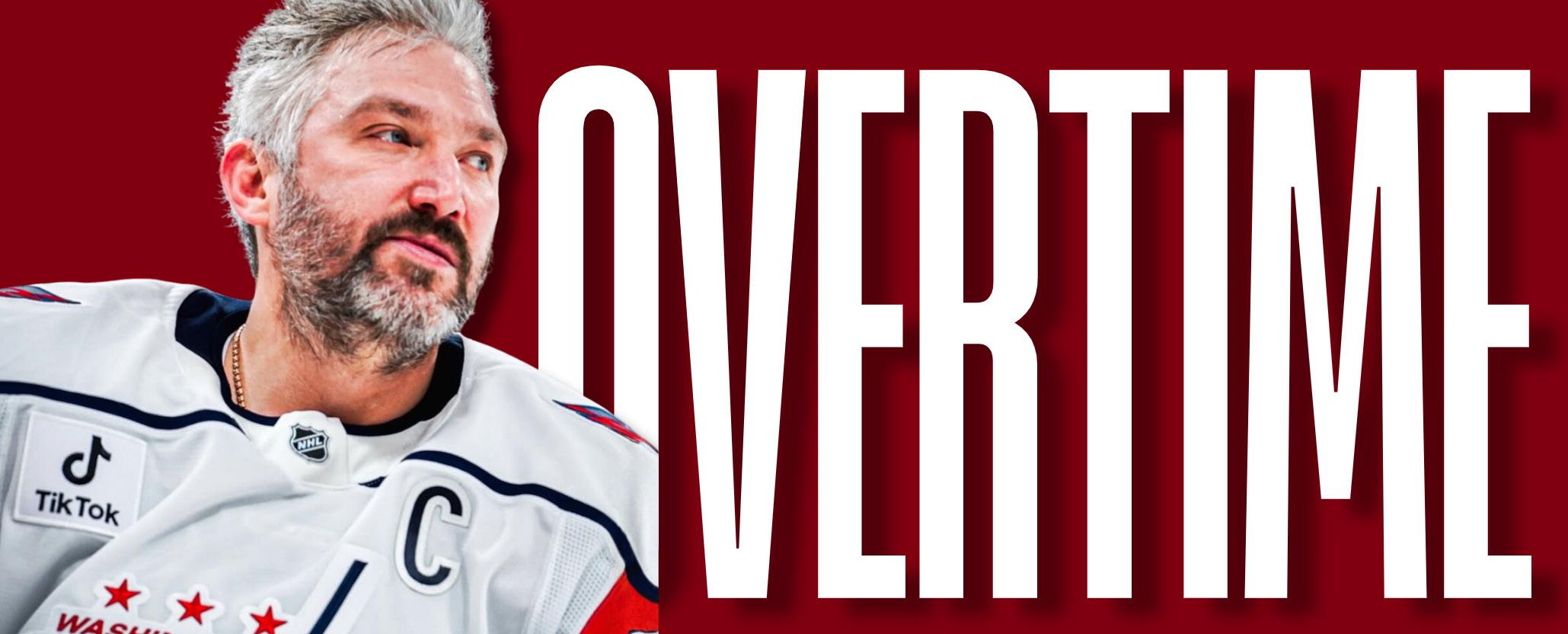
who has 27 points thus far this season, tied for secondmost in the league. The two people right behind him with 26 points? Two 20-year-olds, Chicago’s Connor Bedard and Anaheim’s Leo Carlsson. Of course, there are the star players in their prime. Edmonton’s Connor McDavid and Leon Draisaitl continue to be problems for anyone on the other side of the ice. In, Colorado, Cale Makar and Nathan MacKinnon are doing their thing as per usual. MacKinnon sits atop the points leaderboard with 33, leading the league in goals and tied for second in assists with Makar. There’s guys on new teams. Mitch Marner has 20 points thus far for the Vegas Golden Knights after leaving his boyhood team, the Toronto Maple Leafs, in a sign-and-trade deal in
June. New York Rangers fans might want to skip this next sentence, but Chris Kreider has had himself a nice start for the Anaheim Ducks after being traded there in June. These are only a couple of examples. Then there’s the rookies. I’d be remiss if I didn’t talk about some astonishing play from the new guys this year. The New York Islanders’ Matthew Schaefer seems poised to become a star in the league, sooner rather than later. He’s injected some energy into a Long Island squad that needed it after a lackluster 2024-25 season, and he can skate. If you haven’t seen him out on the ice, I recommend looking up some highlights or tuning in to the next Islanders game, because Schaefer is a joy to watch. Ivan Demidov of the Montreal Canadiens recently became the third-fastest player
to reach 10 assists in his career with 17 games, matching his teammate Lane Hutson. I’ve mentioned several Anaheim Ducks already, but Beckett Sennecke has also been a critical piece of Anaheim’s hot start to the year, which included a seven-game win streak in late October into November.
Part of the point of me mentioning all of these players is to show you the chaos that goes on around this league, day in and day out. It feels like every two days, there is a new guy on a hot streak, or a new team that’s gone totally hot or cold or some other crazy, unique thing that’s popping up.
Beyond the fantastic pool of players we are fortunate to watch each day, there are other reasons to start watching hockey. From a
viewing standpoint, hockey is excellent both in-person and on television, but many would argue that it’s the best sport to go see live.
The energy in the arenas and the pace of the game make it the perfect event to attend, even if you’re not locked in to everything going on in the hockey world. The tension that comes with a tied game as the clock runs down, or a skater going towards the net in a shootout is unmatched.
The international competition for hockey is incredibly strong. The first-ever 4 Nations Face-Off in February was an immense success: Its championship game between the United States and Canada was watched by 16.1 million viewers across North America, the mostviewed non-NFL game ever on ESPN+. And the best part? We’re about to enter the Winter Olympics this February, bringing in even more anticipation and discourse over who will be selected for each country’s team.
Hockey is very unique. It’s beautiful and artistic. I could go on for hours about the poetry of the game, but I will leave it at this: Now is one of the best times possible to start watching hockey, and it’s something that you won’t regret.